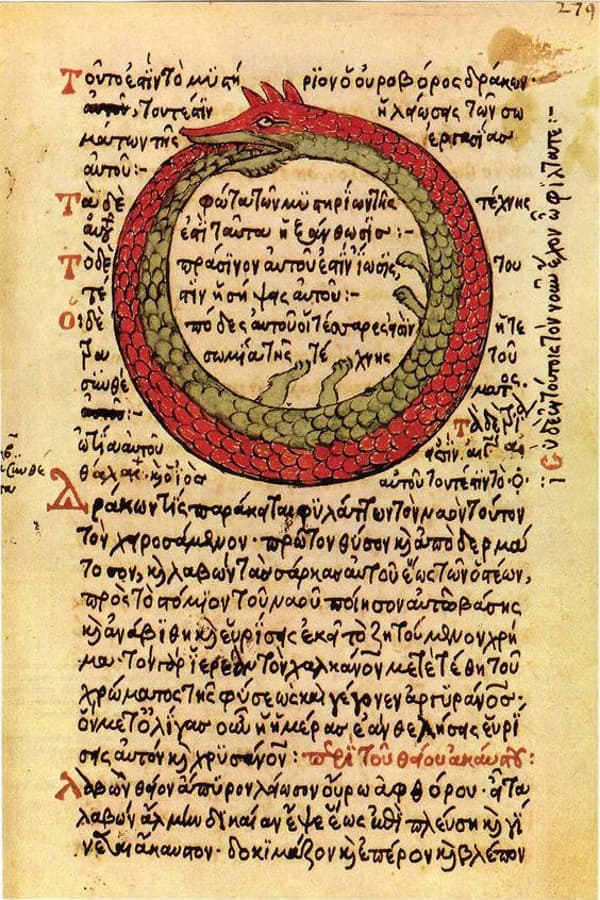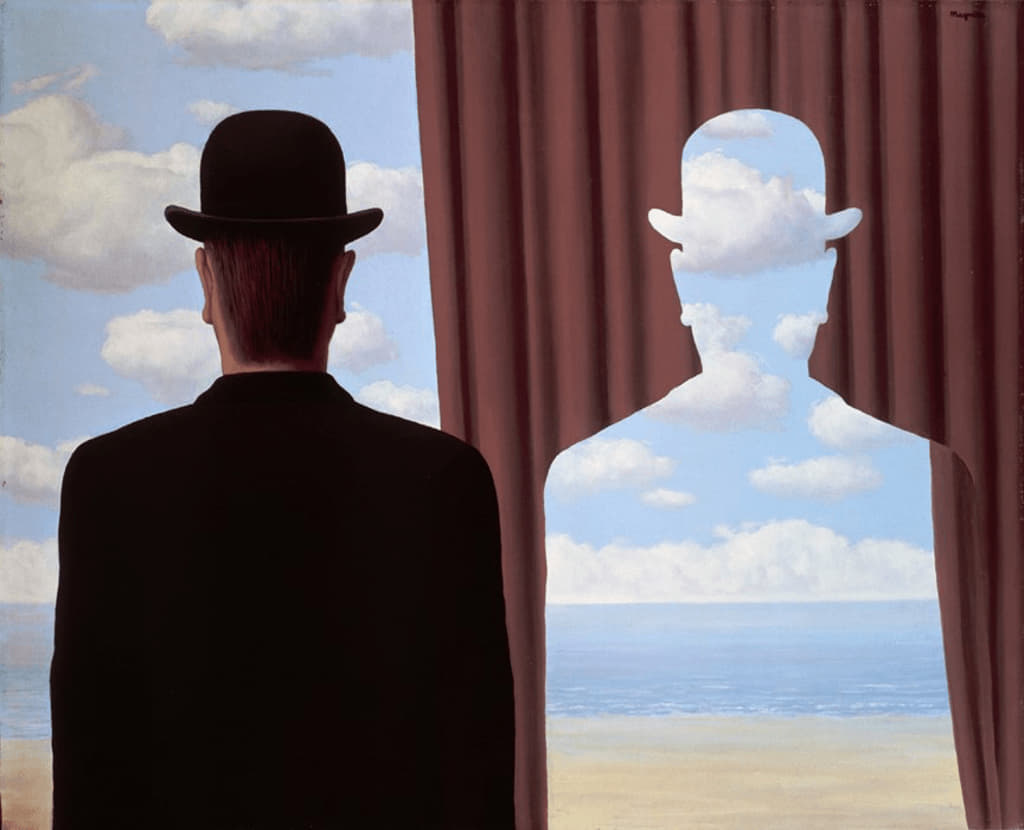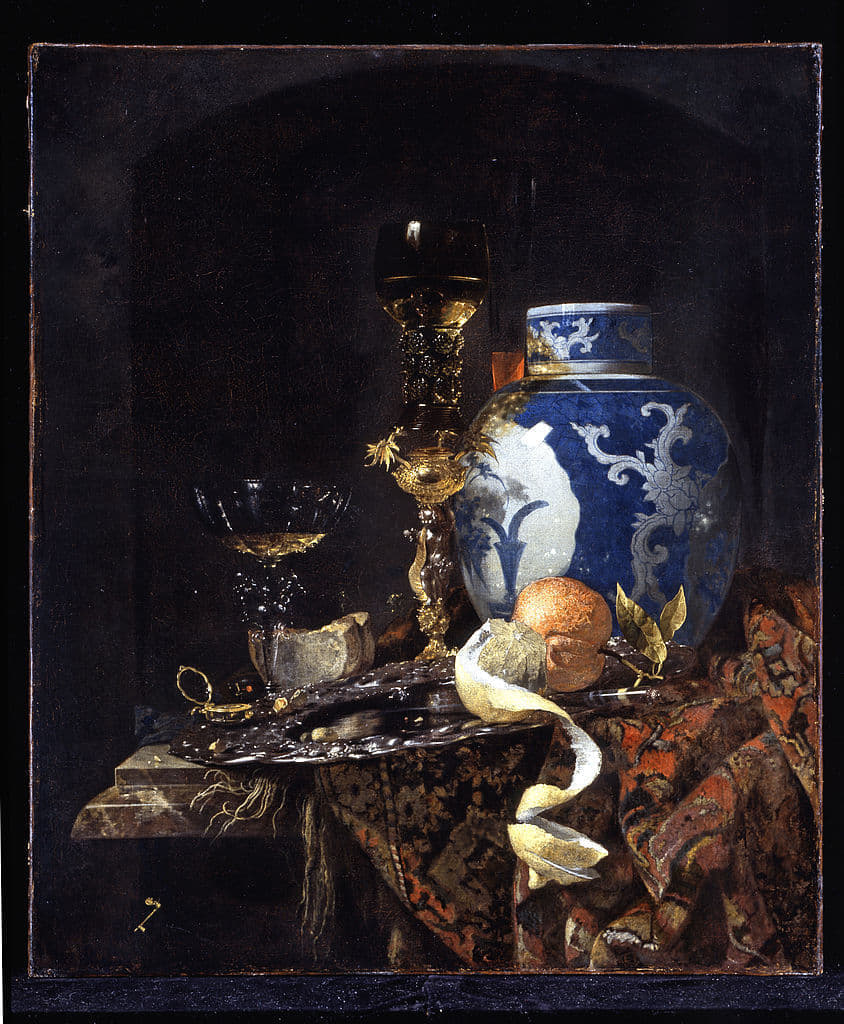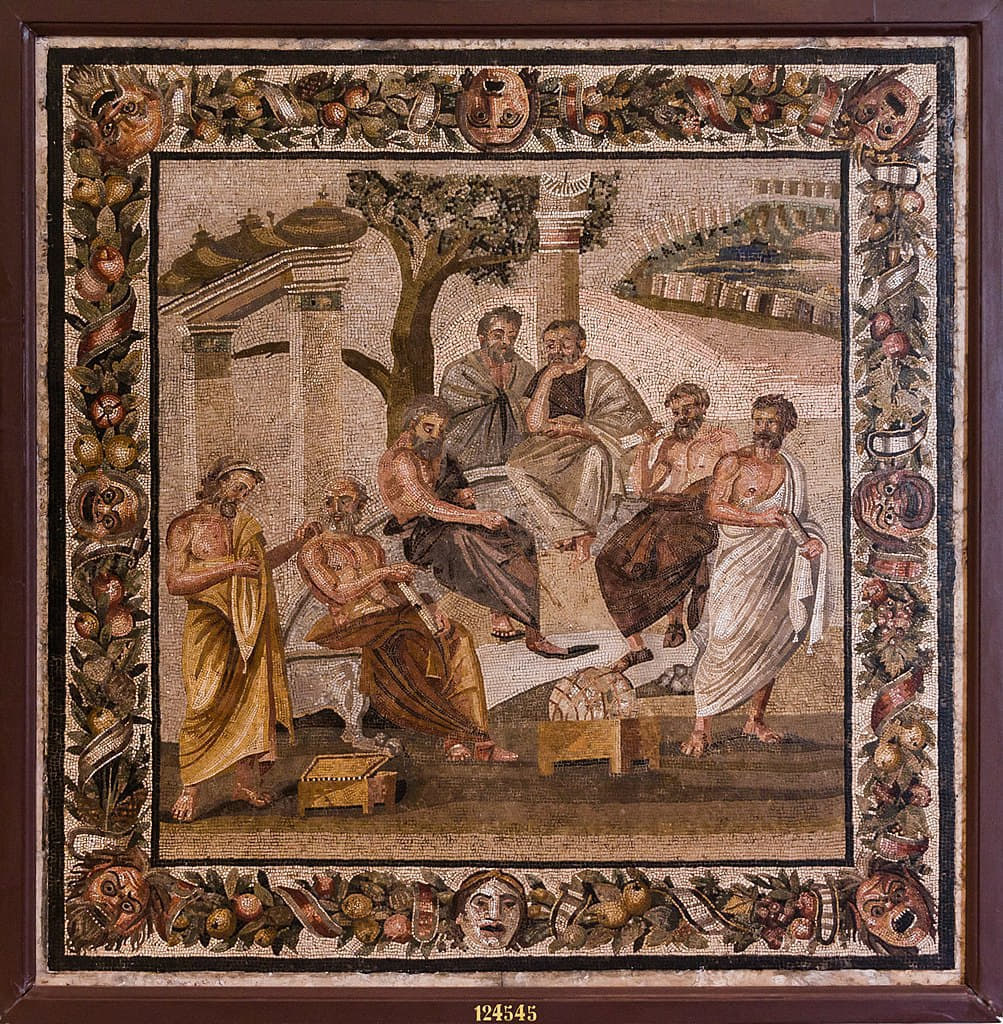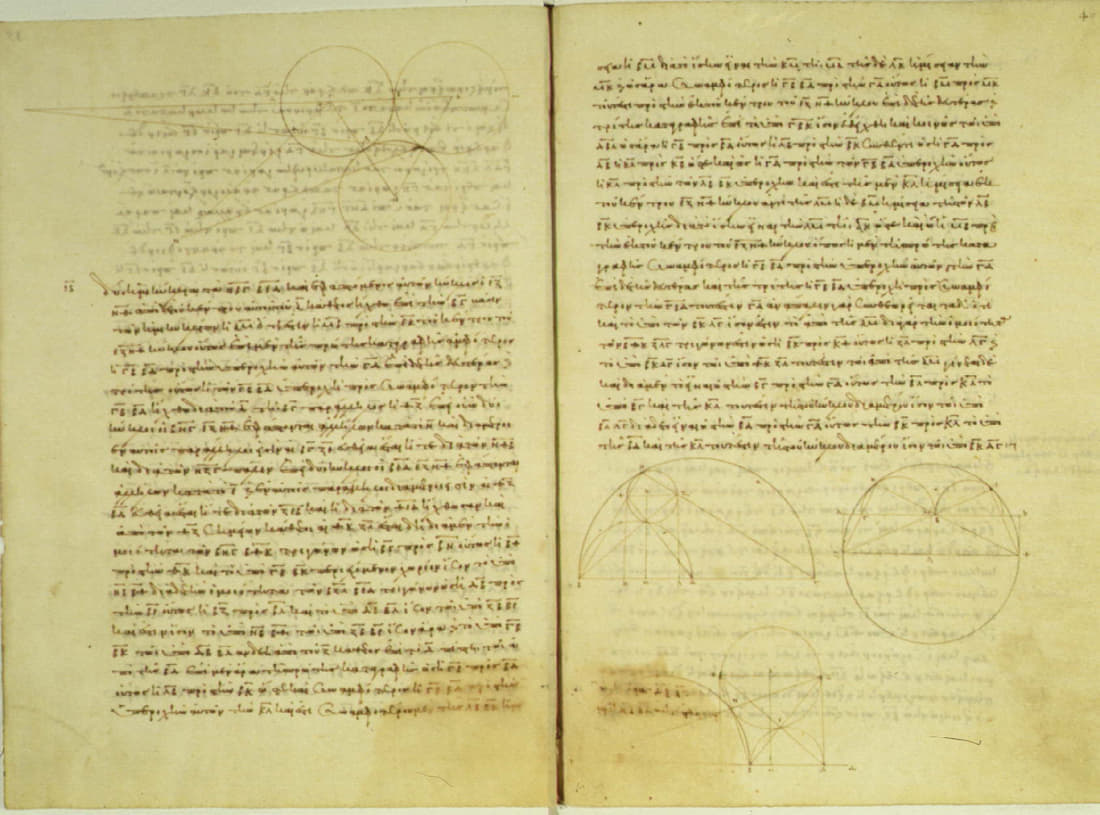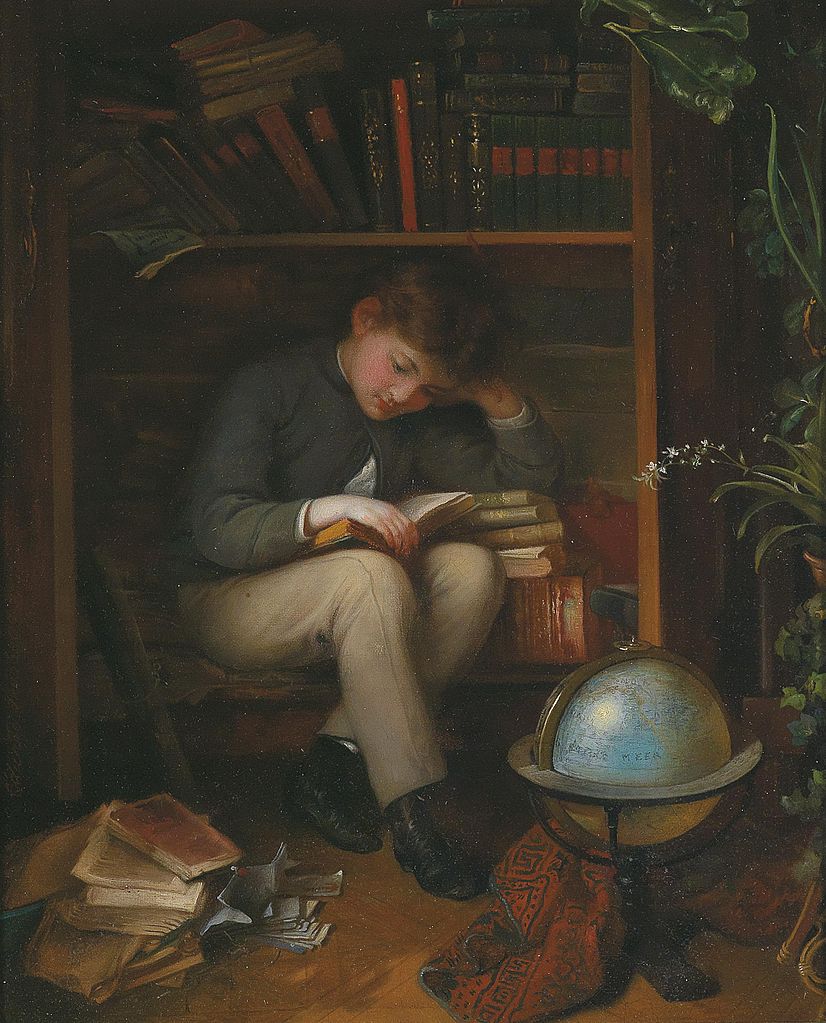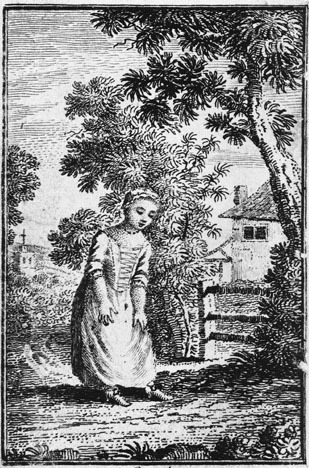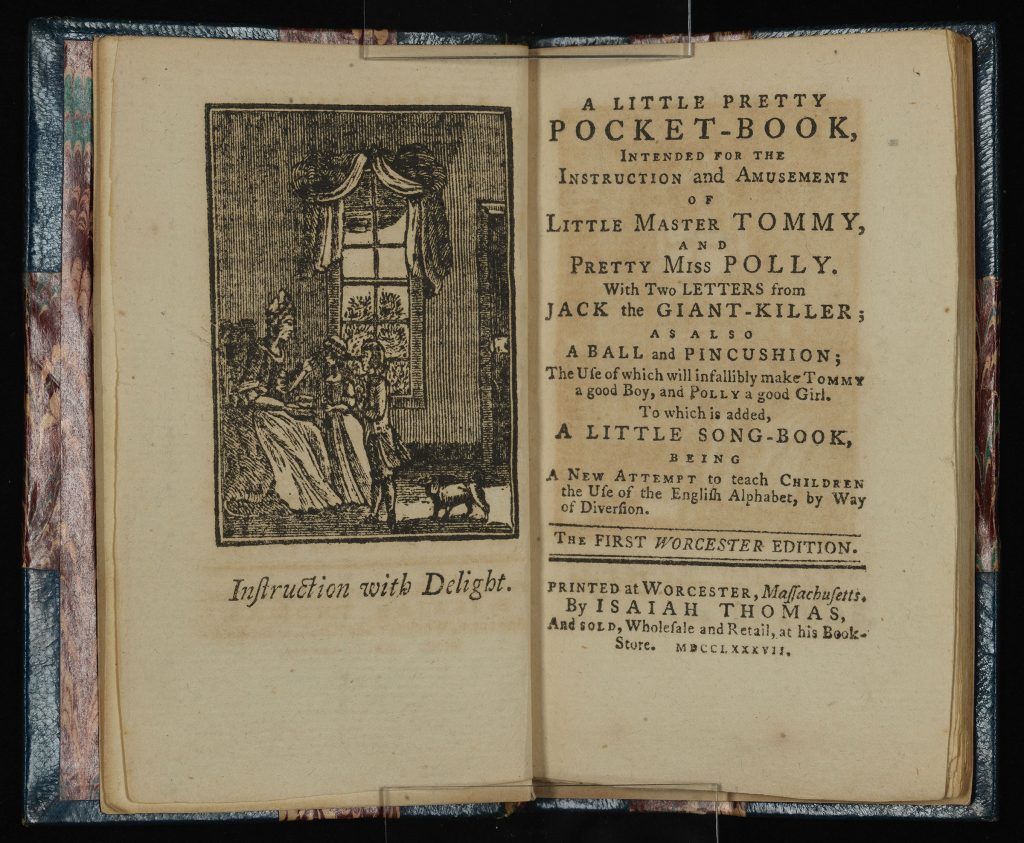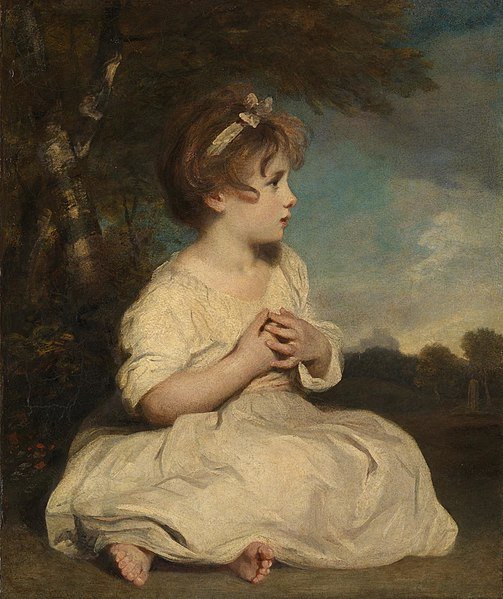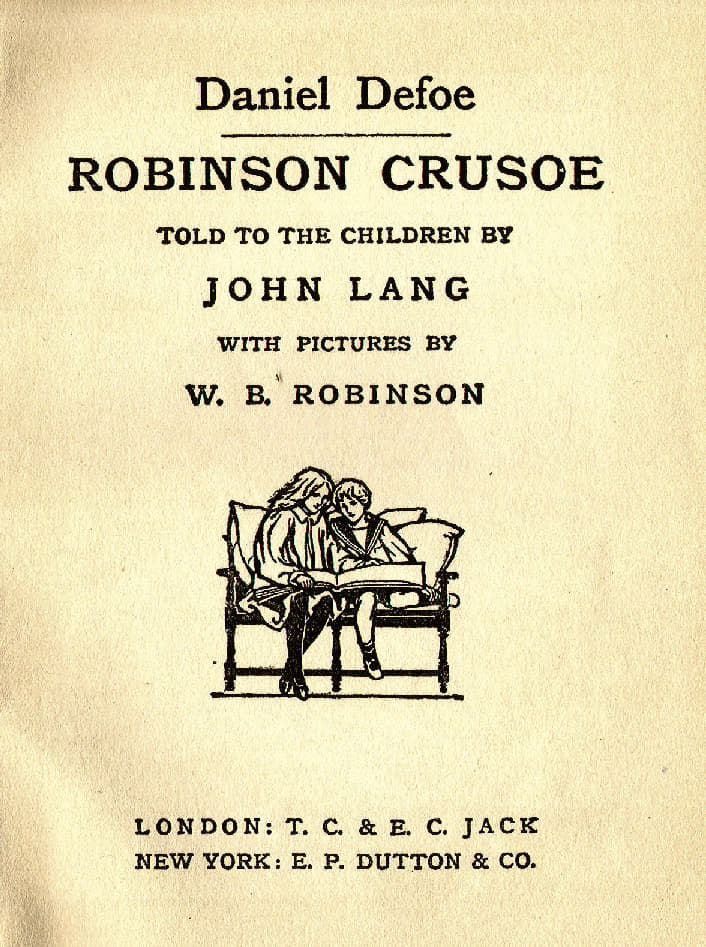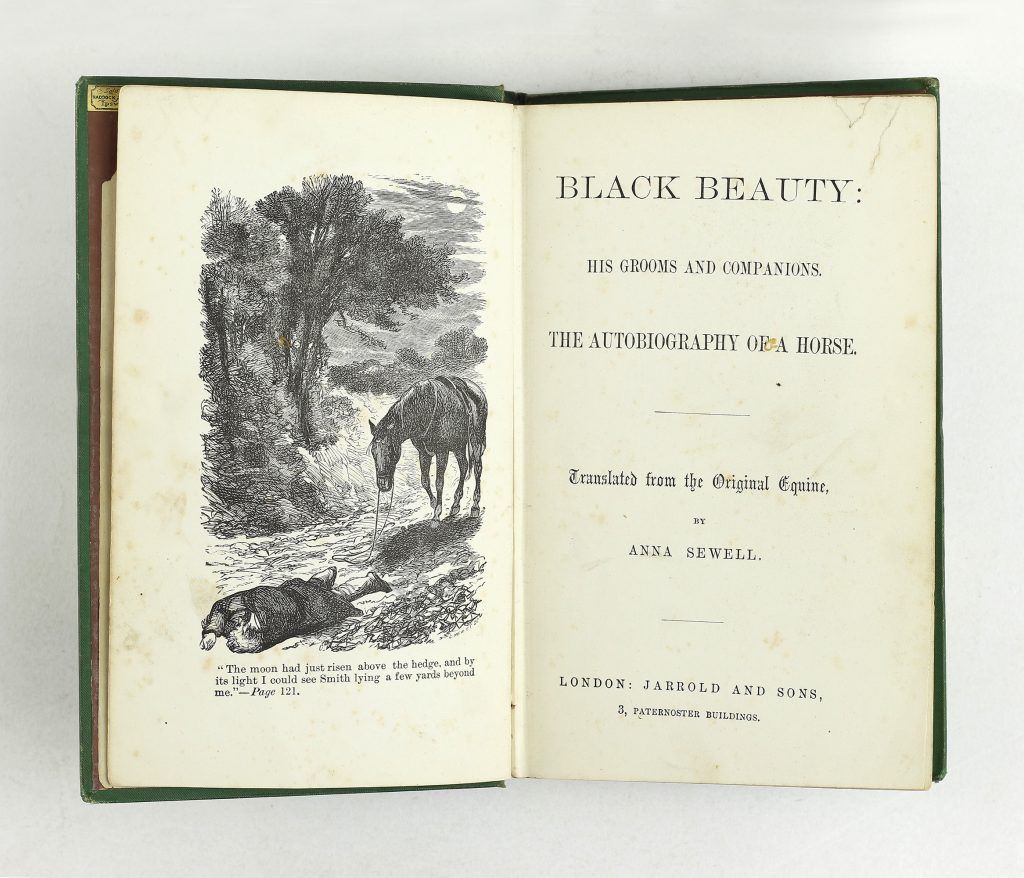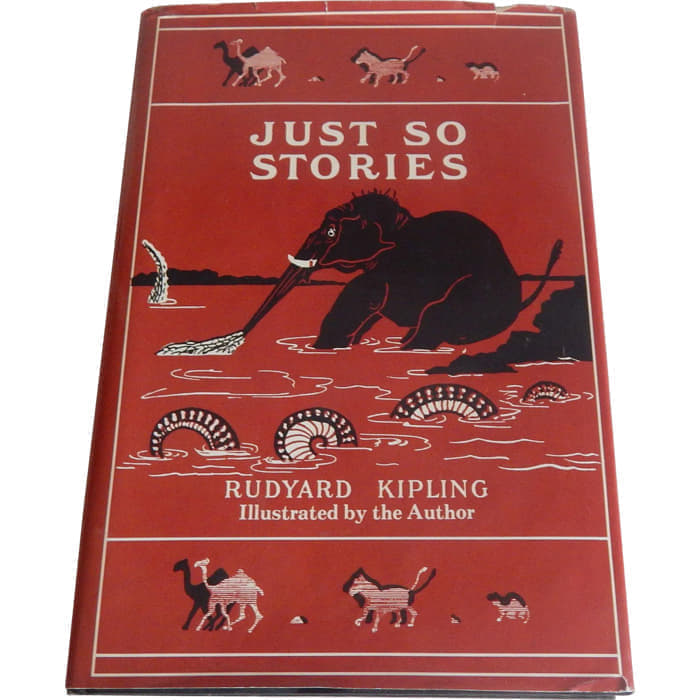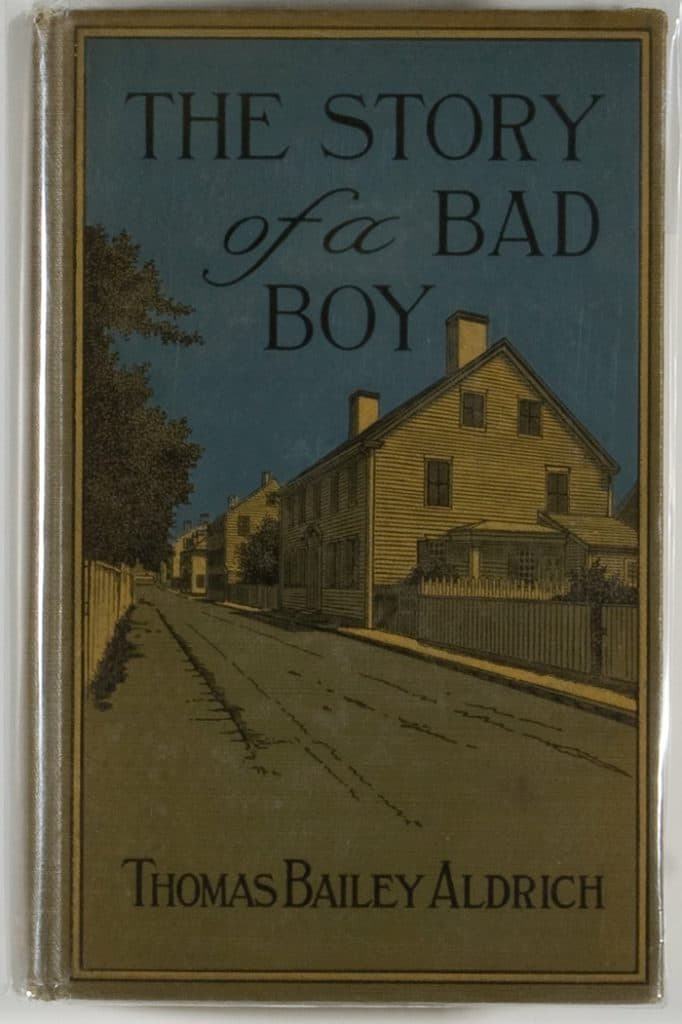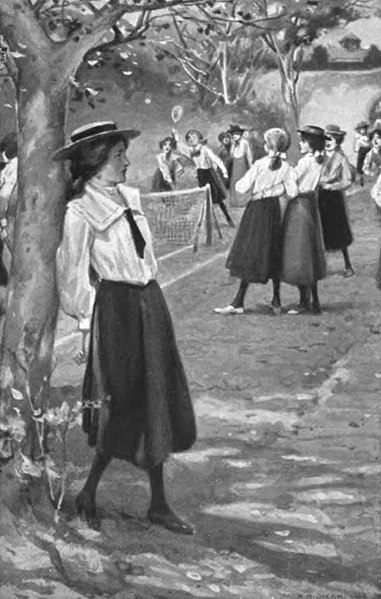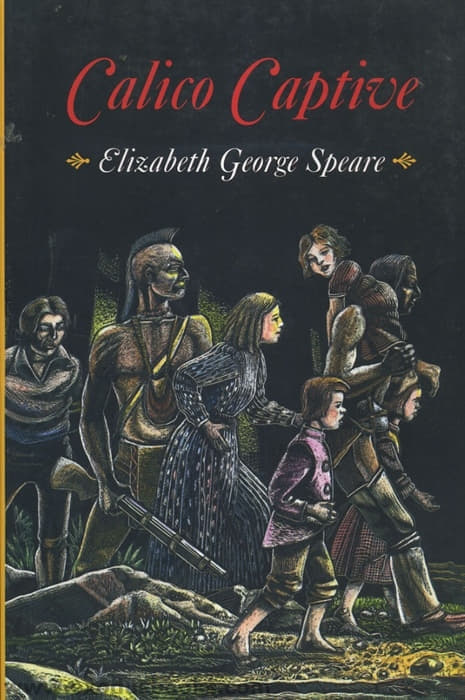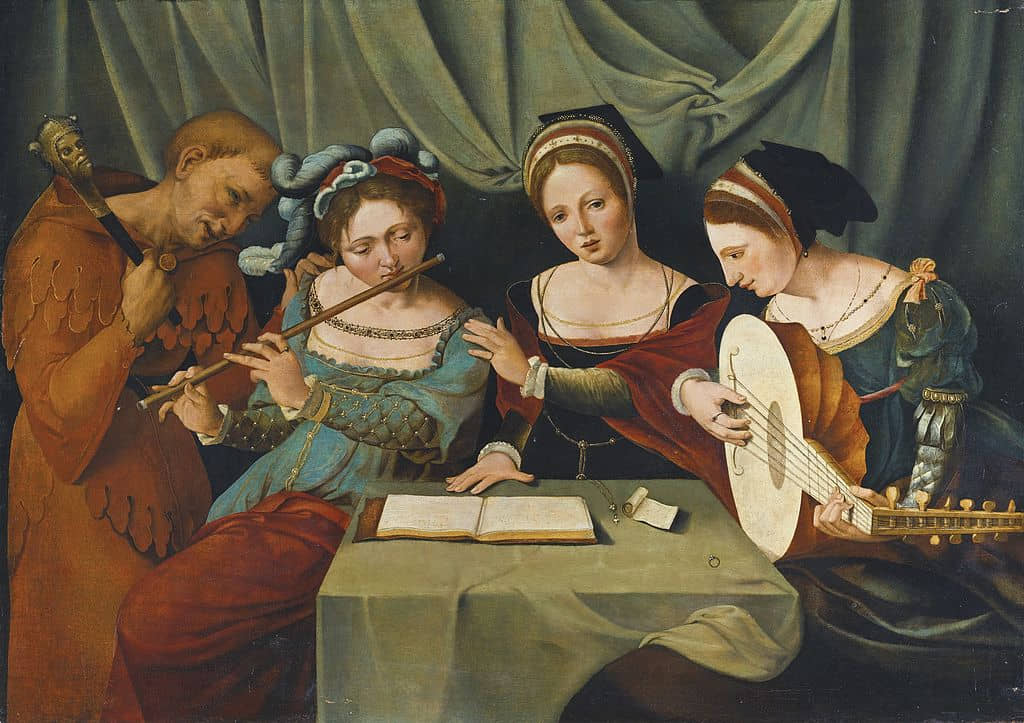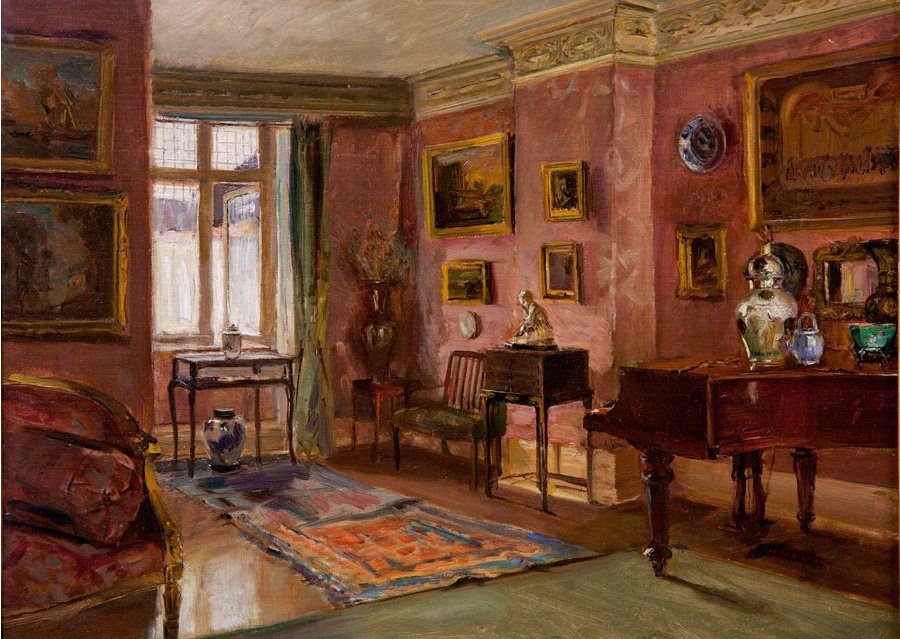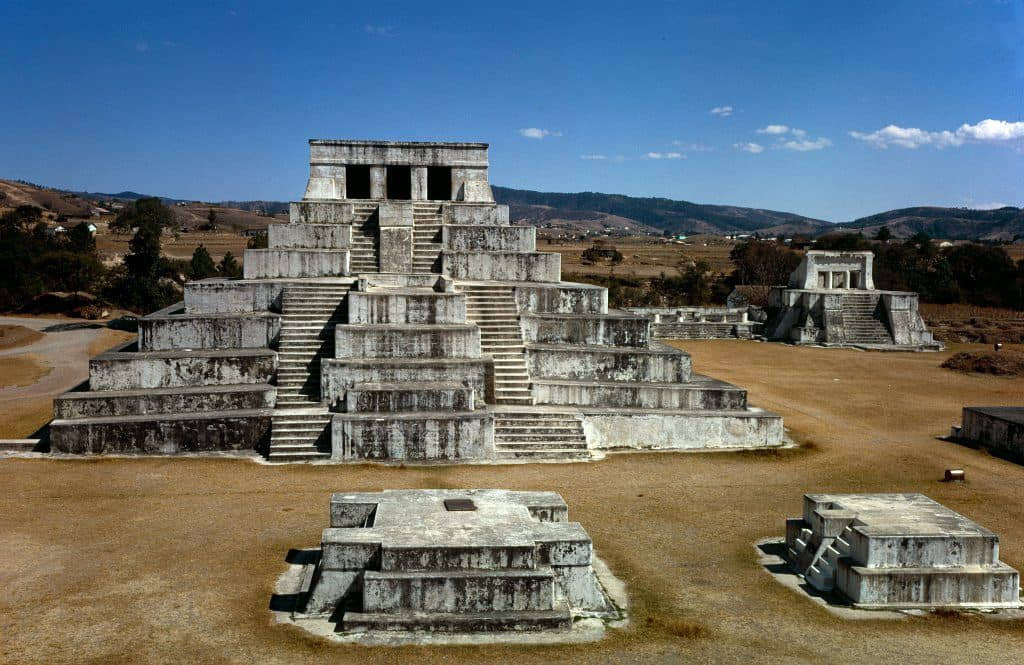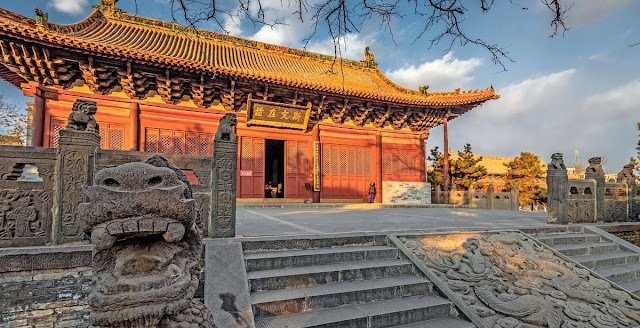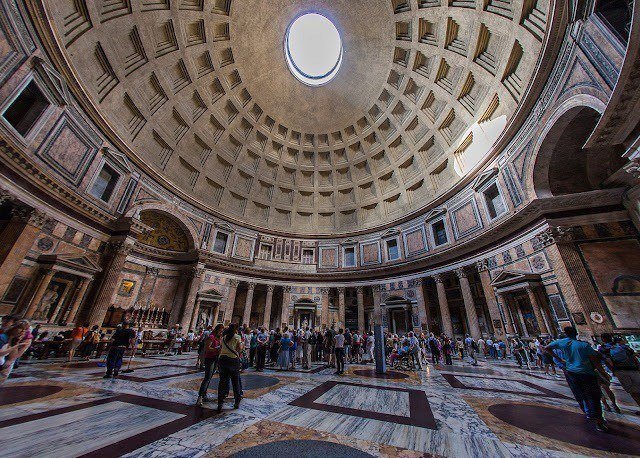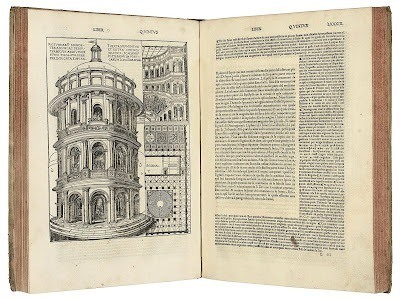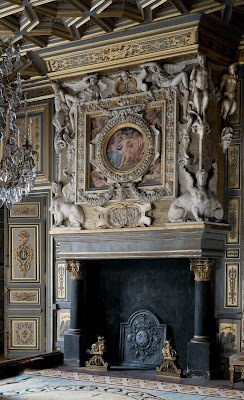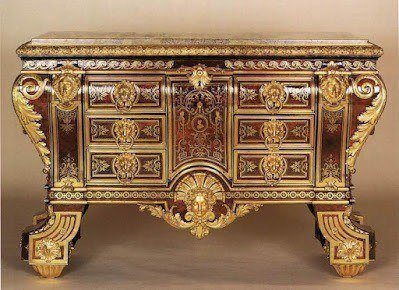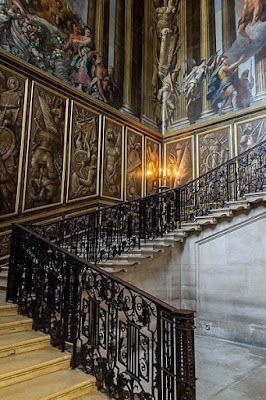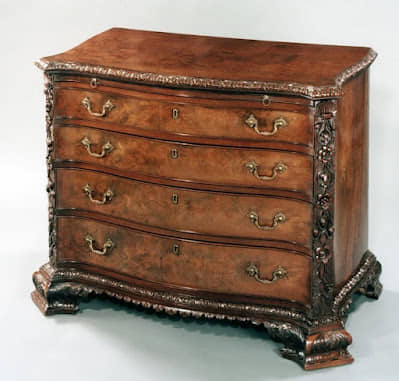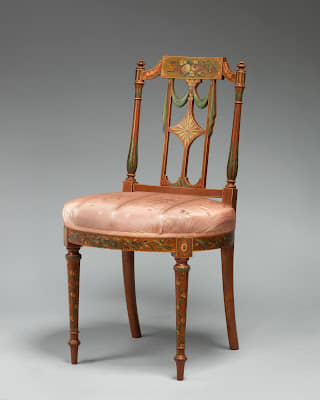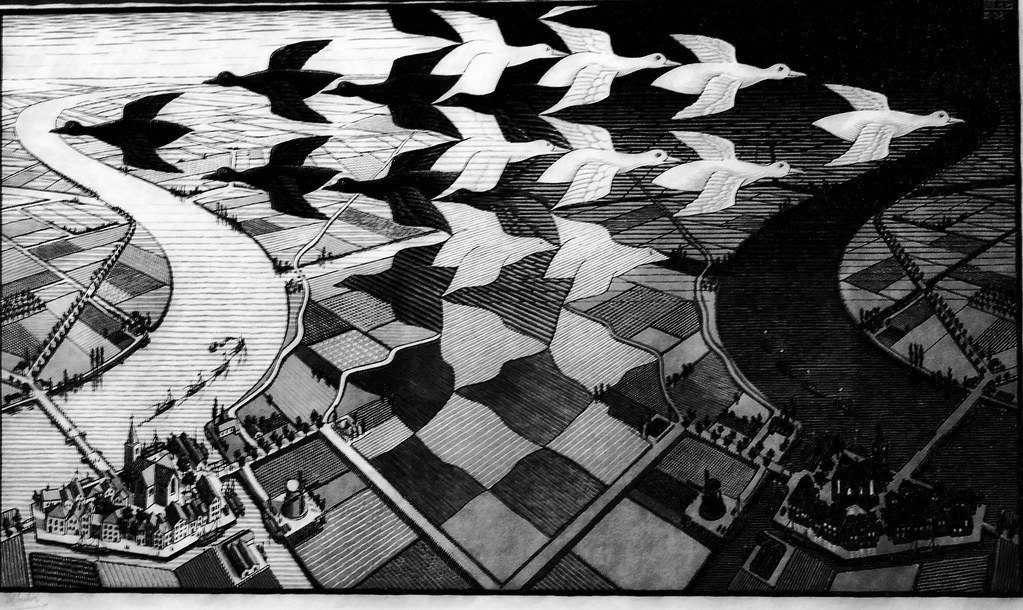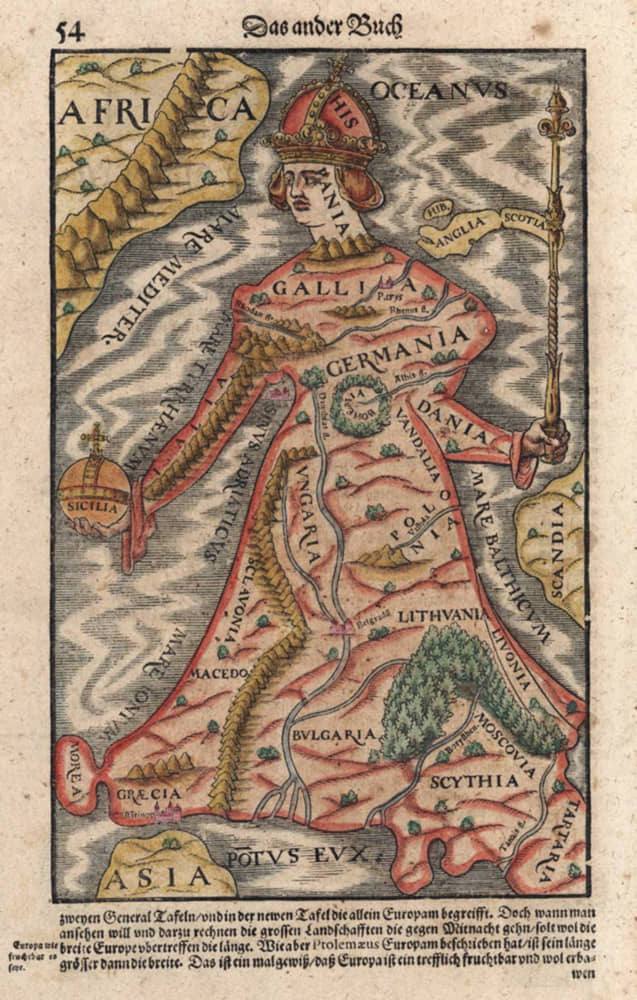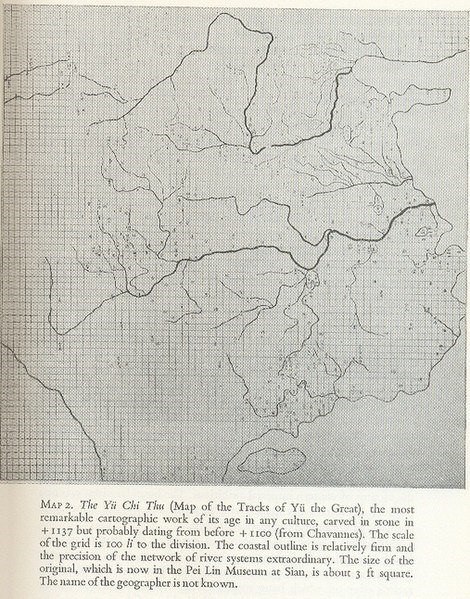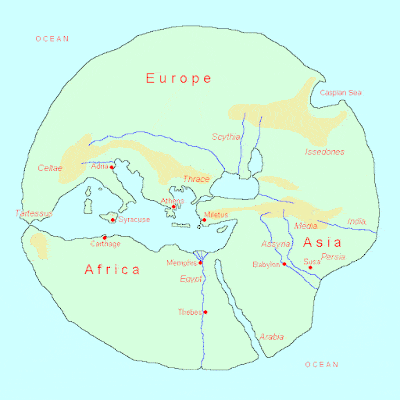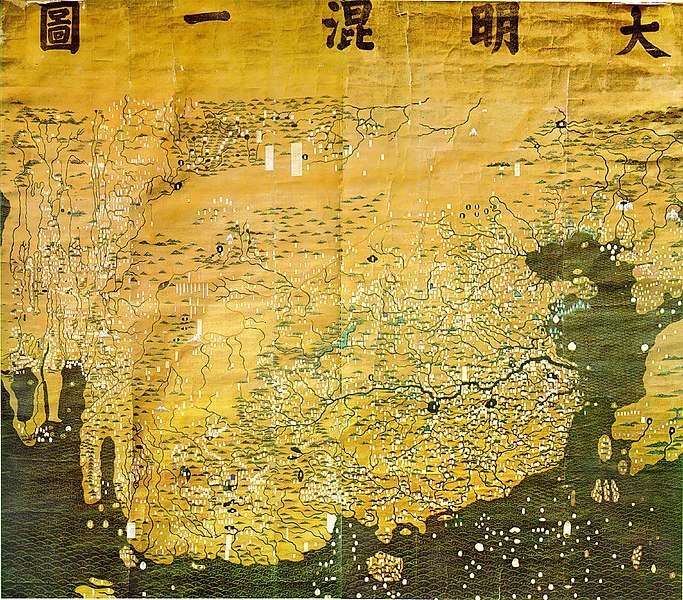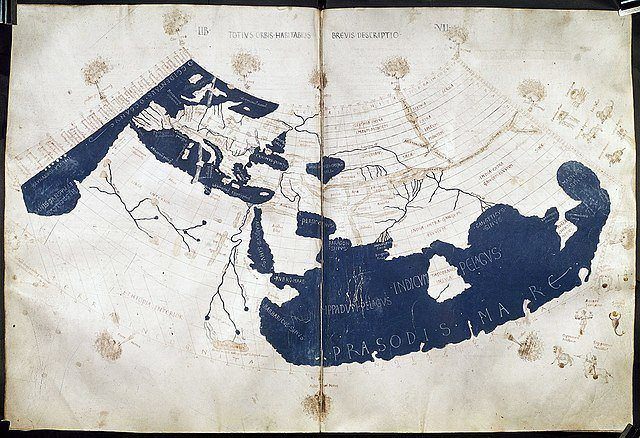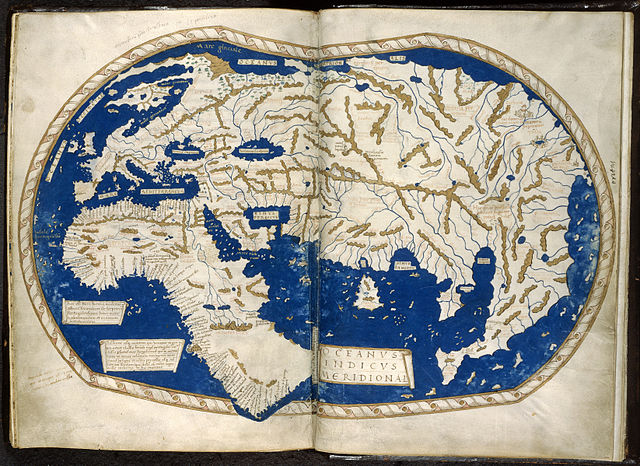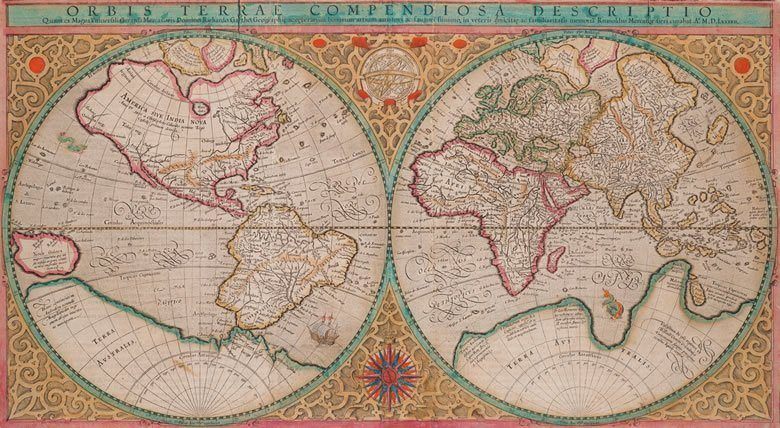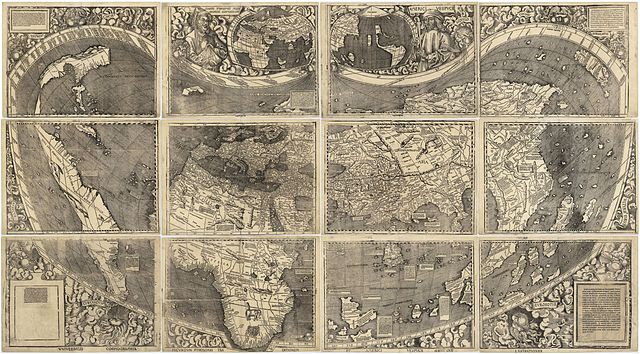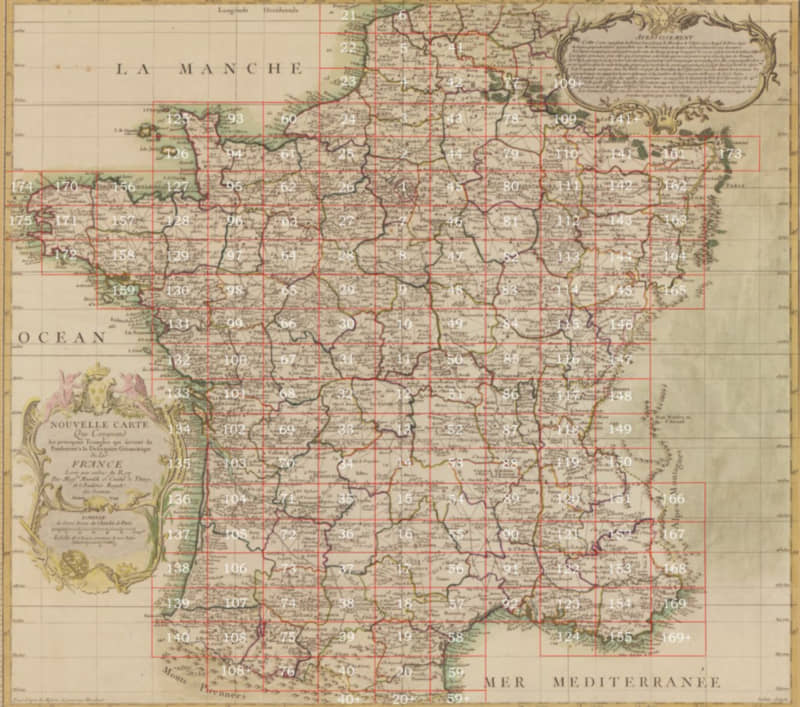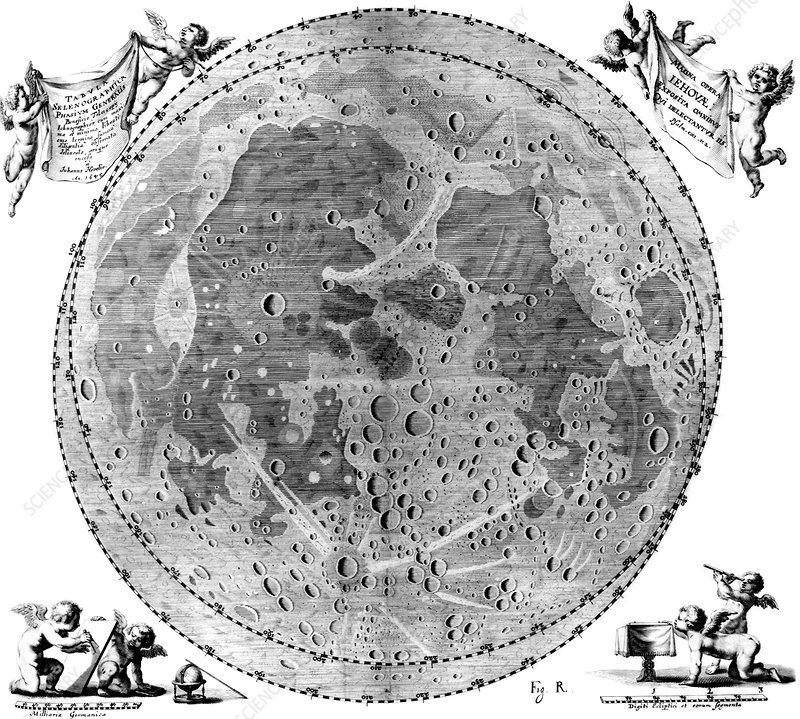The Same Western Civilization that Attained the Highest Historical Consciousness and Produced All the Greatest Historians is Therein Destroying Its Historical Heritage.
One of the most startling historical truths is that Europeans invented the writing of history as “a method of sorting out the true from the false,” as a conscious search for a rational explanation of the causes of events, while rendering the results of their investigations in sustained narratives of excellent prose. The other peoples of the world, including the Chinese who maintained for centuries a tradition of chronological writers, barely rose above annalistic forms of recording the deeds of rulers or the construction of genealogies devoid of reflections on historical causation. This would not have been judged a controversial view a few decades ago. But in a Western world dedicated to multiculturalism, with universities making it their mission to promote an “inclusive” and “diverse” educational environment, there is a widespread impetus to acknowledge as equally valuable the historiographical traditions of non-Western peoples wherein the European tradition is seen as one approach among many others. These approaches include Islamic “universal chronography,” Chinese “encyclopedic, synchronic, and official historiography,” Australian Aboriginal “dreamings” of past events “organized spatially and morally rather than temporally,” or African “oral history of gathering, preserving, and interpreting the voices and memories of people.” Indeed, if there is a key difference between these perspectives it is that European historians have tended to be ethnocentric and arrogant in their supposition that they invented history. Among recent studies promoting a “global approach” against a “Europe-centered approach” is Turning Points in Historiography: A Cross Cultural Perspective , edited by Edward Wang and Georg Iggers. Academics are cited in this book stating that historical thought is not a monopoly of the West: “On the contrary, interest in the past appears to have existed everywhere and in all periods.” Western historiography is “not superior.” The claims of European colonialists on the “racial inferiority” of other cultures must be “refuted.” Just as Greek historiography provided a “basic form of historical writing that later exerted a cross-cultural influence in the West,” so was Chinese historiography “regarded as a model practiced by Asian historians, especially in Japan, Korea, and Vietnam before the nineteenth century.”
The initial aim of this essay was to counter this multicultural historiography by demonstrating its lack of veracity, explaining that Europeans originated the writing of history, wrote the greatest historical books, brought about the “professionalization of history” during the 1800s, which entailed the systematic and critical analysis of documents, from which point they would go on to write the best histories of the non-western world. Europeans were indeed the only people to exhibit a high level of historical consciousness about the way that history shapes our thoughts, culture, psychology, and institutions. But in light of my current scholarly preoccupation with the ways in which the ideology of liberalism, with its crucial principle of individual rights, is behind the promotion of diversity, race equity, and immigration replacement, I could not avoid the question why Western historians today are so enraptured with “provincializing” the history and achievements of their own civilization for the sake of an “inclusive” multicultural history. It became apparent to me that the consolidation of a multicultural historiography was not an arbitrary or isolated decision taken by a few academics, but part expression of a broader ideological matrix with deep origins in the history of the West itself. The more I investigated the historiography of the West, that is, the more I inquired about the history of history writing, about the histories that the peoples of the West have written, I came to the following hypotheses, which this essay will seek to explain:
- Europeans were responsible for the full development of history writing, surpassing since ancient Greek times the historiography of the other civilizations during their entire histories, consciously seeking to find the truth by evaluating the accuracy of the sources and analyzing historical causation. The Greeks and Romans did hold a cyclical view of history for whom “the nature of all things was to grow as well as to decay,” as the general consensus has it; however, this was a view based on a deep understanding of the varying psychology of human nature from times of simplicity and hardness (in the early stages of cultures) to times of affluence and decadence (in the later stages of cultures).
- The Hebrew Bible did go beyond an annalistic account of the deeds of kings, developing a historiography that was “national” or about a people as a whole, but without matching the historiography of the Greeks and Romans, who also initiated an ecumenical vision of “the whole inhabited world,” which would come to be combined with the “universal” historical vision of the Christians in their preoccupation with the “education of mankind,” and which reflected the fact that only Western peoples came to transcend in their cosmopolitanism the provincialism that is natural to cultures and that has prevailed in China throughout its history despite proto-universalist principles in Confucianism.
- The Old Testament did initiate a view of history as a purposeful and directional process from the beginning of the Creation to the future expectation of a Messiah; however, the New Testament enhanced the connection of God and history with its concept of the Incarnation, when the eternal Word and Son of God “became flesh and dwelt among us.” The subsequent Hellenization and Romanization of Christianity in the first centuries AD led historians to search for stages and directionality in the actual, empirical histories of humans, linking the eschatology of the Bible with the history of the Greeks, the creation of the Roman empire, and the kingdoms created by the Germanic peoples. The connection of Christian eschatology (Heaven and Hell, the Second Coming of Jesus, the Last Judgment) with the actual history of humanity, would lead Christians to initiate a “progressive” conception of history, as part of God’s providential plan, to search for an intelligible pattern in the gradual “education of mankind.”
- Only Europeans developed a true historiography characterized by a history of relatively continuous improvements, rather than by mere repetition of the historical styles of the past, as was the case in other civilizations, because only they experienced an increasing historical consciousness, a deep awareness of the passage of time in a directional way, rooted in their Christianity and cosmopolitanism, and in their actual epoch-making transformations, the rise and decline of Greece and Rome, the spread of Christianity, the invention of universities in the Middle Ages, among many other novelties, followed by the Renaissance and the continuous revolutions of the Modern era in warfare, art, architecture, science, philosophy, politics.
- But it was during the Enlightenment era that historians began to think systematically about the unique progression of the West in science and technology as well as in constitutional politics, and in the “rights of man”—against the forces of “darkness, ignorance, and vice,” which Enlightenment historians believed still held a tight grip over Europeans, and which needed to be defeated for the full potentialities of humans to be actualized in a future of plenty, harmony, and happiness. Man was a historical being in the process of achieving his full potentialities in the course of time.
- Modernist historians would secularize, not reject, the Christian idea of progress, while gaining a more “scientific” understanding of history, identifying definite stages in the growth of reason and liberty and in “the manners and morals of humans,” in terms of purely natural or man-made causes, rather than in terms of the “providential hand” of God. This idea of progress would come along with tremendous improvements in archival research and in historical methodologies, while the rest of the world would remain stuck with annalistic historiographies.
- The period between 1918 and 1970 would see the consolidation of a Grand Liberal Narrative, particularly in the wake of the defeat of Fascism in WWII, and the Cold War with Communism. This Narrative—the “Allied scheme of history”—would see in history a rational process of the growth of liberty, scientific and capitalist prosperity, with the United States as a model for the rest of the world, a result of thousands of years of Western evolution, combining the Greek democratic and rationalist legacy, Roman law, Judeo-Christian values, the Enlightenment and Free Markets.
- The German Historical School of the second half of the nineteenth century, known for raising to a higher level the professionalization and specialization of history, constituted a profound questioning of the liberal idea of progress with its nationalist advocacy of “the historicity of all knowledge and values” and its emphasis on the priority of the freedom of Germans as a people over the individual rights of abstract individuals. But German historicism would be thoroughly domesticated into a defense of “value-pluralism” according to which we should tolerate within each Western nation different cultural values except values that are intolerant to the “value-pluralism” of liberalism.
- Liberalism has an inbuilt progressive logic continually pressing for the “emancipation” of the individual from all traditional restraints, including sexual and racial collective identities, that infringe on the rights of individuals to choose their own lifestyle, backed by a new conception of “positive liberty” rather than mere “negative liberty,” a liberalism in which the government came to be assigned the role of reducing inequalities, increasing inclusiveness, and assisting in the “self-realization” of individuals.
- After the 1970s the “Rise of the West” grand narrative would come to be seen as an “unfinished project” requiring revision, starting with an acknowledgment of its “Eurocentrism” and the way the West had “underdeveloped” the rest of the world in its climb to supremacy, with old liberals gradually accommodating themselves to these revisions, confident in their defeat of communism in the early 1990s, announcing the “end of history, while including within its fold, as two sides of the same liberal coin, postmodern, environmental, multicultural, and global historical perspectives.
- Western civilization will soon cease to exist, becoming a hybrid of many races and cultures under the ideology of multicultural postmodern liberalism. The same civilization that produced the greatest historiographical tradition, becoming fully conscious of its historical trajectory, is now rewriting its past in the most malicious ways as a history of multiple peoples from its beginnings—against its “white supremacist” past.
The Greek-Roman Historiographical Legacy
Not long ago, before the onset of “progressive” diversity mandates, it was generally accepted that historical writing began with the ancient Greeks. R.G. Collingwood made the argument in The Idea of History (1946), once the best-known book in the philosophy of history in the English-speaking world, that “history is a Greek word, meaning simply an investigation or inquire”. Michael Grant, the famous classicist author of countless books, noted that the word “histor” in the classical Greek language referred to a learned man who settled legal disputes by looking into the accuracy of the events and the disputed allegations. From this legal term was derived the word “historie” as “a search for the rational explanation and understanding of phenomena.” In the “theocratic history” of Mesopotamia, accounts of past events consisted, as Collingwood wrote, of “mere assertions of what the writer already knows”, not based on answers arrived after research. The Hebrew scriptures were also theocratic history in that there was no research to “find” the “truth” about the past with authors consciously judging the veracity of sources. It is only with Herodotus’ book, The Histories, written around 430 BC, that we witness for the first time a real inquiry about the past “to get answers to definite questions about matters of which one recognizes oneself as ignorant.” The writings of Homer and Hesiod were likewise theocratic legends.
Herodotus was rightfully called “the father of history” for this reason, the first to write a historical inquiry which asked questions about the past based on the critical evaluation of the reports of facts given by eyewitnesses, as was the practice in Greek courts where one would cross-question the testimony of witnesses. Herodotus self-consciously explained that the purpose of his book was to present “the results of the enquiry [history] carried out by Herodotus of Halicarnassus. The purpose is to prevent the traces of human events from being erased by time, and to preserve the fame of the important and remarkable achievements produced by both Greeks and non-Greeks; among the matters covered is, in particular, the cause of the hostilities between Greeks and non-Greeks.” While in theocratic history, Collingwood adds, “humanity is not an agent, but partly an instrument and partly a patient, of the actions recorded,” in Herodotus we have descriptions of “the deeds of men…to discover what men have done and partly to discover why they have done it.” He sought to understand the reasons men acted the way they did.
John Burrow, an old stock British scholar, maintains that historical writing “based on inquiry” began with Herodotus. In his book, A History of Histories: Epics, Chronicles, Romances and Inquiries from Herodotus and Thucydides to the Twentieth Century, published in 2009, Burrow estimates we can only talk about “proto-history” in the ancient civilizations of Mesopotamia and Egypt, and among the Assyrians and Hittites who came later, in the sense that they engaged in “record keeping” and chronological recording of the deeds of rulers and the construction of genealogies. A proper historical account, however, requires a conscious awareness about the veracity of the sources one relies upon. Herodotus “regarded himself as an auditor, a collector, recorder, sifter and judge of oral traditions about the recent or remoter past.” According to Mark Gilderfus, Herodotus “checked his information against the reports of eye-witnesses and participants and also consulted the documents available to him—inscriptional records, archives and official chronicles.”
Collingwood correctly qualifies that The Histories of Herodotus could not but derive very little from written sources or “historical records” since there were few of these. This heavy reliance on oral sources restricted the writing of history among Greeks to events that happened “within living memory to people” with whom the author could have “personal contact.” The Greeks could not write “all embracing” accounts of the remote past and of the peoples of the world, “ecumenical history, world history.” For Collingwood, this lack of a worldly historical view meant that the ancient Greeks lacked a proper “historical consciousness.” Now, it is true, as Burrow notes, that Herodotus’ book “embodied extensive geographical and ethnographic surveys” of a variety of ethnic groups in the Mediterranean, North African, and Persian worlds, their clothing, diet, marriage, funerary customs, health and treatment of disease. It is for this reason that he is regarded, along with Hecataeus (b. 549 BC), as the originator of ethnography, the study of the culture of other peoples, for his “indefatigable questioning” of different ethnic peoples about their customs and morals. Still, I am inclined to agree with Collingwood that the unity of the historical mind of Herodotus was “only geographical, not an historical unity.” It was only after the conquests of Alexander the Great, and the creation of the Hellenistic and Roman empires, that the world became more than a geographical unity for the onset of a historical consciousness, which presupposes as a major condition an awareness of the histories of other peoples, reflections on the broader patterns of history as whole.
What about contemporary claims that other peoples were just as historically accomplished as the ancient Greeks? I will address these claims later on. For now, I will bring up John Van Seters’s thesis, articulated in a superb book of historical scholarship, In Search of History: Historiography in the Ancient World and the Origins of Biblical History (1983), that an Israelite inaugurated the historical tradition of the West in the sixth century BC, roughly a century before Herodotus, in the so-called Deuteronomistic (Dtr) history of the Old Testament from Joshua to 2 Kings. The term “Deuteronomistic history” was coined in 1943 by the German scholar Martin Noth to explain the origin and purpose of the books of Joshua, Judges, Samuel and Kings. Noth argued that these books were the work of a single 6th century BC author. Elaborating this argument, backed by extensive sources, Van Seters uses the following criteria to identify history writing in ancient Israel: A) It has “a specific form of tradition in its own right” (as opposed to being merely incidental) to “explain or give meaning” in a literary way to the way things are, showing thereby “some awareness of the historical process” “to account for social change” and “provide new legitimation.” B) History writing is not primarily about the accurate reporting of past events, but involves recalling the significance of past events, as we find in Dtr history. C) While history writing examines the causes of present circumstances, in the world of antiquity at large “these causes were primarily moral;” modern theories of causation or laws of evidence should not be used as criteria. D) History writing has to be national or corporate in character, as was the case in Dtr history; chronological reporting about the deeds of kings do not constitute history.
Van Seters brings out the best of the annalistic form of writing in the Near East; for example, he shows that chronicles did date events rather precisely to day and month of the year, with some chronicles showing evidence of “research” or “a gleaning of materials about the past from various sources.” While these chronicles do not yet constitute history writing proper, they “created the potential for the historical ‘research’ and reconstruction of the past that is indispensable to the development of history writing.” What made Dtr history more than a chronicle was, “above all,” the fact that it was a history of a “people’s past,” of the founding of a “nation under Moses, through the conquest under Joshua and the rule of judges, to the rise of the monarchy under Saul and David.” In Dtr history, “the royal ideology is incorporated into the identity of the people as a whole” (rather than the ruler alone). “The doctrine of Israel’s election as the chosen people of Yahweh set the nation apart from other peoples…All other callings and elections, whether to kinship, priesthood, or prophecy, were viewed in association with the choice of the people as a whole…Nowhere outside of Israel was the notion of special election extended to the people as a whole.”
Van Seters shows similarities between the Dtr historian and Herodotus. If the former “gathered his own material…in the form of disparate oral stories,” so did Herodotus derive “very little” from written sources, or ‘historical’ records; his work was mostly based on eyewitness accounts.” All Hebrew historiography is written from a theological perspective,” but so is the book of Herodotus, The Histories, strongly interested in divine providence. “Like Herodotus, the Old Testament exhibits a dominant concern with the issue of divine retribution for unlawful acts as a fundamental principle of historical causality.” Both works are characterized by a thematic unity and a sustained prose narrative about a people conscious of their national identities (though Van Seters barely says anything about the emergence of a Greek national identity centered on their freedom in contrast to Asiatic despotism).
In reply to Van Seters: it is true that in Herodotus’ account the deities did play a role in human affairs, dreams, oracles and omens. But all in all, I am inclined to accept John Gould’s judgement that Herodotus “took the possibility of supernatural causation in human experience as seriously as he took the involvement of human causation.” In fact, Herodotus was “cautious in admitting” the presence of gods at work in human actions, not because of religious disbelief, but because of his “uncertainty” or “implicit acknowledgement of the limitations of human knowledge in such matters”, sometimes offering alternative possibilities for the occurrence of the events, or declining to identify the particular god involved. Herodotus’ list of reasons for the Persian war emphasized human motives, arrogance, excessive pride, blind enjoyment of riches, lust for power, which brought the wrath of gods, their intervention, but which nevertheless pointed to historical explanations relatively free of divine influence, which was not the case in Deuteronomistic history. By the time we get to Thucydides’ History of the Peloponnesian War, written a few decades after Herodotus’ Histories (430 BC), the gods ceased to influence directly the course of events, history is entirely caused by the actions of human beings, even if the historical actors remained guided by a belief in gods, oracles, or divinations.
Herodotus consciously addressed the issue of historical accuracy in a way that the Dtr historian did not. He may have relied almost entirely on eyewitness accounts in writing about the contemporaneous subject he was addressing, the Persian Wars, but once we reach Thucydides, we have a historian who amplify the need for historical veracity, for accuracy in the reporting of events, contrasting his inquiry with that of “prose chronicles, who are less interested in telling the truth than in catching the attention of the public, whose authorities cannot be checked”. He willfully restricted himself to contemporary history and eyewitness accounts knowing that the “passage of time” made accounts of early Greek history “unreliable.” This is the point. Even if we were to agree with everything Van Seters says, Herodotus was just the beginning of Western historiography. While Near Eastern and Israelite historiographical traditions ceased, stagnated, or barely improved, Europeans would go on to build upon their earlier achievements, and eventually develop a full historical consciousness, which is incredibly hard to achieve.
According to J.B. Bury, known for insisting that history should be a “science” rather than a branch of “literature,” Thucydides’ book was “severe in its detachment, written from a purely intellectual point of view, unencumbered with platitudes and moral judgments, cold and critical.” For Nietzsche, Thucydides was “the grand summation, the last manifestation of that strong, stern, hard matter-of-factness instinctive to the older Hellenes.” What Nietzsche admired, though, was not Thucydides’ neutral impartiality per se, but that his values were not that of a Platonist seeking to escape the harsh reality of human struggle and conflict in a realm of perfections. It was Thucydides’ realism, his ability to deal with the world as it was that appealed to Nietzsche, his rigorously clinical assessment of human nature. Edith Hamilton, author of the once very popular and gifted book, The Greek Way (1930), insists that Thucydides wrote his book “because he believed that men would profit from a knowledge of what brought about that ruinous struggle precisely as they profit from a statement of what causes a deadly disease.” Hamilton brings out Thucydides’ concern with the causes of the war, how he differentiated triggering incidents affecting the timing from the ultimate cause of the war. The confrontation between Athens and Sparta was not generated by misguided humans who could have been dissuaded into a different course of action; no, the Athenians were driven to imperialism, seeking threatening alliances against Sparta, by the natural human obsession with dominating others; and Sparta was driven to react knowing that lack of action would simply invite further hostilities by the Athenians and others. This is why Thucydides wrote a book “written not for the moment, but for all time.” In the words of Hamilton: “It was something far beneath the surface, deep down in human nature, and the cause of all wars ever fought. The motive power was greed, that strange passion for power and possession which no power and possession satisfy. Power, Thucydides wrote, or its equivalent wealth, created the desire for more power, more wealth. The Athenians and the Spartans fought for one reason only—because they were powerful, and therefore compelled to seek more power. They fought not because they were different—democratic Athens and oligarchic Sparta—but because they were alike. The war had nothing to do with differences in ideas or with considerations of right and wrong. Is democracy right and the rule of the few over the many wrong? To Thucydides the question would have seemed an evasion of the issue. There was no right power.”
This clinical analysis of human nature in history would never find expression in the historiographical traditions outside the West. There are many timeless insights in Thucydides about the natural impulses of humans and their varied expressions in different characters and circumstances. Among my favorites is: “Self-control is the chief element in self-respect, and self-respect is the chief element in courage.” He and Herodotus started a historiographical tradition that would last continuously for over a thousand years. We can only go over the surface. Diodorus Siculus (first century BC), known for writing Bibliotheca Historica in 40 books, of which 15 survive intact, mentions many historians on whose works he relied upon. Some refer to this book as a “Universal History” both for its comprehensive coverage (from the mythic history of the destruction of Troy up to the death of Alexander the Great, including the early centuries of Rome), and for its worldly geographical description of Egypt, India and Arabia to Europe. He called it “Bibliotheca” in acknowledgment that he was assembling a composite work from many sources. This was not a history based on eyewitness accounts but a history based on the authority of prior historical authors/sources. The authors he drew upon include Hecataeus of Abdera, Ctesias, Ephorus, Theopompus, Hieronymus of Cardia, Duris of Samos, Diyllus, Philistus, Timaeus, Polybius, and Posidonius.
Siculus however was really a “compiler” rather than a universal historian since his work was descriptive in character, lacking an interpretative scheme. His predecessor Polybius (200-118 BC) may be said to be the original ecumenical or universal historian, in full awareness that in trying to answer the question in his book, Histories, why “the Romans succeeded…in bringing under their rule almost the whole of the inhabited world” and writing about how “the affairs of Italy and of Africa are connected with those of Asia and of Greece and all events bear a relationship and contribute to a single end,” he was indeed, in his words, the “first” “to examine the general and comprehensive scheme of events” and to look at history as an “organic whole.” In answering this question, Polybius raised the analysis of historical causality to a higher level of precision, by adding the “how and why” to the “who, what, where, and when” of Thucydides. He sought “to record with fidelity what actually happened,” with profuse references to prior historical accounts. Since Polybius covered a long-time span of history, 264-146 BC, unlike Herodotus and Thucydides, he could not rely on eyewitness accounts only. Fortunately, in his time, there were already many authoritative “works of previous historians who had already written the histories of particular societies at particular times,” including Rome’s own careful preservation of memorials and ancestral portraits.
His universal perspective was also visible in his effort to provide a sweeping explanation of the rise and fall of civilizations in general, expressing for the first time, in a cohesive manner, the principle of cyclical history. States experience a natural cycle similar to biological organisms, characterized by growth, zenith, and decay. Primitive kinship first emerges and develops into monarchy, monarchy devolves into tyranny, and eventually tyranny is replaced by the aristocratic rule of the best (the men of virtue, piety, and courage who created Rome). This rule then degenerates into oligarchic privilege and excess, followed by democracy and finally, mob rule. He believed that the Roman state was superior to all prior forms of government in combining the best of three forms of rule, monarchical (elected consuls), aristocratic (senate), and democratic (popular assemblies. But in his estimation, while this mixed policy could slow down the cycle, it could not deter the eventual decomposition of Rome.
Another revealing quality of ancient Western historiography was its preoccupation with the moral character and personality of great men. This individualism, rooted in the heroic aristocratic ethos of Indo-Europeans, as expressed in their timeless bards and poems, which recited the heroic deeds of legendary figures, with the main characters identified by name and personality, as was the case in the Iliad, would find expression in the preoccupation we already noted above about human nature and the personal qualities of leaders, a phenomenon utterly lacking in non-western historiography. Who can forget the famous Parallel Lives of Plutarch (46-120 AD), mandatory reading for every young European man not long ago? Nineteenth century “positivists,” who believed that historians should remain objectively preoccupied with the facts alone without judgments, downplayed Plutarch as a historian for his moralistic judgements about the virtues to be emulated and the vices to be avoided in his illustrations of great men. Yet, Plutarch “read voraciously, and faithfully reported what he found in a wide variety of sources.” He was “one of the most educated men of antiquity” who knew and quoted “all the major Greek historians” and supplemented his narratives with information from letters, inscriptions and public documents. His Lives were not hagiographies glorifying great men, but an effort to demonstrate the importance of rational self restraint against irrational passions, exhibiting a high sensitivity to the dynamics of human motivation, the interaction of contrasting traits and how they can complement each other within the same character, combined with keen observations about the physical appearance of the characters, thereby showing a keen insight into the variety and complexity of human behavior. Never in the history of the non-western would we witness a book like Plutarch’s Lives, which consists of a series of paired biographies of the great men who established the city of Rome and consolidated its supremacy in comparison to their Greek counterparts, written with such elegant prose and narrative flair.
It has been said that Greek/Roman historiography was limited by its view of an unchanging human nature. Michael Grant, in The Ancient Historians (1970), says that “Plutarch has no idea of dynamic biography…The ancients were still mostly convinced that a man’s character is fixed; at any point in his life, he is what he always was and always will be.” This idea, we shall see below, would be rejected by modern historians around the 1700s, starting with historians of the “Scottish Enlightenment,” with their stage theory of history and their observation that with the rise of commerce and constitutional monarchies, there was a noticeable “improvement of manners” among men. This view also nurtured the equally influential and related current of “historicism,” which came in many conflicting varieties, but essentially argued that all human activities, such as science, art, customs, philosophy, are shaped by their history, not by an unchanging human nature.
It is more complicated. Herodotus did imply in his ethnographic observations that human nature manifests itself differently (in customary practices) in different geographical settings. The claim that the cyclical view of history “was entailed by a belief in an unchanging human nature” forgets that this view postulates a dramatic alteration in the characters of humans, from virtuous qualities during the rise of states, to decadent traits as wealth, peace, and ease become the new reality. The decline of the Roman character is a pervading theme of Roman historiography; already apparent in Cato the Elder (234-149 BC), author of Origins, of which only fragments survive, about the beginnings of Rome up until the victory over Macedonia in 168 BC. Cato eulogized the “Spartan” austerity and simplicity of the early men who built Rome, and lamented the effeminate influence of Greek learning. Sallust (86-35 BC) saw the old Roman virtues of frugality and piety decline under the influence of luxury and Asiatic indulgences and taste, in the first century BC. “Growing love of money and the lust for power which followed it engendered every kind of evil. Avarice destroyed honour, integrity and every other virtue, and instead taught men to be proud and cruel, to neglect religion and to hold nothing too sacred to sell… Rome changed: her government, once so just and admirable, became harsh and unendurable.” But, according to Sallust, it was not all about character decomposition; he also saw an intensifying civil strife in late republican Rome between two factions: the old patrician class in control of the Senate, and the plebeians in control of the popular assemblies. Sallust, who was “a popularis” supporter of Caesar, praises Tiberius Gracchus in his The Jugurthine War (41-40 BC), recognizing the Gracchi brothers as “vindicators of the liberty of the people” against the “shamelessness, bribery and rapacity” of the old aristocracy, as he put in The War With Catiline, grabbing the spoils of war and leaving citizen farmers landless, as they were burdened with prolonged military service.
Along with its psychological portraits, Western historiography was uniquely characterized by an “elaborated, secular, prose narrative” combined with a literary ability to draw the reader into the events and personalities, in startling contrast to the bureaucratic, impersonal, and annalistic reporting that one finds for centuries in non-western historiography. Roman historians were educated with strict rules for prose composition, and in the art of literary rhetoric. They took delight in their character portraits. Criticizing them for their moralizing judgements betrays a lack of appreciation for their psychological insights, the inevitability of judgements in historical writing and the importance of bringing out the dramatic character that is actual history. Here is Sallust writing about Lucius Sergius Catilina (108-62 BC), a Roman politician and soldier, corrupted to his innermost being by his lust: “His unclean mind, hating god and fellow man alike, could find rest neither waking nor sleeping; so cruelly did remorse torture his frenzied soul. His complexion was pallid, his eyes hideous, his gait now hurried and now slow. Face and expression plainly marked him as a man distraught.” Not until Gibbon’s History of the Decline and Fall of the Roman Empire, published in the late 1700s, would anyone see the need to supersede the historiography of ancient Romans. Sallust, Livy, and Tacitus were thought to be unsurpassable in their narrative abilities, character portraits, analysis of Roman’s political history and detailed description of its wars.
Livy (59 BC-AD 17), immortalized for his monumental history of Rome in 142 books, of which 35 survive, from the earliest legends of Rome before the traditional founding in 753 BC through the reign of Augustus in Livy’s own lifetime, is widely acknowledged as a “superb narrator.” He understood that his accounts of early Rome have “more of the charm of poetry than of sound historical record,” although future antiquarians have learned a lot about the foundational myths of Rome from these accounts. As in Sallust before him, in Livy, as John Burrow writes, “the question of moral fibre, nurtured by war, weakened by peace and ease, became the core of Roman history.” Livy raised to a higher level of explanatory sophistication the social historical perspective already incipient in Sallust, by accentuating the significance of the conflict between the old patricians and the plebeians, which he traced back over the centuries, recounting how these two classes had managed to get along with the abolition of debt enslavement, the redistribution of land, and the eventual opening of the highest offices (consulships, censorships) to wealthy plebeians, and how in the first century BC this consensus broke down as different sections of the plebeians, a rich elite allied with the patricians, and a poor class of smallholders, who were the backbone of the citizen army, could not resolve their differences. Upon returning from military service to their neglected farms, these small holders, as they struggled to pay debts and taxes, would lose their farms, which made the practice of citizen soldiers obsolete, and led to the rise of private professional armies. It was Livy’s view that Rome had managed to rise and survive major threats, such as the disaster of Cannae, insofar as the upper classes had acted in moderation, bringing the plebeians to rule alongside them, and redistributing the spoils of war. Roman “firmness” and “sternness” was rooted in this social reality, whereas Roman decadence was rooted in the lustful rapacity of a wealthy oligarchy expropriating the citizen farmers. At the same time, Livy also pointed to demagogues who stirred up the plebs towards mob rule out of their tyrannical ambition. It has been said that the historiography of ancient times contained truths valid “for all time.” In his Discourses on Livy (1517), Machiavelli explained, after a close reading of Livy, that all forms of government—monarchical, aristocratic, and democratic—are flawed, and that it was the good fortune of the early Roman republic to combine traits from these three. The inherent conflict of interests between the nobles and the people can turn out to be constructive as long as there is an institutional balance of power in which tribunes of the people can wield power. There is never an ideal political order in which conflict is avoidable.
Perhaps the most admired Roman historian is Publius Cornelius Tacitus (56-120AD). Tacitus enjoyed a very high reputation from the late sixteenth to the late seventeenth century, admired by Gibbon for “the force of his rhetoric…to instruct the reader by sensible and powerful reflections.” He wrote primarily about the relations between the Emperor and the Senate, not the wider world of the Empire, based on the testimony of eyewitnesses, published transactions of the Senate, news of the court, collections of emperors’ speeches, and memoirs. In his didactic concern “to ensure that merit is recorded, and to confront evil deeds and words with the fear of posterity’s denunciation,” it has been said that he was a moralizing historian. His focus was on the motives of the characters, exposing hypocrisy and dissimulation. Some praise the brevity of description of his Latin style, their “epigrammatic” character, or lack of ornamentation. The period he covered, mostly the first century AD, offered only meager examples of virtue—which may be why he praised the Germanic peoples in what may be his best-known work, the fascinating ethnographic essay titled Germania. Linked to the Third Reich, this essay would also play a key role in the construction of a historiography identifying freedom as the most important ideal of Western history. He observed the Germans in their own terms rather than in light of Roman values, showing admiration for German sexual temperance, dignity, courage, and loyalty—without falling prey to the modern myth of the noble savage, describing as well their drunkenness, idleness and quarrelsomeness. It was this lack of discipline, he believed, that gave Romans an advantage over the formidable German warriors. In the early modern period, as Germania became increasingly known, it encouraged historians to delve deep into the pre-Roman past of Europe. Historians would discover a conception of freedom that predated the Greek, Roman and Christian conceptions—what I would call, in my book Uniqueness of Western Civilization (2011), a primordial ethos of aristocratic and heroic freedom. Francois Hotman, in his Franco-Gallia (1573), concluded, after a thorough study of numerous chronicles of Europe’s early history, that the ancient kings of France were elected and could be deposed, and that French representative institutions, the Estates General, were descended from the old Germanic assemblies of aristocrats. Future authors would argue that the feudalism of the Middle Ages, the contractual relation between lords and vassals, was derived from the Teutonic comitatus, the brotherhood of warriors. Montesquieu located this Germanic freedom in the Anglo-Saxon nations, which he developed into a modern doctrine of republican liberty, and identified Britain as the best example of the preservation of Germanic freedoms, whereas in France he saw a nobility that had surrendered its liberty by becoming a bureaucratic servant of the absolutist state. The constitution of Britain, after the Glorious Revolution of 1688, consisted of a mixture of monarchical, aristocratic (House of Lords) and democratic elements (Commons), with freedom of thought.
The Emerging of a Christian Historical Consciousness
For all we have said about Greek and Roman historiography (and there were other historians, such as Suetonius, Appian, and Casius Dios) cotemporary scholars invariably agree that the ancients remained a “non-historical” people. Herbert Butterfield is convinced “the Greeks did not achieve historical mindedness, and never could have achieved it, because they had the wrong view of time and the time process.” The Greeks “only knew of a comparatively short history behind them—they thought that the historical past extended back for only a very few hundred years.” But even in the case of the Romans, despite some of their long-term accounts, including a 1400-year history by Casius Dios, Collingwood insists that Roman historians thought of Rome as an “unchanging substance,” “the eternal city,” experiencing cyclical changes but no identifiable stages of development. Livy never sought to explain how Roman institutions came to be, how they changed over time, other than noticing, if I may add to Collingwood’s explanation, the virtues that made possible its rise and the vices bringing about its decline. It was a history without periodization about a city that seemed to be ready-made before history began. Roman historiography was also “particularistic,” self-centered around Rome, without grasping the historical dynamics of other people and their place within the historical process. Tacitus distorted history, Collingwood adds, by “representing it essentially as a clash of characters” portrayed as either “exaggeratedly good” or “exaggeratedly bad.” As talented as Tacitus was in his character-drawings, his approach encouraged the narrowly circumscribed perspective of seeking the causes of historical events in the personalities of the main actors—a retrogression from the world historical perspective of Polybius.
The Marxist historian E.H. Carr, author of a 14-volume work covering the first twelve years (!) of the history of the Soviet Union, argues similarly that “the classical civilization of Greece and Rome was basically unhistorical.” For Thucydides, “nothing significant had happened in time before the events which he described and nothing significant was likely to happen thereafter.” He goes on to explain in his insightful small book, What is History? (1961), that a cyclical view of history, the sense that history is “not going anywhere,” is devoid of a proper historical consciousness. One must have a sense that there is a “direction in history” to interpret the past properly. While a historian does not have to believe that history is progressing “towards the goal of the perfection of man’s estate on earth,” without a conception of progress, which entails a history that is indeed characterized by development, such as an increasing capacity to understand and master the laws of nature and improve the living standards of people, we can’t speak of “historical consciousness.” Carr does not believe in “Divine Providence,” a “World Spirit,” or “Manifest Destiny,” that is, in an all-powerful force guiding men and the course of events. But he believes that “it was the Jews, and after them, the Christians, who introduced an entirely new element by postulating a goal towards which the historical process is moving—the teleological view of history.” It was “Jewish-Christianity” that gave history “meaning and purpose.”
According to Collingwood, Christianity contributed the following to the eventual rise of a modern historical consciousness: the universalism that all persons are equal in the sight of God, that “all peoples are involved in the working out of God’s purpose,” and that therefore a Christian can’t remain content with the particularistic history of one people but must strive for a universal history. The events that occur in the world must be ascribed to the workings of Providence, which means that one must try to detect an intelligible pattern in the overall history of humans, and treat earlier events as leading up to, or preparing for, God’s ultimate plan. This means, I would add, that in order to make sense of history’s pattern, history must be divided into epochs, each identified for its contribution to progress and for the ultimate plan.
The flaw in this interpretation is that it does not draw a distinction between the Old and the New Testament view of history, and the subsequent Hellenized and Romanized Christian conception articulated in the first centuries AD. The Old Testament, to be sure, offered a purposeful and directional view of history from the beginning of time, from the Creation and the expulsion from Paradise of Adam and Eve, as a result of their original sin, to the second beginning of mankind with Noah, after the flood, followed by God’s promise of land to Abraham, demonstrated in the liberation of Jews from Egyptian captivity, followed by numerous events with references to peoples and civilizations in the Near East, Egypt, Babylonia, Assyria Persia and Jerusalem. The Hebrew Bible, Van Seters is correct, offered a dramatic long-term narrative of a people intensively preoccupied with their past, the first accounts to go beyond the Royal annals of the Mesopotamian/Egyptian empires, to produce a history of a people as a whole, the Jews, with quasi universalist aspects in its account of the Creation and the Flood.
The Old Testament conception, nevertheless, was about a particular people, the Jews, and, in this respect, it was not universal. It was a conception that remained preoccupied with the Jewish historical experience, to a final act of God that would signal the end of history, with dreams of a Messianic kingdom, as it grew pessimistic about the actual events of its history with the lost of Jerusalem, the destruction of the Temple, and with the dispersion and exile of Jews in foreign lands. The Bible as a whole, both Old and New Testaments, did not try to make sense of actual human historical events beyond the experiences of Jews; and did not try to discover a meaningful pattern in the empirical happenings of world history. History in the Bible is meaningful because it is oriented toward some transcendent purpose, the future expectation of a Messiah, but this expectation is not seen to be developing through successive historical stages since the truth has already been revealed. This is a view that Karl Lowith holds in his philosophical meditation, Meaning in History (1949). History is directed by the providence of God’s supreme insight and will, but God’s ways are hard to make out and cannot be comprehended by reason. The message of the Bible is that we must trust God’s justice in spite of manifest evil in the world, and faithfully wait for justice to be done on the Day of Judgement. The Biblical conception is similar in some respects to the Greek cyclical acceptance of fate, in the way it looks at history through all the ages as a story of mere genesis and disintegration, action and suffering, pride and sin, as a “continuous repetition of painful miscarriage and costly achievements which end in ordinary failures.”
But Lowith is rather indifferent towards the historiography of subsequent Christians who sought to discover in actual history the spiritual unfolding of salvation. Even thought the New Testament as such does not seek out to make sense of the actual history of the Hellenistic-Roman world from which it emerged, subsequent Christians, as Butterfield says in The Origins of History (1981), “could not help vindicating the idea of the Jesus of History, Jesus the man who had lived at a certain time and in a definite place.” The religion of Christianity “was fastened to the hard earth” through “their continuing concern about the possible imminent coming end of the world, and their contact with Greek philosophy” and, I would add, through the very concept of the Incarnation and the Cross. Christianity departs from the Old Testament in the consummated advent of Jesus which signifies that God has given His grace through the hands of His Son who in his sacrifice has brought redemption to all humankind. Humans are no longer fully corrupted but are newly capable of achieving ethical and eschatological goals in this world. The Christian God is not impersonal, unknowable, and separate from our world. He is both transcendental and immanent, for in the Incarnation, and the idea that Christ is both fully God and fully human, the unfathomable God of the Old Testament finds concrete expression in history. Christianity recognized the dignity of the material world and its ability for expressing the Spirit. Christ is the image of the invisible deity here on earth and human action can bring about the world’s transformation.
In line with the incarnation and immanence of God on earth, Jesus added an “ethics of love, or compassion,” which cultivated “a new sensitivity to human suffering,” which motivated Christians to struggle against evil in this world, which set in motion a historical process of moral progression. This religion brought the hope that it was possible to create a “better world,” for it was a religion that no longer saw suffering as unchangeable, but called upon believers to feel responsibility for the suffering of others. In contrast to Greek pagan ethics and Roman stoicism, which held that it was folly to struggle against the destiny of human limitations and realities of the world, there was a feeling of hope and progress embedded in the ethics of Christianity according to which humans on this earth could improve the human condition and bring about the advent of the Kingdom of God. Non-western religions conceived of salvation as something to be achieved by escaping into the “world behind” or the “world beyond.” But among Christians a sense emerged that history was not a cycle of time but a “forward-moving” process, a linear movement from Creation to the “end of time.”
But we also need to add that it was only with the Hellenization and Romanization of Christianity in the first centuries AD that we see philosophers and historians trying to make sense of the connection of God and world history. The New Testament taught that God had connected himself to the happenings of the world through the historical figure of Jesus in the flow of time from the Creation to the eventual Second Coming, which made it impossible for Christians to view history as cyclical but instead postulated a beginning, a central event, and an ultimate goal. The historians of the first centuries AD would take this idea further by making Christian sense of the history before the coming of Jesus, and the history of their own times. Irenaeus (130–202) thus interpreted the Old Testament as the preparation for the New, as an “upward” development which demonstrated the divine “education of mankind.” God, by becoming man through Christ, restored humanity to being in the likeness of God, which humans had lost in the Fall of Adam. He saw an upward movement from the period of infancy in which Adam failed God’s command and elicited God’s punishment, to that of Christ (the new Adam) who represented the new head of humanity and undoes Adam’s disobedience. This idea of the “education of mankind” was developed further as Christians wrestled with the historical meaning of Greek philosophy as well as the meaning of Rome as a “universal” empire in God’s providential plan. Early Christians neither rejected outright nor accepted Greek philosophy completely, but took a historical view by arguing, as Justin Martyr (100–165) did, that Greece represented a stage in the growth of truth towards fullness in the revelation of Christ. Christ was “known in part even by Socrates.” Clement of Alexandria 150–215), likewise, wrote about God planting the seeds of Christian revelation in Plato and Aristotle.
As the expectation of the Second Coming weakened, Christians developed a conception of historical time that went beyond the finality of the Last Day, guided instead by the promise of redemption in the course of time, for the Creation was not perfect to begin with, but needed time to grow and mature. Before the Last Day, Christians had a historical role to play: “the good news must be preached to all the heathen.” For God to accomplish his mission to mankind, a long span of time may be required. Origen of Alexandria (185-253) and his disciples strove to give meaning to the history of Rome. The “seeds” of Christianity had been sown by Christ in every human since Creation; God had attended to the best in Greek as deliberately as he had revealed the Law to the Jews. The universal peace created by Rome was intended to create the conditions for the foundation of a universal Christian Church. Christians could not therefore discard as futile, as part of a meaningless cycle, the histories of Greece and Rome, for these histories were also part of the divinely ordained progress of humanity.
With the conversion of the emperor Constantine the Great (272–337), the Pax Romana came to be widely accepted as God’s instrument for the dissemination of the Gospel over secure roads and seas. It was the historian Eusebius (260/265-339), a close advisor of Constantine, who integrated Rome into Christianity’s “upward” “education of mankind,” generating thereby the possibility of a truly universalist conception of the concrete history of humans. He did so in his Chronicle and his Ecclesiastical History, within a time scale and a chronological time-line that included the rulers and dynasties of the Assyrians, Egyptians and other peoples, as well as the main figures and events of the Old Testament, the work of the Apostles to the deaths of St. Paul and St Peter, through to the making of Christianity into the official religion by Constantine in 313. Eusebius provided a chronology of the major world historical events, placing the birth of Chris in the year 5198 from Adam or 2015 from Abraham, on the basis of many documents and textual sources to ensure a proper record. He was the author of many books based on carefully collected materials, a man of indefatigable industry, though we must not assume he was a better historian than the Greeks/Romans, who were literary masters of prose, engaging narrators, and insightful psychological analysts. In the words of Michael Grant, Eusebius’ narrative was “uninspiring,” “dull, muddled and haphazard,” with a “cumbersome, obscure and slovenly Greek.”
While Saint Augustine (354-430) was not a historian, he offered a profound expression to the idea that truth is inseparable from historical time and that history points towards an end entailing “the education of the human race.” Augustine rejected the Greek idea that history goes on repeating itself endlessly through time and that nothing new emerges with each cycle. Any cyclic view is inherently unable to grasp the meaning of time. In his Confessions, he asked: “For what is time?” He answered: “If nothing passed away, there would not be past time; and if nothing were coming, there would not be future time; and if neither were, there would not be present time.” Therefore, humans could not have conceived of time if history was characterized by cycles repeating themselves throughout endless ages. In The City of God, he argued that God created time: “For, though Himself eternal, and without beginning, yet He caused time to have a beginning; and man, whom He had not previously made He made in time, not from a new and sudden resolution, but by His unchangeable and eternal design.” From this initial creation of man in time, in the beginning, we can witness thereafter, in the flow of historical time, “the education of the human race.”
Robert Nisbet, however, pushes too far the argument that there is in Augustine an idea of progress in a linear and cumulative way. Lowith may be more judicious in his claim that “for Augustine the historical task of the Church is not to develop the Christian truth through successive stages but simply to spread it, for the truth as such is established.” But it is hard to deny that Augustine was interested, in the words of Butterfield, “in the whole drama of human life in time.” Nisbet does make a good case that “it is the Greek strain in Augustine that causes him to put God in a developmental, progressive light.” We read in Aristotle that everything has a telos, a purpose, a striving to actualize its highest potentialities, and within man there is a potential for rational and moral perfection. Augustine appears to see the unfolding of this potentiality in the course of historical time rather than, as the Greeks did, within the biological lifetime of individuals on their own. Influenced perhaps by Eusebius’ attempt to write the actual history of humans within a Christian scheme, Augustine did write of epochs, with an eight-stage referring to the resurrection of Christ, and history culminating in a last stage, a blissful period on earth, prior to entry of the blessed into heaven. Conflict, suffering, torment, fire, destruction, would be endemic, until the attainment of the heavenly city, where humans would be “delivered from all ill, filled with all good, enjoying indefeasibly the delights of eternal joys, oblivious of sins, oblivious of sufferings.”
Other historians would follow, such as Paulus Orosius (375/385-420 AD), a pupil of Augustine, who wrote The Seven Books of History Against the Pagans, “considered to be one of the books with the greatest impact on historiography during the period between antiquity and the Middle Ages,” integrating into a Christian scheme the history of humanity starting with the Creation up to the times in which he lived. Scholars acknowledge him as “the first Christian universalist history” with his argument that there were four successive historical empires, Babylonia, pagan Rome, Macedonia and Carthage, followed by a fifth empire, that of the Christian Rome of his time, as the inheritor of all the achievements of the past. But something was missing in the early medieval Christian universalist histories: a lack of integration of the superior historical inquiries of the ancient Greeks (Herodotus, Thucydides, Polybius) and Romans (Livy, Sallust, Tacitus), with their higher preoccupation with checking the trustworthiness of their sources, explaining the reasons for the occurrence of events, and writing detailed narratives with excellent prose. One can indeed say that the ancients would not be surpassed until modern times.
But we must not thereby neglect the achievement of medieval historians in their integration of the new barbarian Germanic kingdoms within the Christian scheme, ascertaining the designs of Divine Providence in the events and kingdoms witnessed. The “universalism” of the History of the Franks by Gregory of Tours (539-594), a Gallo-Roman aristocrat, consisted of a few opening pages summarizing Biblical events, the Incarnation of Christ, and the history of the Church, before narrowing the focus to Gaul, in what was then a very localized European world of isolated regions. He related many miracles as examples of the ever-present power of God in the occurrence of events, with portents as warnings from God of things to come, such as lights in the sky, comets, wolves in the city. Reading this book as an undergrad, I relate to John Burrow’s observation about Gregory’s recording of countless acts of violence, homicidal feuds, in an impassive fashion, as if these things were natural, drily recounting Clovis’s habit of unexpectedly bisecting people with an axe, while believing that Clovis “walked before Him with an upright heart and did what was pleasing in His sight.” It is not that he lacked any feelings, as we can sense in a passage where he laments the death of children in a plague: “And so we lost our little ones, who were so dear to us and sweet, whom we cherished in our bosoms and dandled in our arms, who we had fed and nurtured with such loving care. As I write, I wipe away my tears” [76]. Gregory simply took for granted the imperatives of power.
For Burrow, Gregory can “hardly” be viewed as a “great historian,” for his narrative was “too episodic, too uninterested in generalization and context.” But things would improve with the onset of the Carolingian Renaissance, which brought a revival of letters, accompanied by wide-scale copying of classical texts, under the reign of Charlemagne (768–814). A product of this age was Einhard’s Life of Charlemagne (830), which became a model for subsequent biographies, such as Bishop Asser’s Life of Alfred the Great (893). Einhard was fortunate to have access to the work of Suetonius, a biographer during the time of Tacitus, author of Lives of Illustrious Men (the poets Terence, Virgil and Horace), including Lives of the Caesars. Suetonius is known for avoiding the heavy moralizing of Plutarch, “looking at personages with a cooler and more disenchanted eye,” and for attributing to Julius Caesar the famous phrase “the die is cast” when he crossed the Rubicon. Einhard offered keen insight into Charlemagne’s political success, battlefield strategy, foreign and domestic policies, friends, enemies, and personal habits. But the Carolingian empire soon disaggregated into separate feudal kingdoms, and, in the overwhelmingly rural world of this age, we find instead a type of historical writing that paid homage to a few Christian universalist principles before focusing almost entirely on the episodic events of local and national regions. It is hard for humans to have a historical consciousness without discerning a developmental pattern in history, accumulation of innovations, continuous growth of knowledge, improvement in manners and morals, to allow them to transcend a conception of time in terms of the natural cycles of the seasons and the cyclical succession of civilizations and dynasties. Traditional cultures tend to be, by their very nature, unhistorical, and therefore not able to develop a proper historical consciousness.
Nevertheless, progress there was, if intermittent and slowly. Countless chronicles, which laid the groundwork for the nationalist histories of ethnic Europeans in the future, were produced during the Middle Ages: The Anglo-Saxon Chronicle (written in the late 900s, now recognized as a key historical source during the period following the Roman presence and preceding the Norman invasion in 1066), Chronicle of the Slavs (1170), Chronicle of Livonia (describing the conquest and conversion of Latvia and Estonia), Chronicle of Prague (completed in 1119, starting with the creation of the world, then describing the legendary foundation of the Bohemian state, and ending in 1038), Chronicle of the Poles, Chronicle of Novgorod (from the 900s to 1400)—to mention a few. These chronicles, as Ernst Breisach says, “usually reported events, item by isolated item, and their reason for recording an event was not its effects on the subsequent course of events but its being noteworthy in its own right or for instructing human beings about the spiritual cosmos they lived. In a chronicle, the conversion of one person could outweigh whole battles; the deeds of a humble woman would outrank the deeds of kings; and miracles, omens, visions, prophecies…could hold their own among the most impressive secular events.”
The emerging concept of causality, in which a given state of affairs was accounted for in terms of antecedent factors or events, evident in the work of Thucydides and Polybius, was abandoned in medieval historiography. Great historical works there were, but few and far in between. One of the most respected is Bede’s Ecclesiastical History of the English People. Although the aim of this work was didactic, to record examples of goodness and wickedness, Bede is acknowledged as a “measured” historian “completely in control of his theme,” producing a history of the English peoples “generally chronologically lucid…[and] scrupulous in giving his sources.” Covering the history of England from the time of Julius Caesar to the date of its completion in 731, this book is considered one of the most important “primary” references on Anglo-Saxon history. Geoffroy de Villhardouin’s The Conquest of Constantinople, an eyewitness account of the Fourth Crusade (1199–1204), is also estimated by Burrow to be a proper history book in having a “coherent continuous narrative” rather than being a mere chronicle of events. Likewise, Burrow sees Jean Froissart’s Chronicles, depicting the Anglo-French rivalry during the Hundred Years War, as the work of “a master of fluent, controlled and relevant narrative.” William of Malmesbury’s The Deeds of the Kings of the English is judged by Breisach as an “encyclopedic survey,” widely read for its vigor and learning and for “reaching a literary level superior to that of preceding chronicles.” With the Roman historian Suetonius as his model, Malmesbury was a “careful, accurate, and conscientious writer,” who portrayed historical actors vividly.
But as much as medieval Christian historians tried to make sense of the course of history, they were frustrated in their inability to establish a clear connection between the idealized City of God and the chaotic and violent City of Man. Augustine, when asked why did God allow the city of Rome to be sacked by the Visigoths (in 410 AD) if the history of man was guided by Providence, drew a sharp contrast between the City of God, eternal, heavenly, awaiting us in the future, and the City of Man, characterized by pride, self-aggrandizement, and endemic conflict. He did not see in the City of Man, which reflects the actual history of man, a process of cumulative improvement, but a “shallow and corrupt reflection of the heavenly city because its founders” were “sinful men of the world.” The City of God, which reflected the ideals that God wanted for this world, would come only after the City of Man had been brought to an end. Augustine could not integrate the ideals of the City of God with the City of Man. The City of God represented the unchangeable ideals of Christianity, whereas the City of Man represented the changeable (unessential) values of man in the flesh. Augustine, and medieval Christian historians, could not overcome this dualism, because they could not detect actual progress in the City of Man. They were men, to use a Hegelian phrase, with an “unhappy consciousness,” a consciousness that experiences itself as divided within and against itself, frustrated by its inability to see the unity of God and human history. The historical consciousness of medieval Christians would have to await the modern era to see this unity, at which time it was secularized into a liberal idea of progress.
The Stalled Development of Chinese and Islamic Historiography
Did the modern Chinese write better histories than ancient Europeans? Hegel said that “no other people has had a series of historical writers succeeding one another in such close continuity as the Chinese.” In academia today students are being asked to “substitute a Europe-centered approach for a global approach” to correct a Western bias that assumed “that the Western style of historical writing is superior in everyway.” We now have books (such as “the impressive two-volume Global Encyclopedia of Historical Writing“) in which students learn how the historiography of Africa, Asia, and Latin America “rivals that of Western historiography.” The edited collection by historians from across the world, Turning Points in Historiography: A Cross Cultural Perspective (2002), cleverly tells us that history writing is not a “monopoly of the West…interest in the past appears to have existed everywhere and in all periods.” Are they serious that interest in the past can be equated with a tradition of history writing? Not quite, as the editors soon acknowledge (if implicitly) that “writing” has to be a key criteria: “it is well known that history and its writing did not begin in Greece” but “further to the east and earlier.” But this is not the contending issue either. Herodotus himself praised the Egyptians for “their practice of keeping records of the past.” It so happens that all the historians included in Turning Points in Historiography rely on what the book calls the “Western” scientific approach to history—rigorous use of sources and analytical precision—to make their case against “Europe-centered approaches.” None of these academics can undo the veracity that the Chinese tradition of history writing (deemed to be the only real competitor to the West) established in ancient times, the “annals-biographic form of dynastic historical writing,” with its moralistic tales as to “whether or not Tao was present in a certain period of history,” persisted with minimal changes for centuries right until Europeans brought their historical professionalism.
China is indeed the only civilization that can be said to have generated a continuous historiographical tradition, as Hegel understood. This same Hegel, however, would go on to say that it is nevertheless the case that their annals “fail to show any development.” In Turning Points in Historiography there are two very scholarly chapters seeking to show “new directions” in China. The first by T.H. Lee merely shows that in the period 960-1126 there was a “renewed” emphasis on moral teaching based on the reaffirmation of Confucian values, coupled with an increased emphasis on “historical criticism.” We are initially made to believe that this criticism amounted to rigorous questioning to determine the validity od the sources. But Lee, who supplies 89 bibliographic notes at the end of his chapter, soon admits, after a tortuous effort to show “new directions,” that “although Chinese historians were committed to recording historical events factually, they never developed a theory of historical criticism, at least until the end of the eighteenth century.”
The Greeks, Thucydides in particular, started historical criticism of sources, but it was really during the Renaissance that Europeans began to conduct a systematic study for the verification of sources. Lee admits, moreover, that Chinese history books in the period he examines “had yet to exhibit any tendency in employing causal interpretation” beyond showing an awareness that “events were related.” As much as Lee tries to bring Chinese historians closer to the standards of modern Western historiography, telling us that the Chinese understood that “when all the relevant facts are put together, and carefully collated and criticized…the truth will then reveal itself,” he cannot but conclude: “I admit that I have searched in vain for this analytical approach. The idea of causation, incipient as it was, did not continue to attract historical thinkers in imperial China; concern for supra-historical causes prevailed and overwhelmed the post Sung thinkers.” By “supra-historical causes” he means the ancient Chinese idea that history writing should be about the revelation of Tao in history, that is, with the didactic aim of showing that those dynasties that were successful had received the Mandate of Heaven, and those dynasties that were failures had lost the Mandate. The Chinese did not even develop a theory of dynastic cycles properly speaking, in the sense of identifying the causes for the rise and fall of dynasties, as the Romans did in identifying within human nature how the simplicity and frugality of early Rome had nurtured virtues that made its rise possible; and how the ease and affluence that came with successful conquests had nurtured vices that were leading to its decline.
Not even in the eighteenth century did the Chinese manage to transcend the Mandate of Heaven view of history. This can be established by examining the very words and conclusions of the second chapter in Turning Points in Historiography, which ostensibly seeks to demonstrate that China’s historiography underwent a major turning point in the 1700s, leading to a historiography comparable to that of the West during the Enlightenment. The title of this chapter, authored by the respected scholar Benjamin Ellman, is “The Historicization of Classical Learning in Ming-Ch’ing China.” In tedious detail, trying to squeeze every drop of evidence he can, with 113 bibliographical notes, but only barely filling a spoon, Elman concludes that by 1800 we see in China the use of “inductive methods by evidential scholars [that] indicated that they had rediscovered a rigorous methodology to apply to historiography” entailing “analysis of historical sources, correction of anachronisms, revision of texts.” Yet, he has to acknowledge, for otherwise he would have been dismissed as delusional, that this so-called “evidential research” of the Chinese “did not yet equal the ‘objective’ premises of German historicism” and that it only “resemble their European Enlightenment contemporaries.”
We will get to the Enlightenment and German historicism later on. Let it be said now that the “evidential research” of Chinese historians did not resemble the Enlightenment at all. Historians of the non-Western world like to give themselves airs about how they have deeper historical insights by implying that they know both Western and non-Western histories. In truth, their knowledge of the West rarely rises above generalizations bespeaking of their recollections of one or two undergrad surveys of European history. The “evidential research” of the Chinese had nothing to do with an emerging scientific attitude. To the contrary: it was an attempt to ensure a more accurate determination of the ancient Chinese classics as part of a revival of the authority of these texts in the name of a ritualistic conservative reaction. It was for the sake of ensuring the authenticity of ancient texts that Chinese historians cultivated a philological reading to determine which of many editions of the classics were really original and which copied or forged additions of later centuries. It is true that these “evidential” scholars were tired of the bookish Sung and Ming Neo-Confucians, their endless “rationalistic” commentaries on books, and thus they called for the study of “concrete subjects,” philology, history, astronomy, geography, and the like. But there was no resemblance between this and the Enlightenment, which, for starters, came in the heels of a Newtonian revolution, about which the Chinese had no idea.
The Western-educated Chinese historian, Kai-wing Chow, questions the hyped up phrase “evidential research” in his book The Rise of Confucian Ritualism in Late Imperial China (1994), arguing that this period witnessed not a philological revolution but the “rise of Classicism, ritualism, and purism.” The “evidential” (k’ao-cheng) movement was a response to the threatened position of the Chinese gentry, an effort to restore an elite culture which had been considerably weakened by Ming commercialization. The vision of this movement was conservative, recovery of the “original” or “pure” Confucian norms and language. They were dedicated to philological precision in their efforts to achieve or recover the pure classical traditions. “Filial devotion, loyalty to the monarch, and wifely fidelity”—these were their mottoes combined with “punctilious observance of hierarchical relationship, and the exaltation of the ritual authority of the Classics.” As it is, the “philological revolution” Elman saw emerging in 17th–18th-century China had already been pioneered by 14th–century Italian humanists in their “rediscovery” of lost ancient Roman classics. Starting with Petrarch (1304–74), who discovered several texts of Cicero, including letters, and verified that these were actually written by him. Lorenzo Valla (1407–54) carried to maturity this philological program by developing sophisticated methods of linguistic analysis to determine age and authenticity. The best-known example of this textual analysis was his determination that the Donation of Constantine, a testament in which Constantine bequeathed his power and wealth to the Church, was actually a forgery.
Turning Points in Historiography has a chapter on the “ascendancy” and “inspirational” work of the contemporary Subaltern School of Indian historians—without asking why India, a civilization thousands of years old, never generated a historiography until Western historians brought their professionalism. The Times of India cited the following words from R. C. Majumdar, a highly respected historian of Indian history: “One of the gravest defects of Indian culture, which defies rational explanation, is the aversion of Indians to writing history. They applied themselves to all conceivable branches of literature and excelled in many of them, but they never seriously took to the writing of history, with the result that for a great deal of our knowledge of ancient Indian history we are indebted to foreigners.” The journalist who wrote this article went on to say: “For a country that claims to have a 5000-year-old civilization…There was little recording of the past, only a retelling and that too by poets who mixed fact with fiction and myth with reality.” In the words of Oswald Spengler: “in the Indian Culture we have the perfectly ahistoric soul.”
Praising Islamic historiography “for its richness and variety,” Stephen Humphreys calls for European-centered approaches to be “denounced” as “pure Orientalism of the most invidious kind.” He opposes the “imposition of modern Western concepts and categories on another culture.” Yet, it should be apparent—to those who care to think outside the diversity box—that Humphreys relies on modern Western protocols of scholarship, careful referencing of sources, to make his case. I am against the imposition of Western categories on the non-western world. We should understand the different historiographical traditions of the world in their own terms (even as we abide by principles of modern historical research). Studying other cultures in their own terms, which Humphrey calls for, happens to be a Western idea. The title of Humphrey’s chapter is “Turning points in Islamic Historical Practice.” He admits that the Islamic historiography “never became a systematic science or even a subject of formal academic study among medieval Muslims.” However, a tradition of history writing did emerge in the early 700s, “as a recognized category of knowledge and genre writing” (narratives, reports of events). “Medieval Muslims did have a story to tell about their past, a complex but unmistakably linear narrative reaching from the life of Muhammad…down to their own times, and…far into the future, even until the last day.” In his book Islamic Historiography, Chase Robinson adds that many Muslim historians “were alert to contradictory evidence, to fabrication, exaggeration and bias.” It was important for them to be true to the history of their religion. But as Humphrey recognizes, Muslim historians “never show any real awareness of change and development” in their chronologies. “Events were in a real sense timeless… conceived and presented as moral exempla, not as links in a continuous narrative or as part of a historical process… The Qur’anic understanding of history is cyclical rather than linear.”
Now, given that Muslims did write “universal chronicles beginning with the life of the prophet or even earlier… year by year to the present [covering] events across the entire Islamic world,” one might suppose that Islamic historiography was comparable to what the ancients and medieval Christians achieved. The purpose of Islamic history, we are told, was also to offer examples of moral instruction, inculcate virtue and castigate vice; and it was also cyclical, combined with its own universalism. But this is misleading. Muslim historians lacked interest in causality, never mind distinguishing different types of causes. Moreover, Humphreys does not indicate whether Muslims offered explanations for the cycles of history (as we saw in Polybius, Sallust, Livy). The point of their moral teaching was to illustrate, not to explain, whereas for the ancients the point was to instruct about the nature of human beings, and why this nature underlies the cycles of history. And, as Humphreys admits, Muslims had no conception of change and development—unlike Christians, who initiated a history of development, and started to identify the main stages of history fitting the history of the ancients and the pagans into the Christian scheme. Finally, and this is very important: we don’t find among Muslims (and Chinese) actual historical narratives, as contrasted to mere chronicles, by which I mean controlled, sustained monographs, with a coherent and continuous narrative, as we see in Thucydides, Polybius, Livy, Tacitus… and in some late medieval European historians. This explains why we can still read with pleasure ancient historians, and historians like Bede and Villehardouin, whereas no one reads the annalistic and monotonous Chinese historians.
It is often said that Muslims “wrote in much the same way” (Robinson) as Christians, seeing God as the ultimate cause of all events, and seeing God’s will manifested through human events. But there is a key difference: the purpose of knowledge in the traditionalist culture of Islam was to conserve the truths that God had already made manifest in the past, beginning with Muhammad’s recitation of the Qur’an about 610, seen as a “golden age.” In Christianity, however, God does not reveal all truths from the beginning but in historical time through a long process of cumulative education. There is fundamental difference between Islam and Christianity that is generally overlooked. Islam is inherently traditionalist, and so is Confucianism, Judaism, and every other culture of the West. For traditionalist cultures the aim of knowledge is to conserve rather than create. We may certainly admire this attribute today in light of the current decimation of Western traditions by liberals. But the difference needs to be made that the ultimate wisdom of traditional cultures lies in a “golden age” in the past. The task of subsequent thinkers is to ensure that the culture remains anchored to the secure wisdom already attained in the past. In the Islamic case, God has already made manifest to man His will in the Koran, beginning with Muhammad’s recitation of the Koran in the year 610. As Robinson notes, by the tenth century, traditionalism in Islam had come to enjoy a virtual monopoly on jurisprudence, and conditioned nearly all branches of knowledge. “The ‘science of traditions’ which meant compiling, editing, and commenting upon reports of the Prophet’s words and deeds, and his transmitters” had come to be equated with knowledge per se. “Without any qualifying adjectives, ‘knowledge’ meant knowledge of traditions, and those who possessed such knowledge were ‘those who know’.” The existing knowledge could be reformulated and refined, but no new knowledge could be generated in the future. Christianity, however, is not traditionalist in the degree to which it holds the truths of God are actualized in the course of time leading to a future of bliss and harmony.
The Achievement of the Renaissance through to the 1600s
The historiographical thinking of the Renaissance is often viewed as a return to the Roman model of history writing, with Rome praised less for creating a Pax Romana that facilitated the spread of Christianity than for being a city that embodied patriotic republican virtues that could be imitated by the Italian city states. The Renaissance term “humanities” referred to an education in Latin rhetoric based on a close imitation of ancient models of writing found in Cicero and Seneca, and in Sallust and Livy. The purpose of history was to learn political lessons, as Roman historians had advocated, about the inherently cyclic character of history, how strong men and order emerge out of ruin and hardness, and how weak men and disorder emerge out of comfort and ease; and about the role of fate (fortuna) in human action, how even leaders with courage and intelligence may nevertheless be overwhelmed by chance events beyond their control. In Machiavelli’s words in Discourses on Livy: “those who read my remarks may derive those advantages which should be the aim of all study of history.” While few, if any, questioned the role of God as the first cause of all events, Christ’s central role and the Last Judgement, Renaissance historians, like the Romans, accounted for events in terms of the motivations and interests of individuals, appealing to constants in human nature to explain the rise and fall of leaders and states.
It is not that the accomplishments of Renaissance historians have been underestimated. In addition to the proliferation of chronicles on the history of Italian cities, great national histories were written, such as Guicciardini’s History of Italy, a detailed account covering 44 years of history, from 1490 to 1534, which is seen as quite original in its own right, committed to the complexity of historical causation, rather than applying in formulaic fashion a cyclic explanation, concerned with the “interaction of many motives, intentions, calculations, misconceptions, irrational impulses and fleeting or enduring psychological dispositions.” Paolo Giovio’s Histories of His Own Times (1550), had a somewhat “universal” character with its impressive description of the wars of France, Germany, and Spain, and the sack of Rome, and its integration of the entire Mediterranean world, including the contemporary history of the Muslim nations, into his vivid narrative, by an author with an encyclopedic mind. Moreover, the Renaissance saw the invention of philology, the science of verifying and authenticating old manuscripts, which permitted the identification of forgeries and alterations in old manuscripts and documents. Lorenzo Valla’s Discourse on the Forgery of the Alleged Donation of Constantine (1440) is now seen as initiating the study of modern philology and a scholarly spirit in the West that would both ensure a “scientific” approach to the use of historical sources and a more critical attitude towards age-old authoritative writings.
Yet, many can’t help conclude that the famous Renaissance division of history into the Ancient Period, the Dark Ages, and the Renaissance, was a direct refutation of the Christian idea that history is characterized by developmental stages. In the words of Frank Manuel, “The Renaissance writers were directly, almost slavishly, dependent on the cyclical theories that they found in the ancient texts.” Robert Nisbet agrees: the humanists “adored the ancient past” and viewed the Middle Ages as “a thousand years of desuetude, of sterility and drought, and worse, of a vast thicket of ignorance, superstition, preoccupation with the hereafter, and unremitting ecclesiastical tyranny.” For Nisbet, the idea of a cumulative history requires a belief in the value of the past as a whole, how past ages contributed, step by step, to the present. Reading Machiavelli, it is hard to disagree that his “inherently cyclical” view sees nothing new but a “fixed oscillation between the bad and the good,” with virtue becoming the very seed of vice, which is anathema to the idea of development, and to the attainment of a proper historical consciousness. Guicciardini’s History of Italy was one where fortune, chance, and evil doings dominated the narrative, “compounded of pessimism, helplessness, and a total inability” to detect any meaning and linearity in history. The West would have to wait until the 1700s to propound a definite linear conception of history.
What Nisbet misses in his otherwise very informative book, The History of the Idea of Progress (1980), is that i) the Renaissance also sees major achievements in art, technology, commerce, including the discovery of the world, which would make possible a global perspective, along with the rediscovery of many ancient cultural accomplishments, and that ii) the idea of progress does entail a rejection of the prejudices and false opinions of the past. Human beings cannot become historically conscious unless they have a linear conception and they can’t have a linear conception unless they detect actual progression in history. We have seen that in late antiquity Eusebius, Augustine and Orosius rejected the cyclic view of history in favor of the “education of the human race.” However, it can’t be denied that, while these three men tried to ascertain cumulative epochs in terms of actual historical peoples, leading to a blissful period ahead, they could barely identify progressive changes in the actual history of men. The stages they identified were deeply anchored in Biblical history, with only a few allusions to the importance of Greek philosophy in anticipating some Christian ideas and the importance of Roman imperial peace in facilitating the spread of Christianity and pointing to a future of perpetual peace. This inability to identify stages of progression in history would continue until the 1600s.
Nisbet’s claim that the idea of progress came into “full bloom” in the Middle Ages, only to be abandoned during the Renaissance, to be then renewed in the 1600s, fails to point to any conceptual improvement in this idea of progress during the entire Middle Ages beyond the vague, mainly Biblical conception we saw in the Augustinian view of late antiquity. Otto of Freising’s The Two Cities: A Chronicle of Universal History to the Year 1146, follows Augustine in seeing in world historical events the development in time of a divine plan, in seeing that as time passed “the minds of men were suited to grasp more lofty precepts about right living,” and in looking forward to a golden age of happiness—without, however, offering any details about the progress of men during the Middle Ages. St. Bonaventura (1221-1274) argued in his Breviloquium that God could have brought perfection in an a “single instant” but “chose instead to act through time, and step by step” in prefiguring the future—without identifying step by step the actual progression of man in history.
Nisbet tries to defend this medieval Christian view by pointing, as I have done elsewhere, to the many achievements of medieval man in Romanesque and Gothic architecture, in the invention of major technologies, such as very efficient water mills, reading glasses, universities, and indeed mechanical clocks with a new conception of time no longer based on the cycles of the weather, but as a “continuum of successive moments” moving in a straight line towards the future. But, then, why would medieval historians fail to integrate these progressive changes into their historical conception, and why would historians during the Renaissance go on to reaffirm the ancient cyclical view, despite further innovations? Keeping in mind that the world of the Middle Ages remained the same for the vast majority, overwhelmingly agricultural, where violence, pillage, and early death were the norm, through to the Renaissance, we can answer with Hegel that “the owl of Minerva spreads its wings only with the falling of the dusk.” “Minerva” is the goddess of wisdom, and what Hegel is saying is that philosophy takes flight only at the end of the day, after the day’s main events have taken place. Hegel believed that it was only in his own time that human beings came to understand history’s developmental logic for it was only in the 1800s that it became possible to see in full the cumulative progression of the mind. Development was occurring at an accelerating pace during the late Renaissance in a “progressivist” direction beyond what we generally witness in traditional agrarian civilizations (growth in population, extension of agricultural lands, larger cities) such as the discovery of the Americas, the mapping of the world, the gunpowder revolution, the Copernican heliocentric breakthrough, but more time was required for Europeans to fully apprehend their meaning within a comprehensive view of history. Nevertheless, some were beginning to realize that the Renaissance was indeed a new epoch in world history.
Francisco López de Gómara, in General History of the Indies (1553), called the discovery of the Americas the greatest event since Creation, in full awareness that the Christian idea of history, if it was to live up to its “universalist” ambitions, required the incorporation of the peoples of the Americas and the East Indies. Christian universalism was premised on the belief that its moral message, and its vision of the progression of truth in time, was universally true for all human beings irrespective of ethnic or cultural origin, and, for this reason, Christians must make sense of the histories of all peoples. Christians had worked hard incorporating the civilizations of Mesopotamia, Egypt, Greece, Rome, and the peoples of Europe, but now a whole New World with very different values confronted it. Bartolomé de las Casas, in his History of the Indies (completed in 1561), insisted that the discovery of the New World actually fulfilled the universal aspirations of Christianity: the unity of mankind this religion anticipated was becoming a reality through the conversion of the Indians and the salvation of their souls. In A Short Account of the Destruction of the Indies, he condemned the atrocities committed by the colonizers against the Indians, and argued that they were fully human in the eyes of God, and that subjugation was a moral crime. He was indeed the first to extend the Christian view of the unity of mankind to the New World, stating that “All people of the world are humans,” with a natural right to liberty, an idea that combined Aquinas’ natural law principle that “the light of reason is placed by nature [and thus by God] in every man to guide him in his acts” with the Augustinian “education of the human race.” Francisco de Vitoria, a contemporary of de las Casas, is acknowledged as one of the originators of the principle of human rights, in arguing for the inviolable natural rights of the inhabitants of the New World, “whom he identifies as human persons with equal dignity and rights to their European counterparts.” This was a rejection of the Aristotelian argument that the Indians could be understood as slaves by nature, in line with the Christian belief in the intrinsic dignity of all humans. Starting from the Biblical idea that every dominion exists by God’s authority, Vitoria argued that we should think of the nations of the world as a kind of brotherhood with all peoples sharing a common conception of the ‘law of nations’ in which “you shall love your neighbor as yourself.”
In 1566, Jean Bodin published Methods for the Easy Comprehension of History, declaring that the unity of mankind was a project of the future, not a reality of the past. Prior universal histories had merely affirmed the unity of human history in terms of the Biblical account of the Genesis, incorporating the histories of unconnected nations without properly fitting them within a cumulative historical path.Bodin, according to Nisbet, emphasized progression from a time when “men were scattered like beasts in the fields and woods…until…the refinement of customs and the law-abiding society we see about us.” Pointing to the invention of printing, the mariner’s compass, which allowed for the circumnavigation of the world, the accumulation of geographical knowledge, Bodin affirmed the superiority of the moderns over the ancients, recognizing the cyclic path of both Greece and Rome as they were eventually overtaken by decay and decline, but adding that within the broader context of a universal history one could detect new historical cycles on a higher level of achievement. He opposed slavery in the New World as unnatural and envisioned a strong state that would guarantee personal liberal and private property; and, beyond this, of the world as a universal state with the peoples of the world working in solidarity towards the common good. He also called for a new universal history that would compare and contrast the different laws and customs of all nations, based on primary sources—thus pointing towards a universalist multicultural history
Before the 1800s, however, the knowledge Europeans had of the past was extremely sparse for lack of archival historical research, which spoke of their undeveloped historical consciousness. We may date the beginnings of a trend toward systematic archival collections to the late 16th century when King Francis II entrusted Jean du Tillet with the reorganization of the royal archives. Without primary sources historians could not but remain dependent on the memories of the historian or of eyewitnesses and on earlier historians and chroniclers. During the Renaissance and through the 1700s, historians still held as their ideal in historical writing the revered ancient models. Tacitus was the most admired model during the 1600s. Great historical accounts were still being written using and improving upon this ancient model in the psychological analysis of the motivations of human actors and the high literary style of narratives. Edward Hyde, earl of Clarendon’s The History of the Rebellion and Civil Wars in England, published between 1702 and 1704, judged to this day as one of the greatest historical narratives, the standard for all future histories of the revolution. Like Livy, Plutarch, Thucydides and Tacitus, Clarendon offered keen insights into the ways in which one could find in different men conflicting traits, making up for admirable characters. This type of psychological analysis was non-existent outside the West, where the annalistic traditions, with its impersonal form of history writing, barely changed, and where an unchanging atmosphere, and a lack of self-consciousness, produced stereotypical historians and historical personalities.
Meanwhile, the historical consciousness of Europeans would experience a steady progression in archival research from the 1600s on. The most outstanding work was Jean Mabillon’s De Re Diplomatica (1681), known for establishing the methodology for determining the authenticity and dates of medieval manuscripts in its examination of ink, parchment, and handwriting style. This revolution in archival methods, which came in the heels of the invention of printing, which facilitated access to archival documents, was essential to the very possibility of studying the past in a scientific and systematic manner. It encouraged a keen interest in the Middle Ages, away from the Renaissance notion that it was an ignorant “dark age.” It was around this time that Tacitus’ Germania became popularly known, leading historians to trace the origins of France’s Estates General back to the Germanic assemblies of pre-Roman times. Some English historians divided the history of England into pre-feudal, feudal, and post feudal periods, while others argued that a class of independent freeholders was the foundation of European republicanism, in contrast to the Renaissance view which held that republics were controlled by a commercial elite, as the Italian city states showed. These studies in medieval history would eventually lead to a new periodization of history into Ancient, Medieval, and Modern, as historians in the 1700s came to acknowledge the significance of the Middle Ages in laying the foundations for Modern Europe, and as they came to the realization, with the birth of Galilean/Newtonian science, that they were living in an age that was superior to that of the Ancients.
That Bossuet’s Discourse on Universal History (1681) was “completely anticipated” in Augustine’s City of God, published 1200+ years earlier, testifies to the immense influence of the Christian conception of history. Bossuet’s book was an updated, more historically self-aware, attempt to demonstrate the omnipresence of Providence over the course of world history. Without God, history would be “a void of nothingness.” “Why, after all, were there Greeks and Romans? Of what use was Salamis? Actium? Poitiers? Lepanto? Why was there a Caesar, and a Charlemagne?” Only by postulating the unfolding of God in the course of time and events could humans make sense of their history. Bossuet, advisor to Louis XIV, wanted to show that in history we can detect progressive “epochs”—from the Creation itself, the Flood, the law of Moses, the rise and fall of Egypt, Assyria, Babylonia, Persia, Macedon and Rome, through to the coronation of Charlemagne to his own time. All these seemingly separated peoples were constitutive of one universal process. He praised the Egyptians for their inventive genius, their law-abiding disposition, their advancement in science, their art, education and agriculture. The Divine purpose was anticipated by the prophets in the case of Assyria, Babylonia and Persia. Providence charged the Jewish people with defending the worship of the true God throughout the pagan centuries. The extension of Roman peace across the known universe rendered the conversion of the world to Christianity. It was Providence that brought order to the Germanic barbarians, creating kingdoms that would reconcile the Christian framework inherited from Augustine with the classical rhetoric and civic morals of the Greek/Roman world under the law of Christ.
While the Almighty sustains and directs the secondary causes, and sometimes interferes directly, Bossuet traced, in some degree of historical detail, the course of events without bringing in God, appealing to the role of geographical conditions, climate and fertility, the influence of one country on another, while offering many secular insights, economic, social, and cultural, on the rise and fall of empires. Today, in our secularized age, we may view Bossuet’s argument that the whole past of humanity would be rendered meaningless without the guiding hand of Providence as a meaningless metaphysical assumption without empirical objectivity. As we shall see below, however, all subsequent attempts at writing universal histories merely replaced Providence with another metaphysical agent: Liberty or Reason, and, more recently, the idea that history has been leading towards “a single global identity across all human societies” based on Universal Human Rights.
Enlightenment Consolidation of the Idea of Progress
One of the great philosophers of history of this era would seem to have retrogressed away from this developing idea of progress with his cyclical view of history, that is, Giambattista Vico, author of Scienza Nuova Prima (1725/1744). First, it needs to be recognized that this book offered a very original and profound perspective about history, the idea that we can only understand the cultural practices of humans by studying their history, which spoke to the improving historical consciousness of Europeans. Vico made a powerful case for the development of a methodology that was unique to the historical sciences against the use of the “Cartesian deductive method.” History deals with non-quantifiable evidence, with the languages, customs, and actions of people, which are particular and individuated, and change over time. A “new science” of history could be constructed because it was a product of human action. History was essentially “the history of the ideas, the customs, and the deeds of mankind,” from which study we can “derive the principles of the history of human nature, which we shall show to be the principles of universal history.” While nations don’t develop at the same pace, they all pass through the same stages: the ages of gods, heroes, and men. Nations “develop in conformity to this division by a constant and uninterrupted order of causes and effects present in every nation.” The age of gods and heroes result from the creative acts of “imagination,” while the age of men stems from the faculty of “reflection.” Nations were “poetic in their beginnings,” and their history can be understood through the study of their fables, myths, the structure of early languages, and the formation of polytheistic religions.
Vico thus saw in history the steady ascendance of reason over imagination, from the bestial state of early society to the rule of law, actualizing the potential of human nature. The transition from one stage to the next and the steady ascendance of reason over imagination represent a gradual progress of civilization, a qualitative improvement from simpler to more complex forms of social organization. This progress in history is the manifestation of Providence in the world. Vico however came up with the original idea that Providence utilizes the vices of men to bring about progress: “Out of ferocity, avarice, and ambition, the three vices which run throughout the human race, legislation creates the military, merchant, and governing classes, and thus the strength, riches, and wisdom of commonwealths. Out of these three great vices, which could certainly destroy all mankind on the face of the earth, it makes civil happiness.” In short, it was “out of the passions of men each bent on his private advantage” that God brought forth his rational design. With this idea—which would find expression in Kant’s concept of the “unsocial sociability” of humans, and in Hegel’s “cunning of reason,” historians would start to integrate the indelible role of human vices in history with the idea of progress, and how this progress was leading towards the gradual improvement of human nature, or the possibility that humans would find peaceful but still transformative ways to express their vices. Yet Vico, at the same time, emphasized the cyclical character of history with the three ages, the divine, the heroic, and the human, repeating themselves—famously writing that “the nature of peoples is first crude, then severe, then benign, then delicate, finally dissolute.” He integrated this cyclical conception within the Christian linear idea. With the end of a cycle, a new cycle begins at a higher level of culture. He wrote of his own time as the “second age of men” characterized by the “true” Christian religion and the monarchical government of 17th century Europe.
It was around the mid-1700s that Europeans began to identify a clear, empirically based, sequence of stages independent from the Biblical narrative, depicting a progressive improvement in actual laws, forms of government, economic systems, and in the manner and morals of humans, in terms of purely natural or man-made causes—thus secularizing, not rejecting, the idea of progress in Augustine, Orosius, and Bossuet. This was originally an achievement of the “Scottish Enlightenment,” with the most notable books including Lord Kames’s Historical Law Tracts (1758) and Sketches on the History of Man (1774), Adam Ferguson’s The History of Civil Society (1767), William Robertson’s The History of the Reign of the Emperor Charles V (1769), John Millar’s Origin of the Distinction of Ranks (1771), Adam Smith’s The Wealth of Nations (1776), and James Dumbar’s Essays on the History of Mankind in Rude and Cultivated Ages (1780). This “modern” stage theory of history began with the observation that increasing commercialization and advancement of human knowledge (now apparent in the rise of Newtonian science) countered the Hobbesian and Calvinist vision of human nature as innately depraved and inclined to permanent violence unless men subordinated themselves to an absolute authority capable of preventing an inevitable “war of all against all.” The moral philosophers, the British Lord Shaftesbury and the Scot Francis Hutcheson, began to argue, under the influence of Locke’s blank slate argument, that the moral character of humans was not permanently fixed but capable of improvement. They observed an increasing “refinement” and “politeness” in the urbane and enlightened culture of their times, concluding that humans were born with an innate moral sense, which God granted to them in His own image, a benevolent “fellow-feeling” and a “delight in the good of others.” Humans desire happiness, and helping others gratifies them—“approbation of our own action denotes, or is attended with, a pleasure in the contemplation of it.” Humans are thus self-interested in the well-being of others for the satisfaction it brings them. Hutcheson agreed with Locke that humans are born naturally free and equal everywhere regardless of origin or status, while going beyond by attacking slavery and calling for the maximization of the “natural rights” of man to “life, liberty and honestly acquired property.” The pinnacle of social morality would be achieved when each individual was allowed to live his life as he peacefully chooses while respecting the equal rights of others.
But the question remained: if the desire for happiness and freedom is universal, and humans have an innate moral sense, why have these attributes come to fruition only in modern times rather than across societies throughout history? The implied answer appeared to be that the nature of man had been gradually refined in the course of history. Lord Kames was the first to provide a schematic four stage theory of history—hunting and gathering savagery, pastoral nomadism, agriculture, and commerce—showing how the way people think, act, and govern their lives changes depending on their stage of economic development. Before the rise of commercial society, the natural inclination that humans have to the appropriation of the fruits of their labor as their private property, and to the augmentation of their “opulence,” could not find free expression as long as property was controlled by clans and tribes, or the fields were cultivated communally, as was the case before the consolidation of commercial society, the legal protection of private property rights, and the enforcement of contracts by the government to ensure the peaceful exchange of goods, which had the effect of softening and polishing the manners of men. As Robertson put it, “Commerce tends to wear off those prejudices which maintain distinction and animosity between nations. It softens and polishes the manners of men. It unites them, by one of the strongest of all ties, the desire of supplying their mutual wants.” Traditional societies cannot withstand the attractions of commerce because they run counter to “love of independence and property, the most steady and industrious of human appetites.”
We find, then, in Kames the idea that history has been progressively moving towards a commercial society, where the innate disposition of humans to liberty is actualized. In this society, the nature of man is properly nurtured. We may say now that Kames was a “racist” in his designation of primitive societies as “savage” and his designation of his commercial society as “civilized.” But his idea that all men, regardless of race and regardless of their past traditions, will prefer a commercial society, given the choice, cuts “across issues of race” (as Arthur Herman correctly judges), and points to the current Anglo-American idea of spreading commerce and liberty around the world.
The idea of progress, however, does not require the idea that human nature is innately good. David Hume, known in his time primarily as the author of the six-volume History of England (1754-62), rejected the Shaftesbury-Hutcheson idea that man had an innate “moral sense.” Reason is a “slave of the passions,” of anger, lust, fear, envy, and love of fame. Humans employ their reason as an instrument to advance their self-interests, avoid pain and increase their pleasure. Yet, while Hume emphasized the “uniformity of human nature,” he also agreed with his Scottish friends that history showed progress, growth of industry, personal liberty and peaceful cooperation. Increasing commerce, increasing liberty, increasing creativity in the arts and sciences, and increasing refinement in human manners, were all interrelated. The progress witnessed in history consisted in the re-channeling of human passions in constructive directions through the creation of rules and conventions, internalized by humans into habitual behaviors. The lust for sex, for example, was made socially useful within the confines of marriage. While greed on its own, without limits, destroys peaceful coexistence, increasing commercialization entailed the rechanneling of this passion in a constructive direction by encouraging everyone to pursue their self-interest within the framework of a civil society that protected the property rights of individuals.
Adam Smith, without denying that humans have “an original desire to please, and an original aversion to offend his brethren,” agreed with Hume that self-interest is an essential attribute of man, coupled with the “natural effort of every individual to better his condition” as long as they are given the opportunity to do so in a free market. His Inquiry into the Nature and Causes of the Wealth of Nations (1776), seen as a summation of the Scottish exploration of progress, of the stages of economic and cultural development through which humanity has passed, explained at length how it is that the hidden hand of the market, a competitive setting in which everyone is obligated to supply the goods preferred by consumers, channels the pursuit of private gain into the general welfare of society. The way to maximize general wealth is to allow men to pursue their self interest by buying and selling without government monopolies and curtailments on the accumulation of wealth. Free markets have an inbuilt tendency for progress: increasing participation in the market increases the division of labor and thus productivity, and the greater the pressures of competitiveness, the more businesses invest in new technologies, which ensures continuous progress.
At this point in the history of Europeans, the idea of progress had risen above the speculative; it was based, and supported by the reality that Europe had been progressing at an accelerating rate in the sciences, in liberty, and the making of new technologies. The “Glorious Revolution” of 1688 was seen as a largely consensual (polite) and bloodless success of tempered liberty and limited monarchy. Inventions and innovations were appearing successively through the 1700s, such as Jethro Tull’s seed drill, Newcomen’s atmospheric steam engine, John Kay’s flying shuttle, Benjamin Franklin’s lightening rod, John Harrison’s chronometer for measuring longitude, Hargreaves’s spinning jenny—culminating in an Industrial Revolution that would see a whole new epoch in European history. Without these changes—the Renaissance, Discovery of the World, Rise of Galilean/Newtonian science, the Glorious Revolution, which firmly established the principles of frequent parliaments, free elections and freedom of speech within Parliament, followed by the Industrial Revolution—the historical consciousness of Europeans would have stalled and stagnated back into a purely cyclical conception, or never risen above a Christian millennial anticipation of a Golden Age beyond the earthly realities of the City of Man. The Scottish stage theory of history was a major historiographical accomplishment advancing knowledge about the main patterns of history. The greatest historical narrative of this age was Edward Gibbon’s six-volume work, The Decline and Fall of the Roman Empire (1776), which incorporated the ancient cyclic idea that decline is a product of the luxury, effeminacy, and corruption that conquest and success bring, while agreeing with the insightful observation made by Hume (and Montesquieu) that the luxury obtained by commerce and industry would not have the same enervating effect as the luxury obtained by conquest, for it required frugality, energy and discipline, writing: “We may therefore acquiesce in the pleasing conclusion that every age of the world has increased , and still increases, the real wealth, the happiness, the knowledge, and perhaps the virtue of the human race.”
By the mid-1700s, the idea that we can witness cumulative advancement in history came to dominate the minds of historians. However, whereas the “moderate” Scottish perspective held that the fellow-feeling of humans could be nurtured and their greed could be rechanneled into productive tasks within a market setting, without altering the self-interested nature of humans, among members of the French Enlightenment the central message was that history was leading towards the perfection of human nature itself. This movement “towards greater perfection” was anchored in the belief that history was fundamentally a process involving the emancipation of reason from the blind passions of humans, which had been responsible for their superstition and vices, rather than being anchored, as it was for the Scots, in the mere acquisition of commercial comfort and polite behavior. Voltaire, in his Essay on the Manners, Customs, and the Spirit of Nations (1754), praised the achievements of the Chinese, Indian, Persian, and Islamic civilizations, while arguing that the superiority of the West consisted in the greater progress of their rationality. While the majority of people may never become fully rational, among Western elites there was a noticeable increase on the reliance of reason rather than religious dogma. Voltaire would go beyond Hume’s argument favoring skeptical and naturalistic principles over the revealed truth-claims of Christianity in openly stating that the priestly class was the greatest purveyor of bigotry and oppression.
And Condorcet would take to its logical conclusion this progressive idea in his essay “Sketch for an Historical Picture of the Progress of the Human Mind” (1795), which identified ten distinctive stages in humanity’s advancement, from the beginning when men were “united into
hordes,” through “the agricultural state” and “the invention of alphabetical writing,” to the “Invention of the Art of Printing,” right to his own time, the ninth stage, when modern Cartesian and Newtonian science were consolidated, and the French Republic declared the “true rights of man.” In the tenth stage, he anticipated the education of the human race with the creation of public schools, the spread of mathematics and the social sciences, guaranteeing the infinite perfection of the human condition, bringing universal happiness. This would be a time “when the sun will behold henceforth on earth free men only, recognizing no master but their own reason.” In the tenth stage, he anticipated the education of the human race with the creation of public schools, the spread of mathematics and the social sciences, and “real improvement” in the “moral, intellectual and physical” faculties of men across the world, bringing about, in the words of Keith M. Baker, “a more decent world for universal human rights, individual autonomy, and a measure of equality between individuals and nations.”
The Enlightenment age saw an increasing awareness among Europeans about the broad patterns of human history, fueled by their realization that their own time was indeed a new era in the rational understanding of reality. The Enlightenment was completely different from any previous epoch, a “modern” era, characterized by its scepticism towards all religious beliefs hitherto accepted as true, by its questioning of the notion of “divine right” and rule by a nobility based on privilege of birth. It called for a government based on the will of the educated commercial and professional classes, which had acquired their positions on merit, by peaceful means. Kant, in an essay entitled, “Idea for a Universal History with a Cosmopolitan Aim,” published in 1784, offered a synthesis of the Scottish and French idea of progress. The “motto of enlightenment” was “have courage to use your own reason.” History showed a constant propensity towards “progress” and liberty: “it has revealed a tendency and a faculty in human nature for improvement.” Drawing on the Hume’s conception of human nature, and Adam Smith’s explanation about how markets redirect human self interest into benevolent ends, Kant anchored the dynamic of history in the “unsocial sociability” of humans. While humans are social by nature, in need of cooperating with others, they also have a “thoroughgoing resistance” to this tendency due to their vanity, greed, and self-interest. It was this “unsocial sociability,” and the antagonisms it generated, that brought about historical change. “Without those qualities of an unsocial kind, out of which antagonism arises… men might have led an Arcadian shepherd life in complete harmony, contentment and mutual love, but in that case their talents would have forever remained hidden in their germ.” It was as if Providence had implanted this trait on humans as part of a “hidden plan of nature” to bring about the Enlightenment out of which the rational capacities of men would be fully developed. In his essay “Perpetual Peace,” Kant proposed a federation of republics, a “universal civic society which administers law among men,” uniting nations into one great supreme body, that puts in place constitutions and treaties capable of ensuring liberty, peace, security, and rights within and between nation-states.
These were “philosophic histories,” not actual historical narratives. The writing of historical events “as they really were” based on extensive research in primary sources, and on a professional university education, still lay in the future. Among the greatest, and most influential, historians of the nineteenth century are those who believed that history was, above all, a story of the gradual realization of liberty, knowledge, and reliance upon reason—a view that culminated, as we shall see soon, in what came to be known in the twentieth century as the “Grand Narrative” of American liberalism in the wake of the defeat of Fascism in WWII, which viewed the synthesis of scientific reason, capitalist prosperity, and individual rights, as the highest in achievement, a result of thousands years of Western evolution, combining the Greek democratic and rationalist legacy, Roman law, Judeo-Christian values, the Enlightenment, and modern bourgeois revolutions.
One of the first narrative histories of this liberal view was Thomas Macaulay’s 5 vol. History of England from the Accession of James II, published in 1846-61. The focus was on England, and its argument was that the Glorious Revolution of 1688, and the liberal progressive history of this nation thereafter, demonstrated that the England of Macaulay’s time was not an accidental creation but the result of centuries of development marked by the gradual march of liberty, beginning in its free Germanic institutions, through to the Magna Carta of 1215, and leading to Victorian England as the industrial workshop of the world. Macaulay’s book, one of the most famous and best-selling historical works ever written, celebrated the peculiarly British achievement for progress without totally breaking with the past, reconciling past, present, and future, as witnessed in the relatively peaceful Glorious Revolution, which created a constitutional monarchy, and preserved the House of Lords, followed by the Reform Act of 1832, actively supported by Lord Macaulay, a Whig politician. This Reform Act, he argued, had saved Britain from the radical revolutions experienced on the continent, particularly in France. Herbert Butterfield would later (1931) call it “the Whig interpretation of history.” This was a history in which the agent of progress was the middle class, the urbane commercial classes the Scottish Enlightenment had celebrated the previous century for its “politeness.”
While Macaulay’s “Whig interpretation” would be subsequently developed in a historically “professional” direction (criticized as he was for his unsophisticated use of sources despite general admiration for his “vivid, dramatic, eloquent and exhilarating” narrative style), the Whig interpretation is seen today as a short-lived effort that barely anyone would accept in subsequent decades, discredited by historical events themselves, the WWI disaster, the rise of fascism, and the cultivation of sophisticated historical methodologies. Butterfield’s criticism that Whig narratives were inherently “teleological” in understanding the past in light of present values, rather than on its own terms, was indeed widely accepted. Yet, what was really rejected was an oversimplified version of the liberal progressive narrative. We can start to realize this by simply witnessing the widespread acceptance of liberal values throughout the Western world into our own times, and the continued persistence of progressive historians, who now come in multiple shapes, with diverse methodologies, diverse historical agents, freed from any form of Anglo/European centrism. Butterfield’s own best-known book, The Origins of Modern Science, 1300–1800, was itself quite Whiggish in tracing a cumulative line of scientific advancement in Europe. Because the West was actually seen increasing scientific knowledge, higher productivity, improving standards of living, greater equality of rights, this progressive liberal view could not be easily defeated.
Macaulay was one among many. Francois Guizot, France’s greatest 19th century constitutional historian, wrote a History of Civilization in Europe (1828), arguing that Europe’s dynamism, as contrasted to the theocratic and despotic civilizations of the East, derived from its Germanic love of aristocratic independence, its Roman civic republicanism, and its Christian idea of separation of spiritual and secular powers. William Stubbs, relying mainly on primary sources, a true antiquarian editor of 19 volumes of medieval chronicles, known for his dense scholarly rigor, authored The Constitutional History of England in its Origins and Development (1873, 3 vol.), arguing that England had a history of liberty beginning with the Teutonic free holding of land and self-government of village communities, through medieval local representative bodies, to the fully developed national parliamentary constitution of the modern era. The triumph of the liberal idea of progress cut across ideological, national, and religious differences, notwithstanding the emerging tensions between those who adopted the Scottish/Anglo commercial version of progress (which tended to hold a realistic view of human nature as unchangeable even if capable of “improvement in manners”), and those who believed that progress entailed the “perfection of human nature” itself. The former liberal version would become identified with “conservatives,” whereas the latter would be identified with “radical liberals.” The most utopian liberal may have been William Godwin. He was convinced that a time would be reached when “there will be no war, no crimes, no administration of justice…and no government…neither disease, anguish, melancholy, nor resentment. Every man will seek, with ineffable ardor, the good of all.” Both two sides, however, belonged to the same European/Christian root, and, despite their many quarrels, would eventually, with the defeat of Fascism in the 1940s, and Communism in the 199s, coalesce as two sides of the same triumphant “end of history” Liberalism.
Few could escape the reality of progress in the West, including the Catholic authoritarian Auguste Comte. In his exhausting six volume treatise, Course in Positive Philosophy (1830-1842), Comte would focus on the intellectual history of Europeans in light of the “peculiar capacity of European countries to serve as the theatre of the preponderant evolution of humanity.” This does not mean that his theory, as Karl Lowith implies, was not universal. The Occident was increasingly coming to be seen as the torchbearer for the future course of human history. This “Eurocentrism” would come to be repudiated after about the 1950s as inappropriate for a progressively improving Western world. Comte explained how the mind had progressed through three stages, the theological, the metaphysical, and the positive or scientific stage, detailing this three stage evolution for each of the major sciences, and how this evolution occurred first in astronomy, physics, chemistry, biology, and, in his time, was occurring in the sciences of man, leading to the development of sociology as the last and most comprehensive positive science, which would work to make society totally rational with scientists as the rulers, bringing about the perfect realization of all the potentialities of human nature, to a future of peace, harmony, and happiness. Comte, who had a preference for the Catholic “system,” reached this conclusion without endorsing the French revolutionary principles of “liberty, equality, and popular sovereignty,” calling individualism and liberalism “the disease of the Western world,” and insisting that only a central authority could provide the order necessary for the full positive reconstruction of society. This Catholic authoritarianism would eventually be discarded by “more” progressive scientific liberals. While Marxism would constitute a formidable illiberal attempt to achieve progress, and become one of the most influential historiographical schools in the West, with the fall of communism in the 1990s, and the prior defeat of Fascism, the West would witness the integration of radical and classical liberalism, combined with a feminist and a multicultural historiography against Eurocentrism.
A few decades after Comte, Herbert Spencer, in the wake of Darwin’s progress in biological knowledge, would argue that the “law of progress” was inscribed in the evolutionary struggle for survival as witnessed in the natural world and in the struggle of individuals and nations for supremacy. To ensure the survival of the fittest, the best thing the state could do was to stay out of education, manufacturing, public health, and sanitation. “All deficiency would disappear,” “unfitness to the conditions of existence,” as societies left individuals to pursue their interests on their own spontaneous efforts, forming voluntary associations if they so wished, to achieve success or failure. In societies with minimal state interference, “imperfection would disappear” and “the ultimate development of the ideal man” would be “logically certain.” Spencer would eventually be caught up within the very logic of progress he endorsed as a new generation of progressives would condemn him as a “racist reactionary” to be discarded from the pantheon of “great sociologists.”
Nisbet contends that up until the 1970s the idea of progress exerted a powerful influence on Western civilization since ancient times. J. B. Bury, in his classic, The Idea of Progress, traces its origins to the 1600s. I believe that it originated with Christianity, notwithstanding its undeveloped character, which awaited the reality of actual progress for this idea to be articulated in a conscious, empirically based, way in the 1700s. Nisbet believes that, by the 1970s, what were once solid sentiments about “the value and promise of Western civilization” came to be “severely challenged by doubt and disillusionment, even outright hostility.” Western history, rather than seen as a gradual process of amelioration in manners, standard of living, and freedoms, was now interpreted as a long travail of follies, colonial wars, despoliation of the world’s ecology, enslavement of peoples and racial inequalities. The idea of progress, Nisbet observes, had been able “to survive a great deal of adversity in its twenty-five hundred years: mass poverty, plagues and famines, devastating wars…religious tyranny.” The difference in the 1970s was that this idea had lost its “crucial premises.” These premises had been “challenged by doubt and disillusionment” from the late 19th century and with “outright hostility” in the 2nd half of the 20th century. The premises which had sustained this idea were: i) belief in the value of the past, ii) conviction in the superiority of Western civilization, iii) acceptance of the worth of economic and technological change, iv) faith in reason and in the intrinsic worth of life on earth.
But if the idea of progress was rejected, how come Western elites today (across political lines) are so committed to the “improvement of the human condition” through the maintenance of public goods to “reduce the harmful effects of economic inequality” as well as “institutional racism” while advocating for “environmentally conscious policies,” “gender equality,” “minority rights,” multiculturalism, and political correctness? What Nisbet misses is that this idea presupposes, by its very normative impetus, progression in the way that we think about progress. Conviction in the superiority of Western civilization, coupled with the designation of less developed peoples as “savages” and “barbarians,” is a “Eurocentric prejudice.” The idea of progress could not sustain itself merely by repeating that things have been progressing as they should in a harmonious manner leading to the best of all possible worlds at each point in time. The 19th century socialist and Marxist critique of the classical liberal idea of progress was premised on the progressive conviction that for all the incontestable evidence of progress, the vast majority were still living in misery. Nisbet himself refers to various socialistic arguments, such as Henry George’s argument in his best-selling book, Progress and Poverty (1879), that reduction of inequalities, slavery and hereditary privileges, has been a cardinal component in “the law of progress” throughout history, with one inequality still remaining: “unjust accrual of profits and other income from the land.” Only with the elimination of this “last vestige of barbarism,” socialists came to believe, would a golden age start in the history of humanity. Nisbet was an old conservative who wished to stop the progressive course of history he endorsed before the 1970s. The idea of progress does not require reverence for the past. Nisbet chastises the liberal historian John Harold Plumb (1911-2001) for welcoming “the death of the past,” as Plumb put it in the title of a book published in 1969. After celebrating the progress man accomplished in controlling himself and his environment through his rationality, Plumb happily asserted: “The old past is dying, its force is weakening, and so it should. Indeed, the historian should speed its way, for it was compounded of bigotry, of national vanity, of class domination.” Plumb looked forward to a time when humans would not identify as “Americans or Russians, Chinese or Britons, black or white, but as man.” Nisbet can’t come to terms with the reality, as it is now indubitably clear, that universalism, the true rights of man, together with the Enlightenment reverence of “human reason,” created the conditions for the view that an “irrational and bigoted past” should not be revered. Discarding Western civilization is an inevitable result of progress.
We have seen that a philosophy of history has been an intrinsic component of the Western idea that history is not a chance combination of events but is characterized by purposeful rational pattern leading to, in the words of Kant, “the development of all the capacities implanted in men.” Although the secularization of this idea would generate scepticism towards the Kantian notion that “the history of mankind…can be regarded as the realization of a hidden plan of nature,” liberals to this day tend to accept Voltaire’s argument that we can view history as a movement away from superstition and bigotry towards enlightenment, as well as Condorcet’s anticipation that in future stages we would witness “the abolition of inequality between nations and the progress of equality within each nation.” Because there was barely any development outside the West, with the civilizations of the East becoming ossified and cyclical after their Axial Age (600 BC-200 AD) accomplishments, the East failed to nurture a philosophy of history = reflections on the meaning, trajectories, patterns, and goal of history.
G. W. F. Hegel was the greatest philosopher of history produced by the West. The becoming of man, the actualization of his essence in the course of history, was fundamental to Hegel’s thinking. His Lectures on the Philosophy of World History (1830) contend that “the history of the world is none other than the progress of the consciousness of freedom.” The key term is not “freedom”—as it would be for a classical liberal—but “consciousness” of freedom, and the singular capacity of reason to lift people up above the chance events of nature, above their instinctive inclinations and their unreflective acceptance of customary norms. The beginning of the growth of freedom was made possible by the beginning of the liberation of reason from its prior dependence or submergence within the natural world and its unreflective acceptance of the world as it was given to it. Hegel’s philosophy of history is an account of the stages by which humans become conscious of their consciousness, with the thinking subject gradually ceasing to be imprisoned to something external to it, leading to the beginnings of selfhood and an inward consciousness, a dialectic that starts in ancient Greece. It is this self-relation of the “I” to itself that introduces a developmental dynamic to European history. Africans remained completely absorbed, much like children, in their natural world. China, India, and Persia did develop some abstract ethical concepts about the proper way of life, but their spirit then stagnated after the origins of Confucianism, Hinduism, and Zoroastrianism during the Axial Age, remaining “rule-followers,” where propriety was identified with the way things were done in a golden past. They thus stood “outside the world’s history,” with India never developing a historical consciousness, and China never going beyond an annalistic form of writing and never coming up with the idea of progress.
Yet, Hegel’s conception of freedom dissented from the Anglo liberal view, what Isiah Berlin famously called “negative liberty,” in which freedom meant the absence of restrictions and the right of individuals to choose their own lifestyles and happiness, without a state mandating the good life. He advocated a “positive conception of freedom” in which individuals enjoy their private freedoms but within the framework of an organic community ruled by an Enlightened constitutional state in charge of ensuring the “social freedom” of citizens, both the highest good, virtuous activity, and their sense of peoplehood (Volk), by virtue of their belonging, through birth and historical experience, to a particular culture. Individuals give their allegiance to this community insofar as they recognize themselves their own reasoned values rooted in their history. He was not envisioning a community of rootless abstract individuals reaching a contract regardless of nationhood. Hegel did not believe in universal suffrage, but in a government controlled by an educated elite of state officials and professionals, much like Prussia was in his time, along with representative institutions based on property qualifications, rather than responsive to the impulsive or arbitrary choices of the masses.
While Hegel’s “supra-individual” state was seen as totalitarian for some time, a view expressed by Karl Popper, eventually he would be incorporated into the pantheon of “liberal progressive thinkers” as his philosophy was cleansed of its “ignorance” and its “racism,” and as his “positive freedom” was re-interpreted into a welfare conception of “social rights,” with Charles Taylor even using his communitarianism and his theory that all humans seek to be recognized as equal in dignity, into a theory which called for the recognition of the right of immigrant minorities to enjoy multicultural/communitarian rights. Liberalism has a unique capacity for the reabsorption of many ideas within its in-built progressive dynamic.
Karl Marx articulated a radically new progressive ideology, according to which liberal capitalism would be replaced by a new modern communism wherein the exploitation of man by man, which still prevailed within capitalism, would be transcended. Marx admired the progressive impact of capitalism, how “the country that is more developed industrially only shows, to the less developed, the image of its own future.” But he criticized liberal capitalism for recognizing only the formal equality of workers while keeping them in a state of subjugation within the workplace where capitalists controlled the labor process and extracted surplus value. Humans would develop their full potentialities only when private property in the means of production came to be abolished and a new society created in which workers would own the means of production and everyone would receive wages according to their effort and merit. Communism was a major challenge to Liberalism for some decades, to be eventually defeated by Liberalism. The so-called “Western Marxism,” which emerged in academia after WWII, would also be eventually incorporated into Liberalism as a safe theoretical outlook (supported by career opportunities and huge government grants) acknowledged for its “contribution to our understanding of history.” We shall address this later.
I have not yet reached the “professionalization” of history writing associated with German historiography in the second half of the 19th century. Many great books were written in the 1800s, it is difficult to offer a proper summary. Europeans were the only people who gradually became conscious of the temporality of human experience, how each people and epoch are characterized by their own values, concepts of truth, sense of reality and time. It was around the 17th century that Europeans began to employ the tripartite periodic division: Ancient, Medieval, Modern, as they became historically conscious in lieu of their new, path breaking achievements, printing, discovery of the New World, Copernican/Galilean science, and gunpowder artillery. It was within this historical context that Jacob Burckhardt wrote his celebrated book, The Civilization of the Renaissance in Italy (1860), which aimed to capture the spirit of this epoch, its unique style of politics, its manners, its form of Christianity—through the study of its art.
Burckhardt’s argument was that the Renaissance gave birth to modernity because it gave birth to individualism. In the Middle Ages, “man was conscious of himself only as a member of a race, people, party, family, or corporation…In Italy this veil first melted into air…man became a spirited individual, and recognized himself as such.” Among the humanists, the scholars, the nobles, artists and rulers, he observed “an unbridled subjectivity,” men obsessed with fame, status, appearances. This nurtured an intense self-awareness, unlike their medieval forebears, who were trapped within a collective identity, unaware of themselves as possessing individual subjectivity. This will to self-expression fueled the cultural creativity of the Renaissance. We may point today, in light of recent scholarship, to emerging signs of individualism among the ancients and during the Middle Ages. But this should not detract us from Burkhardt’s immense accomplishment as the author who taught us that modernity is fundamentally about the separation of the self from a collective identity, within which humans cannot but remain unconscious. We will see that liberal progress is about intensifying this separation, the self from all “traditional restraints” including sexuality, racial and national identities, and from human nature itself, in the name of a new and improved humanity.
The discovery of the New World generated numerous historical accounts showing an increasing awareness among Europeans of the multiplicity of customs, manners, and beliefs among the peoples of the world, including the palpable reality that different areas of the planet have followed different historical paths. Let’s mention Francis Parkman (1823-1893), an American historian known for The California and Oregon Trail, Pioneers of France in the New World, The Jesuits in North America, Montcalm and Wolfe, and his multi-volume France and England in North America, published between 1865 and 1892. Theodore Roosevelt dedicated his four-volume history of the frontier, The Winning of the West (1889–1896), to Parkman. I first learned about him about 5 years ago when I saw France and England in North America with the stamped words “discarded” outside a university library. It did not matter that this book was based on archives in England, France, and North America, written from primary sources, letters, memoirs, dispatches, and first-person observations. Parkman, despite being dogged by lifelong ill health, severe eye trouble, undertook extremely physically demanding expeditions in the New World, living among Indians, admiring them for their bravery, dignity, and fortitude, while pointing to their lack of fixity of purpose—saw life as an incessant struggle for existence. John Burrow opines that Parkman was a “sensitive literary artist, a master of evocative, sensuous prose.” Historians like Parkman can’t be found in any university in our times. He came from an early America, in what ancient Roman historians would identify as a relatively early stage in the cycle of this civilization, when life was hard and men were inevitably strong in character, not from the pampered world of our present woke universities.
Science and progressivism are tightly aligned in the West. The scientific establishment and the progressive left were for the Covid lockdowns and vaccine mandates. The magazine Scientific American, which has stated recently that science must never accept studies about IQ differences between races but instead work diversity and racial harmony in the West, announced in August 2021 that “Vaccine Mandates Are Lawful, Effective and Based on Rock-Solid Science.” It agreed with the call by liberal progressives for “mandatory and punitive vaccination certificates for public activities and firing employees who refuse vaccination.” There is, of course, science going on independently of political aims. But on the most crucial issues of our times, such as race differences, vaccinations, environmentalism… science is ideologically progressive—rather than progressive in the pure scientific sense of bringing about new knowledge.
The right does not adequately understand this, believing that science, by its very objective logic, is on their side. If the evidence is laid out in the open, they naively believe, politicians will follow “the data” and choose the right policies. They have failed to realize that Western science has been part of a wider cultural progressivist matrix within which it must find justification and validation. Since progressivism has an inbuilt nature according to which the present and the future are superior to the past, it cannot but judge the progressives of the past as lesser versions of the progressives of the present. In his time Herbert Spencer was seen as a progressive who believed in “the right of free speech,” “the right to ignore the state.” His “social Darwinism,” very influential through the early 1900s, was used by progressives (along with the Mendelian science of heredity) as a justification for eugenics to solve social problems (crime, alcoholism, prostitution), and as a justification for the civilizing influence of Anglo imperialism on the nonwhite races—only to be condemned by a new generation of progressives as a rationalization for the inequality of classes, European colonialism and claims about the cultural and biological superiority of the West.
The impact of science on historiography has followed such a pattern, with political progressivism framing the way a science of history ought to be constructed. Initially it all seemed to be about learning to use the scientific method to understand history better. Henry Thomas Buckle wrote his History of Civilization of England (1857) under the influence of Comte’s argument that the task was to search for regularities in social phenomena based on generalizations through the systematic observation of the facts. He called upon historians to give up the Christian view of progress that “in the affairs of men there is something mysterious and providential.” Historians should focus on “tracing the progress of science…of the fine arts, of useful inventions and…of the manners and comforts of the people.” He concluded that geography, climate, and soil are the primary causes of progress, and that the reason Europe had advanced over non-European civilizations was that in Europe men were less overwhelmed by the forces of nature, which allowed European man alone to subdue nature to his service and to organize society according to laws constructed by the human mind. The progression of Europe consisted in the continually diminishing influence of nature’s impact on social relations, and the continually increasing influence of man-made laws. The New York Times called Buckle one of “the fathers and founders of the Science of History.”
But Buckle—who spent 17 years working ten hours a day to write his book—would soon be forgotten and displaced by a new generation of Americans known as “the Progressive Historians” who believed that the social sciences of economics and sociology were crucial to the understanding of history, and acknowledged their debt to Marx’s “economic interpretation of history.” Charles Beard, a Fabian socialist, became famous with his An Economic Interpretation of the Constitution of the United States (1913) arguing that the financial interests of the Founding Fathers shaped the values of the Constitution. For these historians, progress was a result of rational planning, not a result of a providential plan. Only “activist” research that grasped the “real” laws governing history could teach the masses how to create a truly democratic and harmonious immigrant America pervaded by a spirit of equality and rationalism. Simultaneously, the progressive jurists, Roscoe Pound, Louis Brandeis, and Wendell Holmes proclaimed law to be a means for social reconstruction. Even when Beard rejected the possibility of “scientific objectivity” in history, shaken by WWI and the Great Depression, and by his own view that ideas were products of a specific class, period, or nationality, affirmed that history aimed at fulfilling the American dream of a just and democratic society, planned by socialist rationalists.
German Historicism: The Defeated Alternative to Liberal Progressivism
Peter Watson’s comprehensive 900+ page book, The German Genius: Europe’s Third Renaissance, The Second Scientific Revolution, and the Twentieth Century (2010), demonstrates that from 1750 to the 1930s Germany was the dominant intellectual force in Western civilization. Among its 42 chapters you will find one with the title “German Historicism: A Unique Event in the History of Ideas.” The educated layman invariably identifies Germany’s greatest achievements with philosophers, musical composers, and scientists—never hearing about the highly original Historicist School which peaked in the 2nd half of the 19th century. One of its members, Friedrich Meinecke, believed that this School was Germany’s greatest contribution to Western thought since the Reformation, “the highest stage in the understanding of things human attained by man.” This School finally provided Europeans with a “historical consciousness” by explaining how humans are historically conditioned, not within a history conceived as a linear operating according to universal “scientific” laws, but as members of a particular land, nation, and culture. There is no universal “man.” Humans can only be understood in terms of their unique history and customs. Historians can’t transcend their own time and culture, but should be aware that their approaches to history reflect the varying cultural framework within which they write.
German historicism is also known for its “scientific” insistence on the critical analysis of documents, commitment to factual accuracy, as well as for raising to a higher level the professionalization and specialization of history as a university discipline—while arguing that the methods of the natural sciences (as Vico began saying) are inadequate for the study of historical phenomena. The historical sciences deal with purposeful humans and with unique and unrepeatable events, whereas the natural sciences deal with phenomena devoid of intentionality and characterized by recurrence. History is a continuous flux of unpredictable events, and although one can study the nature of institutions and the inner structure of particular cultures and religions, the peoples of the world each possess their own culture, language, and trajectories, unamenable to schematic theories. Insofar as historians become aware of their historical situation, they can learn to leave their own present context to understand the unique context of other peoples at other times. This is known as hermeneutics, that is, the art of interpreting the historical contexts of events in the past and in other cultures. The idea of progress is wrong for it imposes one standard of development.
Today, in the academic world, it is almost a truism to say that we are historically conditioned. Marxists love to say that we are conditioned by our social relations of production, and multiculturalists love to say that each culture should be judged on its own terms rather than according to “Eurocentric” criteria. German historicism thus appears to have been incorporated into the acceptable tradition of Western liberal historiography. But be careful. Claims about “the historicity of all knowledge and values” amount to no more than a domesticated version of German historicism cleansed of its deepest and most controversial ideas—to be easily fitted within the liberal idea of progress, which currently consists of a “right wing” side that believes in the truthfulness of capitalist and scientific growth, and a “left wing” side that relativizes Western values within a multicultural setting inside the West deemed to be superior for its inclusion of non-Western peoples. Herder (1744–1803), for example, one of the earliest historicists, has been thoroughly re-interpreted by Western liberals, Isaiah Berlin and Charles Taylor, as one of the founders of multiculturalism, even though Herder actually called for the appreciation of the distinctiveness of each nationality and the ways in which each culture can strive for its own perfectibility and contribute thereof to the fullness of humanity. He rejected attempts to make Germany adopt the “universal” values of the French enlightenment. He was a cultural nationalist who cherished Germany’s heritage, folkways, and identity.
What has been suppressed, or thoroughly rejected, about German historicism is that it was an expression of the particularity of German nationalism. Whereas 19th century nationalism in France, Britain and America came along with liberal “universal values” about the “natural rights of man” and the sovereignty of the people, against monarchical and aristocratic traditions, German historicists advocated a nationalism with values culture-bound to German’s particular history. It also emphasized the priority of the freedom of Germans as a people over the rights of abstract individuals. The historicist rejection of the universalist pretensions of Enlightenment liberalism did not amount to a rejection of what Europeans had achieved in history. The same German historicists who rejected the liberal idea of progress were also the most emphatic in arguing that humans are deeply historical beings, that the laws of a people, their values, and their conception of truth, reflect the unique history and traditions of each region or race. The Germans of the post 1850s were the most advanced Europeans in science, technology, military power, levels of education, and culture generally. Essentially, German historicists were the first to posit that a nation can follow a different path to modernity in reaction to the Enlightenment path. German nationalism and geopolitical power in the mid-19th century coincided with modernization. The difference is that the Germans wanted a path that would be balanced with its unique history, respect for aristocratic authority, together with a propertied and cultured middle class, working in unison with a powerful state acting as the common point of the Germans, with the highest capacity for independence and strength among the competing powers of the world, rather than a state acting at the behest of a dominant capitalist class pursuing its own interests, or at the behest of a democratic mob easily controlled by private companies. To be somebody a people must have a strong state that is independent of other states. At the same time, Germans during this period enjoyed considerable individual liberties, universities open to merit, a constitutional monarchy, rule by established procedure, a high degree of economic freedom, and a truly dynamic cultural atmosphere which encouraged the full development of individuality in culture. German historicists believed in a society in which the individual was free while being simultaneously integrated into the German nation. They did not want a contractual society consisting of atomistic individuals pursuing their private happiness in a state of alienation from the historical heritage of Germany.
German historicism was a profound questioning of the idea of progress, nevertheless. It rejected the notion that there is meaning in history ascertained as a process of increasing rationality, happiness, and freedom. Historians can learn to see how different epochs are connected to each other and gain a wider perspective of history beyond their time and place, but it is a mistake to think that prior epochs or peoples exist “entirely for the sake” of future epochs, or that there is a seed in the past that contains the future, or that history is heading to a future bliss of complete rationality and happiness. There is no rational end but a multiplicity of ways of being. As Humboldt said, a man tends to express the “highest degree of strength and inner unity,” the highest dignity, precisely at times when he is also “closest to misery”—not when he is closest to happiness and comfort. Men have expressed their potentiality, the “Best and Highest,” at many moments in history and in different cultural settings. It was the view of German historicism as well that history is not a process of rising perfection. Man’s rationality exists within a “total soul” characterized by irrationality, will, and poetic imagination. To treat man as a rational animal is to cut him off from the forces of nature, which are likewise the sources of his creativity. There are many elements in history that cannot be explained in terms of rational factors, and there is much in nature that is vitalist, elusive and hidden from reason. The truth is sometimes better apprehended in a poetic or artistic manner. A historian should be thorough in the use of sources, but historical writing involves imagination combined with the ability to enter into the world of the past.
Can you see why Anglo liberalism was determined to defeat German historicism?
I have identified very few members of the German historical school other than Ranke and Humboldt, without addressing any of their particular books. Ranke’s historical writing alone amounted to over sixty volumes. German historicists were generally prolific, and included some very important philosophers of history, such as Wilhelm Dilthey (1833–1911), author of The Critique of Historical Reason, an attempt to “investigate the nature and conditions of historical consciousness.” He knew he was caught in “a seemingly insoluble contradiction” claiming that, on the one hand, the first condition for “the possibility of historical science” lies in knowing that one’s perspective is historically conditioned by the finitude of one’s time and place, which means that every view is historically relative, while, on the other hand, arguing that this historical awareness “has liberated the human spirit from the last chains which natural science and philosophy have not yet turn asunder,” by allowing humans to finally realize that a mind that is aware of its historical finitude is a mind that can provide us with a proper knowledge of social and human realities. Dilthey, however, was also influenced by Auguste Comte’s progressivist argument that in history we see the liberation of the human intellect from religious mythologies and metaphysical assumptions leading to the development of the natural sciences and proper methodologies for the study of history in a factually accurate manner, though he could not accept the scientific idea that reason could stand above historical time to reach absolute truths.
As you can see, this line of historical reasoning triggered countless debates about the possibility of historical objectivity, the relativity of truth, whether there are laws of development in history that could be studied using the methods of the natural sciences, or whether we could, through a comparative historical approach, reveal characteristics that are common to all societies across time, based on human nature, such as evolutionary Darwinians argue today, allowing us to reach a certain cross-cultural objectivity. Johann Gustav Droysen (1808-1884), the founder of the “Prussian School” of historians, also wrote about these issues in his Outline of the Principles of History. He actually agreed with Thomas Buckle that history has a lawful, meaningful, and progressive pattern, while still arguing that the way to understand the past is not through the construction of causal explanations akin to the natural sciences, but through the apprehension of the “acts of volition” of human actors, and how these acts are part of a wider totality and a ceaseless movement characterized by progress rather than periodic repetition, as we observe in nature.
Two things are certain: 1) there were still no debates whatsoever about the nature of historical knowledge outside the West, this late in history. The historiography of the non-western world remained the same as it had always been: annalistic in form, though Western ideas were starting to reach them. 2) What Western historians today call “the crisis of German historicism,” in lieu of these insurmountable debates about the historical relativity of truth, has obscured the fact that the true crisis faced by this school, leading to its domestication and denaturing into a safe theory about how we are historically conditioned, is the suppression of its powerful critique of liberalism and its defense of a unique “collectivist” path to modernity by Germany. The crisis was less a result of these epistemological conundrums than a result of the defeat of Germany in WWI and WWII. Droysen said that: “The creation of German unity required the presence of a power which could challenge other powers.” He stressed the importance of German national unity, not for the sake of creating an international order based on “brute force,” for he believed that this state had to be an ethical reality, but for the sake of defending the uniqueness of German history against the liberal attempt to impose a uniform order of nation states based on individual rights. The German nation was not reducible to a contractual arrangement by abstract individuals dedicated to private gain and happiness. Individual rights should not take priority over community ties. Germans had always existed within the natural communities of the family, the tribe, and the Volk—and also within “communities of ideals” based on their language, arts, sciences, and religion.
After WWII, western historians reached the conclusion that the only nations founded on individual rights were progressive to the exclusion of “intolerant” German historicist ideas about the Volk. They argued that National Socialism and anti-Semitism had important roots in German historicism. Germans needed a thorough re-education in Enlightenment progressivism. The domestication of German historicism began in earnest during the 1960s in Germany. The contributions of this school to the professionalization of history, its argument that the primary aim of historical narrative is to reconstruct events in their unique individuality, together with its claim that history deals with human intentionality, which is irreducible to the methods of the natural sciences, were happily integrated into the accepted liberal historiographical tradition. But the historicist notion that Germany’s “authoritarian” path to modernity constituted its own contribution to the development of the “potentiality of humanity” at a given place and time, was utterly rejected—in light of “the catastrophic course of German politics in the first half of 20th century.
These words come from George Iggers, who fled Germany with his family in 1938, author of a very solid book, The German Conception of History (1968), and, more recently, Historiography in the Twentieth Century (2005). According to this latter book, a “younger generation of historians… trained academically after 1945” and “closely linked in their eagerness to confront the German past critically and their commitment to democratic society,” turned to the social sciences (away from the historicist preoccupation with diplomacy, the centrality of the state and political history) to explain why German historians had surrendered “their liberal convictions during the process of German unification under Bismarck.” The question in the air was whether German expansionist policies from the Wilhelminian years to the Nazi period could be understood within the framework of the authoritarian institutions created in Germany in the 1800s. Fritz Fischer was the first to propose an answer in Germany’s War Aims in the First World War (1961), now considered a classic work of scholarship among countless books published on the origins of WWI. His thesis was not that Germany’s unsurpassed economic expansionism between 1870 and 1914 incited the elites to pursue an aggressive foreign policy. Such an argument would have remained within the framework of Thucydides’ no blame view that the passion for power among leaders is the underlying motivation in geopolitical relations. In the new world of liberal internationalism, Germany needed to be blamed on ideological grounds. Fisher’s aim was to show that Germany was aggressive because its “conservative leadership” had “retarded democratisation.” Immanuel Geiss, his student, would push this thesis further, or in explicit terms, in his book, July 1914: The Outbreak of the First World War. Selected Documents (1967): “The determination of the German Empire—then the most powerful conservative force in the world after Czarist Russia—to uphold the conservative and monarchic principles by any means against the rising flood of democracy, plus its Weltpolitik made was inevitable.”
It was Hans-Ulrich Wehler, the most influential German historian of the post WWII era, who explicitly argued that the “catastrophic course” of 20th century Germany was rooted in its incomplete modernization and retention of “autocratic traditions.” By applying the social sciences, Weber’s political sociology, Marx’s class conflict analysis, and American modernisation theory (which held that industrialization naturally engenders political democracy), Wehler concluded that Germany’s path to modernity had been incomplete in that its “progressive economic modernization” was not accompanied “by a modernization of social relations and politics.” The central aim of historical studies should be to show how economic and social structures are modernized, and how politics and culture should be modernized in a democratic direction. The Guardian, for Wehler’s obituary in 2014, notes that he fought against “inequality in modern Germany…against racism and Holocaust denial, and much more besides.”
A major influence upon Wehler was the Frankfurt School’s conception of “Critical Theory” as interpreted by Jurgen Habermas, with whom “he remained intellectually close for the rest of his life.” It was Habermas view that the Enlightenment should be seen as an “emancipatory project” with universal ideals that should serve as a normative criterion for the critical examination of past and present societies. There should be no dichotomy between scholarship or science and politics and morality. Historians should offer explanations for why things happened as well as nurture progressive values. The morality of the nationalism of the historicists was “at the conventional level,” that is, limited to the values and interests of particular groups and nationalities. Germany needed to embrace a “post-conventional” morality rooted in reason rather than in nationality, for the welfare of humanity. Wehler, and his colleague Jurgen Kocka, evinced a strong confidence that civil liberties, socialist welfare, and cultural pluralism were compatible with capitalist modernization. For Kocka the collapse of communism in the 1990s, and of Nazism before, demonstrated the superiority of Western liberal modernization, and its capacity for improvement. This Western-centrism would soon be challenged as not progressive enough.
The “Grand Liberal Narrative” of the Twentieth Century
Despite a wide variety of historical schools, a centrist liberal historiography committed to the ideals of rationalism, meritocracy, and the global spread of human rights, dominated the writing of history until about the 1980s—while subsequently integrating within its fold the more progressive schools of New Left, feminist, multicultural, and postmodernist historians, within a “new liberalism” determined to ensure equal rights for everyone against the continuing racism, sexism, and ignorance of old liberals. But we must avoid judging the historiography of this century in purely ideological terms. Very high-quality history books (based on extensive research) were written during the 20th century. We would be mistaken to view these books as opinionated tracts. The historiographical achievement of Western peoples during the 20th century was outstanding, although in the closing years, and in our century, the progressivist agenda has engendered many below average books. Not only did Europeans write excellent histories of art, mathematics, architecture, the sciences, exploration…they wrote histories of every nation in the world, while developing all the methodologies, such as paleography (study of historical handwriting), diplomatics (study of documents, records and archives), chronology (establishing the dates of past events), epigraphy (study of ancient inscriptions), genealogy (study of families), numismatics (study of coins), including ethnography, archeology and linguistics.
What David Gress insightfully calls “the Grand Narrative,” and its ideology of centrist liberalism, “permeated education, public opinion, and political doctrines in much of Western Europe and the US from the 1940s to the 1980s.” There were variations of this Narrative, with the “WASP West” and the “Allied scheme of history” gaining the upper hand in the United States, with “the Atlantic community” seen as “the pinnacle of human progress,” the result of thousands of years of social evolution from ancient Greece and Rome through “Judeo-Christianity,” Newtonian science, the Enlightenment, the Industrial Revolution. Daniel Bell saw the 1960s as the coming of “the end of ideology,” with only piecemeal technocratic adjustments remaining to be disputed by a relatively affluent population.
Of course, no sooner did Bell say this, the activists of the 60s came onto the scene. The Vietnam War, the black civil rights movement, Third World poverty and revolutions, the threat of nuclear war…appeared to have brought to an end the 1940s to 1960s family-oriented, and still puritanical, centrist liberalism. But what these events and movements demonstrated is that a lot more improvements in human affairs remained to be done. This was the task of the next progressive generation. This essay has been examining this phenomenon in two ways: pointing to the progressive side of past ideas and how they laid the groundwork for new progressive ideas in the next generation, while at the same time showing how new generations sought to rethink the course of history in light of new developments in knowledge and historical methodologies. Consider George Bancroft (1800-1891), the most influential American historian of the nineteenth century. By the standards of later generations, and certainly today, this man would be considered a fascist for his acceptance of the basic moral norms of his day about marriage, Christianity, and for his identification of the greatness of America with its “Anglo-Saxon” character. Yet, contained in his 10-volume History of the United States are ideals with a strong connection to contemporary Neocon (and current Leftist) policies about spreading democratic rights to the world. Bancroft believed that America was created “for the advancement of the principles of everlasting peace and universal brotherhood.” With the spread of American values, the “ages of servitude” and “inequality” would end. The prime longing of all humans is liberty. While this love of liberty was Anglo-Saxon in origins, it had become in America the “breath of life to the people.” Americans “heard the glad tidings [of liberty] which promised the political regeneration of the world.” The Declaration of Independence was the “announcement of the birth of a people” dedicated to the spread of liberty to the world. Slavery, Bancroft insisted, was an institution that had originated outside the American ideal of liberty, and that’s why it was eventually abolished.
The “new progressive historians” of the early 20th century who “rejected” Bancroft’s liberal conception for a “social” or “economic” historical approach focused on the role of the masses, workers, new immigrants, and women, were merely addressing the persistent impediments to the actualization of the ideal of liberty, driven by a longing for a more democratic society, by advocating reforms to lift out the masses that had not benefitted from the limited liberties of the past due to lack of public education and exploitative working conditions. Bancroft was himself an advocate of public schools. Charles Beard portrayed Americans in The Rise of American Civilization (1927) as a “democratic” people struggling for greater equality and inclusion of immigrants against the propertied interests of big business defended by Bancroft’s classical liberalism. The Puritans that the historian Bancroft celebrated for creating a WASP oriented America were increasingly seen by this new generation of “progressive historians” as adherents of an outdated America out of touch with the new realities of a racially immigrant America. And the progressives after Beard, New Left historians, would go on to push for historical narratives that didn’t prioritize a white male America, writing books such as Eugene Genovese’s Roll, Jordan, Roll: The World the Slaves Made (1974), which won none other than the Bancroft Prize, for its new research about how the antebellum South was a paternalist society that exploited and sought to dehumanize the slaves, with other historians insisting that culture and ideology were as important in determining the course of history as economic change, and a new generation of students wanting to overturn the “paternalistic” and “stifling” world of their parents in the name of individual “authenticity.”
This dialectic within progressivism is quite apparent in the historiography of the twentieth century. Will Durant’s colossal 12-volume, 9000 pages, The Story of Civilization (1935-1975), a popular work many bought, none read, and specialized academics envied, was seen in its day as an urbane, post-WWII liberal effort to spread knowledge widely among an educated lay population. Having possession of some of these volumes, and reading segments from them, the judgment of Gress strikes me as correct, Durant’s work is an “immensely learned, vividly written” treatise in which history is seen as “tending to more freedom, greater equality, and broader rights.” Durant experienced this progressivism in his own life, growing up as a New Deal liberal and becoming a Kennedy liberal in later years uncomfortable with the ethnocentrism of his best-seller, The Story of Philosophy (1952), for leaving out Asian philosophers, as he says in the Preface to the Second Edition of 1965. The Story of Civilisation, even though it started with a first volume dedicated to the “Oriental World,” remained, nevertheless, a story of Western civilization through the next eleven volumes. Durant belonged indeed to a generation still comfortable with social Darwinism. In a short book written with his wife, The Lessons of History (1968), they wondered whether “Oriental fertility, working with the latest Occidental technology, would bring the decline of the West;” and noted that “the first biological lesson of history is that life is competition” and that humans “are subject to the…struggle for existence and the survival of the fittest to survive.” Social Darwinism had not been fully rooted out from liberalism.
It may seem a stretch to argue that a liberal triumphalist “Grand Narrative” dominated the historical vision considering the many specialized historians who were ill at ease with sweeping generalizations about the course of history, and rather pessimistic about the future after the disastrous experience of two world wars and the possibility of nuclear annihilation. As a history student, I was warned against the assumption that there was a telos, purpose or direction, in history leading towards a better future in a cumulative way. Herbert Butterfield’s attack in 1931 on the “Whig Interpretation of History”—the idea that the past contained the seeds of the future—was widely accepted as a valid critique. Arthur Herman, in The Idea of Decline in Western History (1997), argued that a coherent ideology of cultural pessimism could be seen emerging in the late 19th century in the writings of Nietzsche, Spengler, DuBois, Freud, Germany’s national socialists, through to the Sixties counterculture, the existentialist philosopher Sartre, the world historian Arnold Toynbee, America’s multiculturalists and Afrocentric historians. For Nisbet, as we saw earlier, the idea of progress persisted until about the 1960s. It is the view of Gress as well that, while the Grand Narrative dominated American elite culture from the 1920s to the 1960s, this Narrative “began its fall” in the 1970s, to be successfully deconstructed “by the 1990s” by a successful rebellion of New Left, multicultural, and postmodernist historians.
I believe a strong case can be made that what was really rejected was a Western-centric idea of progress that was insufficiently progressive. In its classical liberal version, this idea was “biased” in viewing the WASP world of the United States as the culmination of history, to the exclusion of the progressive contributions of other civilizations and races. This Narrative was an “unfinished project” requiring revision, starting with an acknowledgment of the way the West had “underdeveloped” the rest of the world in its climb towards supremacy, the way slaves, indigenous peoples, and working classes had endured oppression in the march of progress. An “honest conversation” about the racial injustices still prevailing in the West was required if the Western world was to live up to its ideals of democracy, individual rights, and equality. It was necessary to propose a new, revised, liberal multicultural idea of progress pointing towards a new universalism of human rights and a world history without a triumphalist West.
There was no “march through the institutions” by another ideology called “cultural Marxism.” After the crimes of Stalinism, the failures of communism, and the successes of Keynesian capitalism, Western Marxists gradually abandoned the idea of “expropriating the capitalists” to focus on socialistic reforms and changes in the cultural attitudes of people, becoming the “New Left,” with its members successfully integrated into academia and other institutions by centrist liberals agreeing with “more progress and more equality.” Jurgen Habermas, a second generation member of the Frankfurt School, disagreed with Horkheimer and Adorno’s argument about the decay of Western rationalism into a self-destructive “instrumental reason,” by locating within the Enlightenment a second rational discourse, a “communicative intersubjective rationality” that escaped the narrow means-ends logic of instrumental reason and that came into fruition in the eighteenth century within the “bourgeois reading public” in places such as salons and coffee-houses, a “public sphere” which set limits to the illegitimate use of power and nurtured a rational-critical culture where citizens were bound only by the force of the better argument. Habermas’s own biases, or lack of universalism in tracing the history of this emancipatory discourse in “Judeo-Christianity” and in the European Enlightenment, without including the contributions of non-Western peoples, notwithstanding his efforts to see emancipatory impulses in other religions, could be easily remedied, as it has been, with a “global history.” A global history has indeed emerged across the Western world, displacing the teaching of Western civ courses that had prevailed up until recently, which “moves beyond the obsession with the Enlightenment’s European origins” and which shows that “ultimately” it was a “process of global circulation, translation, and transnational co-production that turned the Enlightenment into the general and universal that it had always purported to be.”
The natural progression of the idea of progress, from its centrist position in the first half of the 20th century towards New Left liberalism can be ascertained through a study of the intellectual odyssey of William McNeill, from his book, The Rise of the West, subtitled “A History of the Human Community,” which appeared in 1963, to his book, The Human Web, co-authored with his leftist son 40 years later. The Rise of the West, winner of the National Book Award for history, a delightful read of 800+ pages about how the West gained world supremacy, challenged the Spengler-Toynbee view that the civilizations of the world evolved along separate paths, by emphasizing the interrelations of cultures throughout time—but without losing sight of the impressive “rise” of Europeans, their “deep-rooted pugnacity,” their “lively curiosity, insatiable greed, and a reckless spirit of adventure that contrasted sharply with the smug conservatism of Chinese, Moslem, and Hindu cultural leaders.” The Rise of the West was itself a grand synthesis of the enormous knowledge Europeans had gained through the first half of twentieth century about the whole history of mankind, as can be seen in the sources, overwhelmingly by Western historians, with a few non-Westerners educated in the West. You can also check, if I may add, the bibliography of the first volume of Will Durant’s 12 volume work, The Story of Civilization, which is titled Our Oriental Heritage, published in 1934: almost all the 400 or so books listed in the bibliography about the worlds of Sumeria, Egypt, Babylonia, Judea, Persia, India, China and Japan, were authored by Europeans.
McNeill’s centrist liberalism in 1963 was already imbued with the latest “progressive” ideas of the day, including an awareness that he should avoid, what he would later call in the 1980s, “the hampering ethnocentrism” of “contemporary American and European society,” which explains why he emphasized how the West rose in connection to other civilizations. In his 1974 book, The Shape of European History, he noted that “few living historians accept” the “no longer very convincing idea” that “Europe’s history is the history of liberty.” We saw earlier that this idea goes back to the Scottish Enlightenment. Today, it is famously identified with Lord Acton (1834-1902), for having spent much of his professional life working on a comprehensive history of liberty, which remained unfinished. Acton insisted that we cannot understand the history of Europe if we fail to appreciate how its development of liberty “set it apart from other cultures”—the idea that “every man shall be protected in doing what he believes is his duty, against the influence of authority and majorities, custom and opinion.”
History as the story of liberty, a key pillar of classical liberalism, and still advocated by centrist liberals, now known as “libertarians,” despite the fact that they have come to terms with the expansion of government public goods, was not even the central idea in McNeill’s The Rise of the West, which gave prominence to European industrial and state military power after 1500. In a lecture at the AHA in 1976 he called for a new required course focused on world history rather than Western civ. The teaching of Western civ courses had been mandatory across American campuses from about the 1920s. For McNeill, these courses were failing to teach students about the great cultures and complex affairs of a world far greater than Europe. In the 1980s he voiced approval of New Left historians that the very notion of “the rise of the west” was an expression of Western triumphalism. In “The Changing Shape of World History,” published in 1995, he proudly explained how he had gradually come to accept a slightly revised version of Immanuel Wallerstein’s world-system analysis that the European world rose on the backs of Africans, Amerindians, and Asians, combined with a new environmental perspective he had articulated in Plagues and Peoples (1976) that placed microparasites, not European ideas, at the center of world history. By the early 2000s, as Western civ courses were being rapidly replaced by World History surveys, he concluded (in The Human Web) that history is essentially a product of the interactive webs of plants, animals, parasites, and “common everyday” humans across the world. Because McNeill’s odyssey was ostensibly driven by a rejection of the West as the harbinger of liberty and progress, one can easily fail to see the progressivism behind it. McNeill was simply progressing into the idea of New Left historians that one must completely abandon a “jingoistic” pride in the European and American past in the name of “facilitating a tolerable future,” as he put it, “for humanity.” Like many progressives, there was an element of pessimism in McNeill, rejection of a “triumphalist” West in the face of environmental degradation, threat of nuclear war, and third world poverty—but one inciting a stronger progressive politics to improve the world.
A doubly confounding dilemma of liberal progressivism in the 20th century is that, firstly, it has sometimes entailed a new generation attacking the “conservative” liberalism of prior generations, giving thereby the illusion that “new historians” with “radical” ideologies (Cultural Marxists, Postmodernists, Feminists) have taken over, instead of constituting the latest versions of a continuously progressing liberalism; and, secondly, it has occasioned an underestimation of the incredible historiographical creativity (and progression) of the West in the twentieth century. Generally speaking, the West sees the following historical schools in the post-world war decades: i) continuation of the Grand Liberal Narrative, ii) the rise of a highly influential Marxist/New Left historiography, iii) the French Annales School founded by Lucien Febvre and Marc Bloch, iv) the “New Cultural History” and “Postmodernist” approaches principally associated with Michel Foucault, v) the Quantitative or “Cliometrics” school, sometimes called “New Economic History,” v) the Historical Sociology of Barrington Moore, Theda Skocpol, Randall Collins, Michael Mann, vi) the History of Everyday Life and Microhistory, vii) the Cambridge School, with its historicist or contextualist interpretation, placing primary emphasis on the intellectual context of the discourse of a given historical era, associated with Quentin Skinner and J. G. A. Pocock, viii) the Cambridge Group for the History of Population, founded by Peter Laslett and Tony Wrigley, ix) World History Connected, or “World History for Us All,” currently a mandatory approach to the teaching of history to children across the US—among other schools, which include as well the increasingly influential evolutionary/ cultural psychological approach to historical explanation by names such as Joseph Henrich and Steven Pinker.
All the historians belonging to these schools, in varying degrees and modes of expression, are progressive liberals, either in their own time, or today. This is true of evolutionary psychologists like Pinker, who believes that cosmopolitanism, diversity, and the application of Enlightenment reason, have allowed the “better angels in our nature” to shine through. The one school that was not progressively liberal was German Historicism, which was rejected for its attempt to defend the unique “authoritarian” path of German modernization, at the same time that its “historicism” was thoroughly domesticated. The “contextualist” or historicist thought of Quentin Skinner, is seen by leftists as “centrist liberal;” he is known for his “revival of interest in Roman republicanism,” a tradition in political theory that emphasizes individual freedom “understood as non-domination or independence from arbitrary power.” These “republicans,” however, can’t decide whether migration controls by a given state would constitute an “arbitrary” or “non-arbitrary” form or state power. None of the members of the historical schools identified above has spoken against replacement immigration, the imposition of “equity, inclusion, and diversity” as the overriding mission of the universities where they happily teach.
This political flaw, however, should not be used as an excuse to downplay the historiographical achievements of these schools, though not of every book or historian, and obviously without losing sight of the liberalism within which these schools were fashioned and how this liberalism has influenced the choice of subjects and the way in which history is interpreted. History has been a very scholarly discipline even to this day. In good university departments—notwithstanding the increasing downgrading from affirmative hiring, “diversity” subjects, and excessive overspecialization—students are expected to show the utmost respect for sources, write excellent narratives, or, if one is taking a social science approach, how to use rigorous methodologies.
I have read many books from all the schools listed above. The Western historiographical tradition is way superior to the non-western tradition multicultural historians are outrageously judging as equal in quality. Take the Annales School, it aimed at a “total history,” merging various disciplines, geography, social history, psychology, demography…and in the work of Fernand Braudel it saw the differentiation of three historical times, each with its own speed: the longue durée, or the slow time of land, sea, recurring seasons, topography, and collective mental structures prevailing among peoples for centuries, which change so slowly they appear as immobile, and which have shaped the history of most humans; followed by the conjunctural time of economic cycles, which last for decades, trends in prices; and the fast time of political events, wars, diplomacy, personalities. If one looks at the everyday life of humans, the things that matter to most, lifespan, standard of living, infant mortality, land productivity, it barely changed for centuries. The ideas of intellectuals appear, in the words of Braudel, as mere “surface disturbances, crests of foam that the tides of history carry on their strong backs.” Braudel, author of The Mediterranean and the Mediterranean World in the Age of Philip II (1949), seen by some as the greatest historian of 20th century, can be criticized, of course, for underestimating the accumulating power of European ideas leading to scientific and industrial revolutions. It is worth noting, however, that the Fernand Braudel Center and the official journal associated with it were founded by the Marxist Immanuel Wallerstein, and the books published under its banner are thoroughly multicultural and anti-Western.
What about the Marxists who went on to have lucrative careers in universities? The Marxist school played a major role in the promotion of liberal progressivism in the 20th century. At first, its members saw themselves as representatives of a communist ideology in direct confrontation with liberalism, followers of “historical materialism,” as articulated by Marx, Engels, Lenin, Plekhanov, Trotsky, and Kautsky—all of whom, I might add, wrote historical works. Many of the British Marxist historians who would gain international prestige within Western academia (Maurice Dobb, Rodney Hilton, Christopher Hill, Eric Hobsbawm and Edward Thompson) were formal members of the Communist Party, though eventually breaking rank after the Soviet invasion of Hungary in 1956. Their goal as scholars was to show the truthful relevance of Marxism to the study of the past, which they did with great success.
The books of the British names (and, of course, of the founders of Marxism) became required reading across Western academia. C. Hill, who acted at Oxford as “Senior Member of the exclusive Stubbs Society” (that is, the Stubbs we met earlier for his “Whig” interpretation of history which dominated the Victorian Era) was celebrated for his “history from below” perspective in such books as The World Turned Upside Down: Radical Ideas During the English Revolution (1972), and for his biography, God’s Englishman: Oliver Cromwell and the English Revolution (1970). E. Thompson, on the strength of his widely read The Making of the English Working Class (1963), which “still endures as a staple on university reading lists,” was named in a 2011 poll by the liberal History Today magazine as the second most important historian of the previous 60 years, behind only Braudel.
Hobsbawm, “a life long Marxist” who was appointed in 1998 to the very prestigious Order of the Companions of Honour, is best-known for his compound work, the first three of which were required reading for my undergrad courses, The Age of Revolution: Europe 1789–1848, The Age of Capital: 1848–1875, The Age of Empire: 1875–1914, and The Age of Extremes: The Short Twentieth Century, 1914–1991. He is also known for the influential idea of “invented traditions,” which argues that many European “traditions” which purport to be old are often recent in origin and sometimes “invented.” We could go on naming many renowned Marxist historians. G.E.M de Ste. Croix’s The Class Struggle in the Ancient World: From the Archaic Age to the Arab Conquests (1981), which many liberals praised for “establishing the validity of historical materialist analysis of the ancient world,” is said to have received more scholarly attention than almost any other work of ancient history since George Grote and Theodore Mommsen. The narrative and analyses of these books is first rate. Ste. Croix’s book contains over 120 pages of detailed notes.
This should not surprise us. Marxist historians were operating within the institutional framework of Western universities produced by a progressive world dedicated to the advancement of knowledge and the improvement of society. Centrist liberals were still the majority and did not feel threatened by Marxists. There was an implicit recognition among them that the post-WWII world was being quite successful in achieving progress, better working conditions, women’s right to vote, “racial justice” and so on. Liberalism was showing a progressive capacity to stay apace with the “more” progressive” demands of Marxists. Liberals could not disagree with Hobsbawm’s concluding words of hope in The Age of Empire: “the actual achievements of the twentieth century in material and intellectual progress—hardly in moral progress—is extraordinarily impressive and quite undeniable. Is there still room for the greatest of all hope, that of creating a world in which free men and women, emancipated from fear and material need, will live the good life together in a good society? Why not?”
The old liberalism concerned with ensuring the negative liberties of citizens against the “coercive” powers of the state had become out of touch with the needs of a Keynesian state in charge of keeping capitalism afloat by improving the “effective demand” of workers. Liberals were now agreeing that the West had previously been racist, sexist, and exploitative, and that the government could play a positive role in eliminating these problems. American liberals, John Rawls, Ronald Dworkin, and Michael Sandel, articulated a new liberalism in which equal rights also meant reduction of inequalities and promotion of the “self-realization” of individuals. Meanwhile, Marxists were moving in directions that challenged the “metanarrative” of class struggle and the overthrow of capitalists, for a “New Cultural History” that argued, with Michel Foucault replacing Marx as the historical analyst of power, that the sources of power are not limited to the coercion of a capitalist state but are “everywhere,” diffused and embodied in “discourses of truth” wielded by heterosexuals, patriarchal men, whites, scientists. Liberal Postmodernism had arrived.
The “New Cultural Historians,” which included practitioners of “microstoria” and the “history of everyday life,” are sometimes categorized as “postmodern” even though few accepted the postmodernist tenet that the construction of narratives is fundamentally determined by aesthetic and rhetorical standards. They were practitioners of rigorous archival research to bring out the past. What they rejected, though some came from a Marxist background, was the claim that one could understand the full complexity of the past merely by writing about the dynamics of macrostructures, modes of production, class conflict, or the “transition” from feudalism to capitalism. They sought to understand the everyday life of common people through the study of small villages or singular individuals. The cultures of the past could not be framed within a grand narrative about “the story of liberty” or the breakthrough ideas of great scientists. The agents of microhistorians were marginalized “little people” who had been left out of the macronarratives. They agreed with the aim of E.P. Thompson’s book, The Making of the English Working Class, to “rescue the poor stockinger…the ‘obsolete’ hand-loom weaver…from the enormous condescension of history,” while placing more emphasis on the symbolic forms, the languages and beliefs, through which particular individuals or small communities at a given time and place experience their world, without seeking generalizations about the broad patterns of history.
It is indeed difficult to make generalizations about the New Cultural Historians, or identified them as members of any ideological school. They constituted yet another highly original school of Western historiography without parallels elsewhere in the world. Some did adhere to the study of macro symbolic structures, or what the Annales historians called the study of mentalités, the ways in which the minds of people in particular societies were structured by unconscious assumptions, or what Émile Durkheim called the “collective conscience,” the shared beliefs, moral attitudes, and experiences during collective rituals, which function as a unifying force within society. Philippe Ariès’s Centuries of Childhood: A Social History of Family Life (1960) reconstructed the mentalities about childhood in the Middle Ages, reaching the controversial conclusion that childhood, as a mind-set, was not “discovered” until the 17th century. Another very influential macro cultural study was Keith Thomas’s Religion and the Decline of Magic: Studies in Popular Beliefs in Sixteenth and Seventeenth Century England (1971) about how witchcraft, astrology, ghosts, and fairies that were firmly anchored in people’s minds in the pre-industrial world came under attack as protestants attempted to take the magic out of religion, and scientists developed mechanical explanations of the universe.
A true microhistorical study was Carlo Ginzburg’s The Cheese and the Worms (1976) about the religious beliefs of an autodidact miller known as Menocchio (1532-1599), from the village of Montereale, accused of heresy during the Inquisition and sentenced to death. The aim of Ginzburg was to understand how seemingly straightforward Christian ideas were reshaped within the particular mental and social world of this self-taught man, who refused to stop talking about how he had come to learn, upon reading the Bible, the Decameron of Boccaccio, and a few other books, that to blaspheme was not a sin since it caused no harm to anyone but the blasphemer, that Jesus was born of man and Mary was not a virgin, and that Christ had not died to “redeem humanity.” Alain Corbin’s The Village of Cannibals: Rage and Murder in France, 1870 (1993) examines how a young aristocrat, falsely accused of espousing republican views, was tortured for hours by a mob of peasants who then burned him alive, and how the case, recounted in details in the popular press, brought a national reaction against the mob’s ringleaders, who were guillotined. Corbin wanted to show the contrast between the traditional sensibilities of the peasants, who saw their actions as natural and politically virtuous, coming from a rough world were such actions had been the norm, and the progressively new “bourgeois sensibility” to pain and torture of bodies.
In their works, then, none of these cultural historians agreed with the basic postmodern theory that historical narratives do not refer to a past but are “verbal fictions, the contents of which are as much invented as found and the forms of which have more in common with their counterparts in literature than they have with those in the sciences”—as the foremost postmodern theorist of history, Hayden White, wrote. While they agreed that one could not construct a science of the direction of history, and that historians tend to write in a literary manner, they believed it possible to bring out “the voices of the past” through archival research.
With the work of Michel Foucault, we may be dealing with a postmodern historian who anticipated, and embodied in his sexual life, the current nature of progressive liberalism. His influence on academic scholarship has been pervasive in anthropology, sociology, criminology, cultural studies, literary theory, feminism, and history. His books, The History of Madness (1961), The Birth of the Clinic (1963), The Order of Things (1966), Discipline and Punish (1975), and The History of Sexuality (1976), are among the most cited ever. He rejected every liberal tenet about the directionality and meaning of history, the concepts of impartial reasoning, the notion that the individual can be a free agent, and the idea that historical research gives us access to an external reality. Every conception of history is a construct constituted by a language that is permeated with hierarchical relations of power. There are no authors in rational control of their narratives, and there is no conscious “intentionality.” The idea of free subjectivity is itself a construction created by power. The claim that gender identity is based on the biology of sex is a form of power that aims to normalize as “correct” certain forms of sexual and gendered behavior while pathologizing other forms. There can be no “liberation” of sexuality, a “natural” form of sexuality, freed from “capitalistic” or “traditional” oppression, since sexuality is always a result of cultural and power mechanisms. The liberation of one type of sexuality from the oppression of one group merely engenders another form of sexuality controlled by another group. Foucault, nevertheless, insisted on “critical thinking” against hegemonic institutional norms that have excluded certain ways of thinking and sexuality as demonic, irrational, heretical, or criminal.
A Marxist in his early life, he soon rejected its authoritarianism and homophobia, influenced by a wide spectrum of thinkers, including Husserl, Heidegger, Nietzsche, Marquis de Sade, Kafka, Durkheim, Margaret Mead, Beckett, and many others, while entertaining himself with drugs and sado-masochistic sexual activities. His work has been summarized as “a long exploration of transgression” against those who control the production of knowledge and define what is human and what is ethical. He thus explored how medical science was used in the 18th century to categorize and stigmatize the mentally ill, as well as the poor, the sick, the homeless, or anyone who deviated from the norms of those in power. He came up with the concept of “disciplinary power” about how institutions reconstruct the thoughts, habits, skills, and desires of humans in factories, schools, hospitals and prisons, by using rules, surveillance, exams and punishment.
We have no standards to judge what are “good” and “bad” forms of being a human, since there are no subjects existing outside the contingencies of historical time and power relationships. All we can do is engage in “discourse analysis” so as to uncover existing hierarchies by analyzing the fields of knowledge through which they are legitimated. We can engage in questioning how we came to be the “humans” we think we are, such as how we came to think that we have natural rights to life, liberty and happiness, but such a questioning can only show us how our current way of being human is historically contingent and thus changeable. Since the current way of being is not rooted in biology, it is also possible to reconstruct new ways of being.
Yet, while denying progressive concepts about “freedom,” “justice,” “liberation,” “improvement of the human condition,” Foucault was a leftist activist who regularly protested abuses of human rights, participated in anti-racist campaigns, and, all in all, was committed to questioning every abuse of power. It was this reliance on an implicit Enlightenment form of “critique” of power that prompted Habermas to argue that Foucault’s thinking does not self-examine its moral-normative assumptions. My view is that from Foucault we can see that liberal progressivism is no less driven by a power dynamic than other ideologies. His The History of Sexuality has been very influential in queer theory, the deconstruction of maleness and femaleness, and the imposition of new relations of power against traditional forms of biological sexuality and marriage. The very notion that humans are totally “constructed” by society, that ideas do not refer to reality, and that there are no principles of morality outside power relations, cannot but lead the Foucauldian to seek to win the contest for power by reconstructing humans as they wish. Universities today are the epitome of the disciplinary society Foucault condemned in their effort to produce docile students who take all the boosters while wearing masks and writing essays about the blessings of transsexualism and diversity.
The professionalization of history, academic specialization in archival research, persuaded historians to abandon “philosophical speculations” about the “laws of history,” its purpose or goal, through much of the 20th century. We would have to wait until about the 1970s/80s to witness the re-emergence of the uniquely Western tradition of seeking to explain the broad patterns of history. However, if the earlier accounts, by the Scottish historical school, Condorcet, Kant, Comte, Hegel, remained almost entirely focused on Western history, the post-1970s universal histories would be purposely aimed at “provincializing” the West, by emphasizing, above all else, the study of past “connections in the human community,” mass migrations, imperial links, long distance trade, as well as how much the West borrowed from other civilizations and how the “world-capitalist system” of exploitation made possible the rise of the West. The progression of history would now be premised on the “common biological nature of humanity,” the universal ecosystem of the earth, and how the “integration of humanity,” economic and cultural globalization, the internet, smartphones, international trade agreements, mass migration, and the spread of “human rights,” were leading to the “unification of humankind” under a world progressive government.
We could say that the first major attempt at a new universal history that would relegate the West to a provincial place, based on a growing number of specialized works, was Oswald Spengler’s The Decline of the West (1918/23), which argued that all civilizations go through an inevitable cycle of “childhood, youth, manhood, and old age,” and that the West was entering its declining period. Spengler consciously set out to provide a new world history which “admits no sort of privileged position to Classical, or the Western culture as against the Cultures of India, Babylon, Egypt,” identifying eight world civilizations that “count for just as much in the general picture of history,” and that have indeed surpassed classical culture or the West “in spiritual greatness and soaring power.” But Spengler was no liberal multiculturalist. He was a Nietzschean historian who rejected the facile Enlightenment and Marxist idea that there was a directionality or purpose in history: “Mankind… has no aim, no idea, no plan, any more than the family of butterflies or orchids.” Civilizations were fundamentally different in their cultures/spirits as well as differentiated in terms of whether they were in their youth or their twilight. He distinctly saw how uniquely different the West was with its “Faustian soul,” restlessly pursuing knowledge, continually creating new forms of art, architecture, literature, driven by an indomitable will for limitless expansion and technological change. If Europeans could no longer produce great artists, musicians, and philosophers, they could still struggle for geopolitical and financial power in a world increasingly overshadowed by the yellow peril.
It was for reasons like these that Arnold Toynbee set out perform Spengler, writing a ten volume A Study of History (1934-54), distinguishing 26 civilizations, of which he estimated that 5 had survived to the present: the Hindu, the Islamic, the Sinic, the Orthodox Christian of Russia and Eastern Europe, and the Western. In this “history of mankind” the West was not at the center of human progress, and the driving force of history was not some Faustian soul, or any other civilizational spirit, but the fact that civilizations are energized to “respond” from “challenges” from other civilizations. He detested the crass materialistic modern West and the capitalist driven, technologically minded, United States; and looked forward to an ecumenical religion of love that would teach compassion and tolerance, built by a new creative minority that was contemplative, peaceful, and otherworldly.
While there were still centrist liberals around who believed in the centrality of the West, most attempts to explain the meaning and logic of history would start coming after the 1970s/80s from leftist progressives and multicultural world historians. J. M. Roberts, a centrist liberal admirer of the Allied powers, unabashedly asserted in his The Penguin History of the World (1995) that the history of Africans and Amerindians was not central to world history and that the modern era saw the “triumph of the West.” But Roberts was not interested in a “directional” theory of history, and his liberalism was already old, incapable of withstanding the proliferation of women’s history, black history, ethnic history, peasant history, the history of homosexuals and third world peoples—and the postmodern decentering of everything Western.
The Grand Liberal Narrative that reigned supreme in the US between 1920 and 1970 came to be seen as manifestation of “odious” assumptions of white racial superiority—”the Aryans are peculiarly the race of progress”—that belittled the histories of non-Western peoples. It was no longer persuasive for a new generation of liberal progressives in the 1970s to be satisfied with the view that developments within Europe (Newtonian science, Enlightenment, Industrial Revolution) were liberating the “human mind” from superstition and obscurantism. The idea that the “central motor of historical change” was the interaction between civilizations, reawakening and fertilizing each other, was now very popular—an idea that would be further radicalized, that is, pushed in a more progressive direction, by the historical researches of “dependency” theorists, who argued that it was the systematic conquest and exploitation of the Incas and the Aztecs, and the extraction of gold and silver from the Americas in the 16th century, that boosted the fortunes of Europe to begin with, including the “brutal” importation of African slaves to work in plantations from about 1600 to 1850, coupled with the colonial trade, which “allowed Europe” to earn “massive profits” to be reinvested in industrial development. A. G. Frank gained worldwide fame when he coined the term “the development of underdevelopment” to argue that Europe developed by under-developing the rest of the world and blocking their developmental paths.
The three volume work, The Modern World System (1974-89), by Immanuel Wallerstein, elaborated this idea into an argument that history needed to be understood along global-systemic lines that recognized how the world had been tied up together since the era of world empires through wide networks of trade supported by means of military and political coercion, and how the “world capitalist economy” originated by Europe in the 1500s was structured by a new division of labor wherein the West forced its colonies to provide cheap labor and raw materials as well as markets for its manufactures, which kept the non-Western world in a state of impoverishment while allowing the West to stay at the top. This attack on the Grand Narrative was the work of many groups, feminists fighting Western patriarchy, Frankfurt School critical theorists, postmodernists, Foucault-inspired new historicists and anthropologists pushing the multicultural idea that no culture should be deemed to be superior. World multicultural history thus came to spread in the 1980s and 1990s, with Western civ courses fading out. The World History Association was founded in 1982, and the Journal of World History in 1990, with one of its founders, Patrick Manning, judging in his historiographical survey, Navigating World History (2003) that Wallerstein should be acknowledged as one of the “fathers of world history.” William McNeill declared in 1998 that “the historical heritages of every people of the earth are of equal value, even if, or especially if they were mistreated by European imperialists in the recent past.”
It would take too long to go over the countless books published in the last decades about how Europeans came to establish hegemony over the world and how non-European cultures sometimes “succumbed” to European “numbers, weapons, and disease” but sometimes fought heroically against European “deculturation.” The end result was that the idea of progress was inverted: the main pattern of historical evolution was “largely regressive”: the standard of living, the quality of work, and the degree of social equality had deteriorated for most of the peoples of the earth; hunters and gatherers and simple horticulturalist tribes were “the truest democracies.” This argument was initiated by Marshall Sahlins with his celebrated thesis that the “original affluent society” was hunting and gathering. Jared Diamond completed it by arguing that “agriculture was the worst mistake in history” and that Europe’s uniqueness consisted in its “guns, germs, and steel,” while mocking the Greek achievement by arguing that “gorillas have had ample free time to build their own Parthenon had they wanted to.” Martin Bernal’s Black Athena: Afro-Asiatic Roots of Classical Civilization: The Fabrication of Ancient Greece (1991) persuaded thousands of students and academics that the “Greek miracle” was a product of Egyptian and Semitic influences, rather than a home-grown “Aryan” phenomenon.
The idea of progress was not rejected, however. What we had was a more progressive idea against the “ethnocentrism” of the Grand Narrative for a newly emerging diverse America that would fulfill what multiculturalists would call the universal human need for equal cultural recognition. As liberalism progressed in a multicultural, postmodernist, environmentalist and globalist direction, and as Western governments formally declared that the continued improvement of the West required immigrant diversity, centrist liberals who wished to avoid accusations of racism and stay relevant were compelled to redefine their “conservatism” in a “neoconservative” direction in the 1990s, by arguing that the directionality of scientific, technological, and democratic progress was not a manifestation of Western peoples per se but a manifestation of the deepest needs and aspirations of humanity, leading to the creation of a “Universal Civilization” where race, ethnocentrism and tradition would be displaced by adherence to liberal universal values. This idea was originated by Leo Strauss and his pupils. The major text of this neoconservative interpretation was Francis Fukuyama’s The End of History and the Last Man, published in 1992.
Fukuyama gave expression to a resurgent optimism among centrist liberals that the American defeat of the Soviet Union in the Cold War signified the triumph of Liberalism over its last ideological adversary, Communism, after having defeated its other enemy, Fascism, in WWII. While this was a victory for the West over the Soviet Union, it meant that the ideology of liberalism was now destined to be universal and without major ideological rivals. Fukuyama anticipated that in the future more and more governments would adopt liberal democratic institutions and that we would thus witness the actualization of Kant’s project of a “Universal History from a Cosmopolitan Point of View,” with nations less concerned about their traditions than about increasing their wealth through capitalism and scientific knowhow. National identities would be diluted in a way resembling what the EU was already doing in Europe, transcending, in his words, “sovereignty and traditional power politics by establishing a transnational rule of law.”
Fukuyama defended the idea of history as progress toward more scientific knowledge and more democracy and individual rights. He insisted, against multicultural relativists, that it was possible to construct a “coherent and directional history of mankind that will eventually lead the greater part of humanity to liberal democracy.” This was not, however, a victory of the “rise of the West” with its uniquely Greek, Roman, Christian, Renaissance, Newtonian, Enlightenment heritage: it was a victory for the universal aspirations of humanity. Fukuyama offered two reasons why this history was universal. First, there was already a general consensus in the world, among former communists, fascists, or traditional nations, that science was cumulative and directional and that it augmented the power and wealth of nations. The scientific method was no longer “Western” but universally accepted. The social and economic effects of technological change were similar in every society, and were thus a demonstration of its universality. Second, the decision of an increasing number of nations to adopt, if partially and slowly, liberal democratic institutions, was a reflection of a universal human need for recognition, that is, for all humans to have their voices heard, their property protected under the law, and their right to seek their own happiness.
Fukuyama was confident that traditionalism, governments and institutions operating according to long-standing customs and religious beliefs, would give way to liberalism, as societies embraced a universal education based on science, and thus encouraged a rational understanding of all things. “Modern education…liberates men from their attachments to tradition and authority…This is why modern man is the last man.” Even if this last man of history loses his ancestral ties, or can no longer live a life of Nietzschean heroism, he will be contented with technical advances, entertainment, therapy, consumerism, longevity, freedom of choice, while still having the opportunity, if he so desires, to engage in “risky” sports. Postmodernists and leftists were furious. But Fukuyama correctly saw that his universal liberalism recognized the individual rights of everyone regardless of race and gender, that it contained the institutional framework for the extension of individual rights to transsexuals and the like, that it accommodated the valuing of the environment, that it allowed individuals to create their own civic associations for a sense of belonging and identity, and that it met the postmodernist rejection of Eurocentrism by recognizing the multicultural right of immigrants to enjoy their customs as citizens within the framework of liberal institutions. Fukuyama was an advocate of mass immigration and diversity. His main preoccupation today is support for the “liberation of Ukraine” and the extension of these universal values against Russian “authoritarianism and traditionalism.”
The inbuilt progressive tendency of both Neocon and Postmodern liberalism lies in their commitment “to free the individual from the traditional restraints of society” or any institution, norm, custom, or “prejudice” that constricts the right of the individual to choose his own beliefs and happiness as long they do not infringe on this principle of liberalism. (It should be stated parenthetically that postmodernism did offer non-western historians, including the philosopher Alexander Dugin, with concepts to interpret their traditions in a positive light by decentering the “totalizing” narrative of the “logocentric” West. Postmodernism in the West, however, encouraged the affirmation of non-western ways inside the West, not the reaffirmation of Western traditions inimical to progressivism). Socialistic liberalism aimed at enlarging the scope of free action on the part of those who lacked the economic means to exercise their freedom of choice. They called for the “positive” right to a good education, right to work, paid parental leave, adequate standard of living, medical care. Freedom was no longer defined as “negative freedom,” protection from an oppressive government, but as the right of everyone, including foreign immigrants, to be afforded by the government “positive” freedoms for their self-actualization.
The civil rights movement that abolished racial segregation and disenfranchisement, and called for affirmative hiring to remedy the “injuries of the past” and persistent “systemic racism,” was consistent with liberalism. So was the abolition of white only immigration policies treating immigrants differently based on their race in violation of “the right and dignity of all humans to be treated as individuals with equal rights to comfort and happiness. Postmodernist demands are also consistent with liberalism in striving for the right of individuals to decide which sexual identities they prefer, rather than being restricted by a male-female collectivist “binary.” Conversely, the “emancipatory project” of the Enlightenment, despite its ostensible defence of “totalizing narrative” of rational progress, shares with postmodernism an attempt to overcome the “ethnocentric” power of European peoples. Habermas, after all, is an ardent supporter of immigrant diversity in Germany. The same logic applies to the way critical race theorists use racial categories. They believe that in our current society minorities are “racialized” by dominant whites, and that overcoming this racial hierarchy necessitates race identity politics. Their aim is to transcend altogether any form of racial identity for the sake of a society in which everyone is judged as an individual. The aim of multiculturalism is to afford immigrant minorities with resources to enhance their opportunities for individual integration while encouraging members of the “dominant” Western culture to respect their ethnic identity and customs as long as the principle of individual rights is not trampled upon. The replacement of whites simply means that individuals with equal rights and dignity who have a different skin color will replace individuals of another skin color.
This explains why not a single historian today, not matter what school of history they belong to, has cared or dared to examine critically what is undeniably the most radical transformation ever witnessed in human history: the willful replacement and demonization of the indigenous populations of the West by foreign immigrants at the behest of the liberal ruling classes. There are no conceptual tools available in the West for such a critical stand. Historians can certainly complain about some perceived negative consequences, about “illegal immigration” about the inadequacy of public schools to handle endless arrivals of new immigrants, about lack of public housing, and the like, but liberalism precludes them the right to question immigration in principle. The arrival of millions of immigrants has been going on at an intense level for about three decades, offering enough time for historians to start reflecting about its origins, nature, and consequences. They have, but not a single one has deviated from the accepted liberal narrative. I can’t think of a book in Canada by an academic working at a university that is critical of immigration as a matter of principle and for the sake of defending the ethnic interests of Western peoples besides my book Canada in Decay: Mass Immigration, Diversity, and the Ethnocide of Eurocanadians (2017). The price to pay for challenging immigration replacement is very high. I experienced an academic mobbing in 2019, which forced me to take early retirement, not to mention many other forms of suppression and exclusion from multiple social media venues, with about 70 customer reviews of Canada in Decay deleted at Amazon.
The arguments put forth by liberal academics have been invariably along the following lines:
- Immigration is about creating a more liberal minded Western world, overcoming the persistence of “nativism” and “racism,” and thus bringing about the realization of Western values of tolerance, equality, and human rights. Opposition to immigration control in the name of nationalism threaten to undermine the fundamental values of liberal democracies.
- “Anti-immigration” sentiments are a painful reminder of the “long history of immigration restrictions rooted in the racist fear of the ‘great replacement’ of whites with non-white newcomers.”
- There is nothing new about current immigration patterns; the US, Canada, Australia and New Zealand were founded by immigrants. “We are all immigrants.” In fact, England, France, Germany, Sweden, Italy, Spain…were also founded by migrants over the course of their histories, and their original inhabitants came out of Africa, the Near East, and the Eurasian steppes.
It should suffice for me to offer a few of the titles of history books coming out in recent years about immigration, along with a few cited words from the editorial endorsements, to convey my point. White Borders: The History of Race and Immigration in the US from Chinese Exclusion to the Border Wall (2021), by Reece Jones, is about “the United States’ racist and xenophobic underbelly” from “the ‘Keep America American’ nativism of the 1920s to the ‘Build the Wall’ chants initiated by former president Donald Trump in 2016.” Peter Gatrell’s The Unsettling of Europe: How Migration Reshaped a Continent (2019) “reminds us that the history of Europe has always been one of people on the move.” Coming to America: A History of Immigration and Ethnicity in American Life (2022), by Roger Daniels, shows that the US has always been a nation of immigrants “whose contributions are as varied as their origins.” Undesirable Immigrants: Why Racism Persists in International Migration (2022), by Andrew Rosenberg, shows that “the Immigration and Nationality Act of 1965 officially ended the explicit prejudice in American immigration policy that began with the 1790 restriction on naturalization to free White persons of ‘good character’,” and “how racial inequality persists in global migration despite the end of formally racist laws.”
The permanent transformation of Western civilization into a “Universal” civilization away from its European ethnos and historical roots is now an almost irreversible reality. The presence of millions of people from different cultures, the relentless denigration of Europeans as racists, the malicious rewriting of the European past to be “inclusive of the diversity of the classrooms,” in violation of the basic protocols of historical scholarship, the absurd claim that all Western nations are “immigrant nations,” have radically undermined the integrity of the West. The West, thoroughly under the spell of progressive liberalism, does not have the ideological resources to counter what’s going on except revive an earlier version of liberalism, what Alexander Dugin has called Liberalism 1.0, that is, a liberalism that emphasizes negative liberties, without excessive wokeness, without seeking to obliterate sexual differences between men and women, without critical race theory targeting whites, and without anti-Christian attitudes. But this is not easy given the almost complete control Liberalism 2.0 has over our institutions, the continuously high levels of immigration, and the in-built progressive tendency of liberalism writ large. This ideology, which grew out of the West only, and is based on disappearance of kinship ties, which prevailed in all human societies and still do in the non-western world, is historically grounded in the creation of monogamous families, dissolution of tribal groups and norms, and creation of civic associations based on trust regardless of sex, religion, race, and nationality, with universal rules applied equally to everyone—did work well for a few centuries and was the reason for the immense success of Western civilization. The only alternative seems traditionalism, which is really hard for a western world without ethnocentrism, a strong Christian religion, and bereft of any solid customs, marriage ceremonies, patriotism, ethnic dances and folkways.
Liberalism 1.0 worked because it was still supported by traditional marriage, church going, and a high level of participation in civic-liberal organizations, with most inhabitants in Australia, Canada, United States, Europe, rooted by birth in their communities and through their civic participation in churches, schools, town halls, universities, museums, neighborhoods, political parties—across towns, states, and within cities. Traditionalism on its own is not very appealing, or not really in the non-western world, leaving these societies rather ossified after the Axial Age (600 BC to 200 AD), without science and without intellectual vitality. But a way must be found to integrate traditionalism with modernization, for it looks like Western peoples have no option but to recapture some form of traditionalism, which ultimately is about recreating families and civic networks, which may seem like a return to Liberalism 1.0, but this time around this civic traditionalism should be enforced, and the cardinal principle that Western nations are constitutionally based on individual rights should be discarded for a principle that prioritizes the right of the ethnos to freedom from destruction and demonization by a globalist capitalist ruling class—as German Historicism called for.
Ricardo Duchesne has written a number of articles on Western uniqueness. He the author of The Uniqueness of Western Civilization, Faustian Man in a Multicultural Age, Canada in Decay: Mass Immigration, Diversity, and the Ethnocide of Euro-Canadians.
Featured: Ouroboros, from Codex Parisinus graecus 2327; copy made by Theodoros Pelecanos, in 1478, of an earlier (now lost) manuscript attributed to Synesius of Cyrene (d. 412).
